

The Ultimate List of Safety Tips for the Female Business Traveler
Business travel is an essential for many in today’s working world. And while safety is paramount for anyone on the road, female business travelers are more likely to face risks than their male counterparts. In fact, the Global Business Travel Association (GBTA) reports , “A disturbing 83 percent of women polled said they’ve experienced a safety issue or concern in the last year while traveling for work, yet only 53 percent of women always or sometimes report these experiences to their travel managers.”
Here are a few additional statistics regarding women business travelers:
- It is estimated that women business travelers now constitute nearly fifty percent of all business travel in the United States, holding an annual travel spend of $175B.
- A survey highlights that 48% of female road warriors are traveling solo.
- According to research , 69% of U.S. travel buyers (who are charged with arranging corporate travel) believe that women generally face greater dangers than men when traveling solo for work.
For the purposes of this post, we’ll focus on safety tips for female business travelers, though most of these tips are applicable to all business travelers, as well as corporate responsibility when it comes to travel policies.
Share Your Itinerary with Your Supervisor
In addition to sharing your itinerary with a friend or family member, we recommend supplying your supervisor with your itinerary as well. TravelBank makes this process painless by providing flight details, the name of the hotel, and itinerary information to approving managers. While on the road, be sure to check-in with someone daily, whether it’s a relative, friend, or coworker.
Preparing for Your Trip: Wardrobe and Luggage Considerations
Dress for success… and safety. Leave the flashy outfits, expensive jewelry, designer bags, and shoes at home. We’re not saying don’t look great, but advise a toned down version with accessories that won’t make you a target for theft.
If you are traveling internationally, take time to consider the culture of the city you are visiting and how local business women dress. In addition to keeping you safe, it can also help build rapport with future or current clients.
Flight Considerations
For air travel, direct flights to your destination are the way to go. TravelBank will provide a variety of options for you within the designated trip budget. Also, strongly consider arrivals and departures during daylight hours to avoid traveling to your lodging after dark. Remember, if your trip comes in over budget, it doesn’t necessarily mean it won’t be approved. You can include a note within the app for your manager’s review stating you prefer a direct flight and daylight travel for safety reasons.
When it comes to luggage, stick with a carry-on if possible to avoid baggage claim at the airport. Also, put your carry-on bag in the overhead bin across from your seat, not above your seat, so you can see it at all times. Consider using a covered luggage tag or a laminated copy of your business card so as not to publicize your home address.
At the Hotel
As you review hotel options, check to see if the front desk is staffed around the clock. If at all possible, request a room off the main floor. Ground-level rooms are more susceptible to break-ins. It is also worth finding out of the elevators require you to swipe your key card to gain access to the guest quarters. This is a great way to add an additional level of security.
At check-in, if the concierge announces your room number loud enough for others to hear, don’t hesitate to request a new one, and consider asking them to write the number down instead of telling you. However, you should avoid carrying the room key in the front desk sleeve that includes your room number on it.
Get two room keys. This will make it appear that you are not traveling solo. We suggest keeping one key in your pocket and the other in your purse or briefcase. This way, if you are stuck in an unfortunate scenario where your bag is snatched, you will still be able to get into your room. Be mindful that the magnet in many wallets and purse closures can deactivate your key card.
Once you arrive at your room, be sure to lock the deadbolt and utilize the swing arm safety latch or door security chain. For an additional layer of security, consider traveling with a door wedge. They are relatively inexpensive, take up minimal space in your luggage, and there are even models available with an alarm. If someone is trying to get into your room, the wedge will serve as an extra layer of protection and the noise will likely wake you up.
Ground Transportation
If you are renting a car, utilize hotel and conference center valet services. It is far safer to get into your vehicle at a well-lit, high-traffic entrance than it is to walk through an empty garage searching for your vehicle.
Avoid unidentified drivers in the airport pick-up line. Ideally, select a reputable ground transportation service and book your transport in advance.
If utilizing a ride share app like Uber or Lyft, there are a few safety precautions we recommend:
- Match the license plate on the car to that of the app.
- Make sure the driver confirms your name. “Are you Denise?” vs. You asking “Are you here for Denise?”
- Share your trip with someone (colleague, friend, spouse, etc.).
- Although this may sound a bit extreme, check to make sure child locks aren’t on. That way if things get uncomfortable, you know you have a way out.
- In advance, learn how to use the safety options in the app, such as the panic button.
Venturing Out: Be Vigilant
Explore the city in daylight. Spend time reviewing the sites you would like to see, inquire at the hotel desk about areas to avoid, and be sure to touch base with someone close to you and make them aware of your plans for the day or night.
When dining out, avoid hanging your purse on your chair. Rather, set it in your lap or on the floor by your feet with the strap around your ankle.
A seasoned female business traveler shared, “When eating alone, I sit at the bar and order dinner there. It’s great for good conversation and for some reason, it makes me feel safer and less alone.” However, there is safety in numbers. Consider staying with a group whenever possible.
Also, avoid sharing too much information with strangers and don’t feel bad about cutting off a conversation if you get a bad feeling.
Technology Can Be Your Best Friend on the Road
Be sure to keep your mobile device charged at all times. A good quality back-up battery is a great investment so you are able to charge on-the-go. Bringing extra charging cords and plugs is also advised.
We live in a constantly-connected world and to remain online, WiFi is a must. However, the free internet you encounter on the road aren’t always the best choice and you never know who is lurking on the network with ill intentions. Wired.com shares, “A public Wi-Fi network is inherently less secure than your personal, private one, because you don’t know who set it up, or who else is connecting to it. Ideally, you wouldn’t ever have to use it; better to use your smartphone as a hotspot instead.”
Get the phone numbers of the coworkers you’re traveling with so you can keep in touch if something goes wrong, since email and Slack notifications aren’t always on after hours.
Dozens of apps are created with safety in mind. Noonlight allows you to connect with 911 more effectively so you can get help from emergency responders faster and Citizen gives you access to information about crimes near you.
Additionally, utilize the “find my friends” functionality on your phone. That way, someone always knows your whereabouts. This could be a friend, relative, spouse, and even coworkers you are traveling with.
Avoid using your phone on the street. It’s best to duck into a store or restaurant if you need to make a phone call, respond to an email, or check your GPS.
When it comes to tracking your expenses, TravelBank is ready to help you avoid fumbling through your wallet in public to save or find receipts. With the app, you can quickly snap a photo of a receipt as soon as you get it and fill in the details later, once you are back in your room.
Corporate Responsibility
A GBTA report found that only 18 percent of corporate travel policies specifically address female safety needs. When designing your corporate travel policy, it is imperative to consider your female road warriors. A few ways an organization can layer in additional safety measures include:
- Consider a budget-allowance for booking on-site hotels, with female-only floors, and direct flights.
- Encourage the use of valet parking or car services.
- Provide a safety guide specifically designated for female travelers. You could even have whistles available at the office to grab prior to hitting the road.
- Share travel insurance information and a corporate emergency contact number with all employee travelers.
Safe Travels
More often than not, business trips are completely uneventful. However, for the female business traveler, whether solo or with a group, it’s essential to keep safety as a top priority. Keep your wits about you, trust your instincts, and never compromise safety to save a few dollars. And remember, TravelBank is here for you 24/7/365 via chat, email, and phone. We hope you found this post helpful. Safe travels!
Your California Privacy Choices
We use technologies, such as cookies, that gather information on our website. That information is used for a variety of purposes, such as to understand how visitors interact with our websites, or to serve advertisements on our websites or on other websites. The use of technologies, such as cookies, constitutes a ‘share’ or ‘sale’ of personal information under the California Privacy Rights Act. You can stop the use of certain third-party tracking technologies that are not considered our service providers by clicking on “Opt-Out” below or by broadcasting the global privacy control signal.
Note that due to technological limitations, if you visit our website from a different computer or device, or clear cookies on your browser that store your preferences, you will need to return to this screen to opt-out and/or rebroadcast the signal. You can find a description of the types of tracking technologies, and your options with respect to those technologies, by clicking “Learn more” below.
You have successfully opted-out.
Before you go, be sure you know:
This link takes you to an external website or app, which may have different privacy and security policies than TravelBank. We don't own or control the products, services or content found there.
- Skift Research
- Airline Weekly
- Skift Meetings
- Daily Lodging Report
The Rise of Female Business Travelers
Related reports, executive summary.
Companies from across the travel cycle — corporate travel agents, airlines, car rental companies, hotels, meetings/conventions — are changing to meet the needs of female business travelers. We’ll look at these changes and analyze the scope of this trend, considering the features of product and design which matter most to women including critical matters of security, and other travel experience features. We will also review how to develop advertising and marketing strategies which will appeal to women, and focus on how women use technology for travel planning and bookings, and how actively women rely on social media, from sharing travel intelligence to rating hotels.
- Women represent just over half the world’s population and 60% of the wealth in the U.S.
- Women influence 85% of all purchasing decisions, and account for 58% of online sales.
- 47% percent of women who travel, travel for business.
If we believe the advertising of most sectors in the travel industry from hotels to transport, then business travel is the exclusive domain of suit and tie wearing, greying white men — and Asian and Middle Eastern men, too, from time to time — who appear to be pondering the weighty matters of life.
When women appear in these advertisements it is often as the companion of the man in the commercial, or as the wife this businessman comes home to, usually with a golden-haired daughter running to greet him. On occasion, this presentation varies to include a non-caucasian couple and the child running to greet the father is sometimes a boy.
These same commercials run on endless-loop at hotels on their branded channel, often already playing when the business traveler arrives in the room, disregarding the reality that increasing numbers of the business travelers checking into those rooms are women who do not see themselves or their lives in the “idealized” world of those commercials.
This stereotype is perpetuated in traditional media and reflected in the products and services offered and in the design of the facilities. Breaking away from this stereotype, and dealing with the traveler profile in an objective manner that acknowledges the rise of women as business travelers, will benefit travel brands.
There are significant business opportunities available to smart brands who cater to the needs of this female business traveler market segment. To help savvy travel brands capitalize on the opportunity this demographic represents, we will focus on the needs of female business travelers, present some examples of product features which will be of added-value to the female business traveler, and suggest advertising and technology strategies for brands which want to increase their appeal to women who travel.
Introduction
Women are mobile even at rest / Source: Flickr, Luciano Meirelles
Women mean business. They control a significant portion of the wealth both within the U.S. and internationally, and control how that wealth is spent.
Paula Froelich, Editor in Chief of Yahoo Travel and a travel writer on her blog “A Broad Abroad,” explains that more women are traveling alone and more women are traveling for business. Speaking to Skift, she emphasized the growing influence these female business travellers have in the travel spending decision, not only for themselves, but for their employees. She also detailed a number of key requirements women have while traveling for business ,which are shared in this report.
Chris Nurko, Global Director of FutureBrand, explains that a growing segment of business travelers are not corporate employees, but entrepreneurs. He predicts that these up and coming self-service focused business travelers which he has categorized as “TREP Travelers” will be on the rise and require different products and services than their corporate counterparts.
And a significant portion of those rising TREPs are women. According to the most recent 2012 Women’s Report by the Global Entrepreneurship Monitor (GEM):
- In 2012, an estimated 126 million women were starting or running new businesses in 67 economies around the world. In addition, an estimated 98 million were running established businesses.
- ese women are creating jobs for themselves and for others. A projected 48 million female entrepreneurs and 64 million female business owners employ one or more people in their businesses.
- In addition, these women plan to grow their businesses. A predicted seven million female entrepreneurs and five million female established business owners plan to grow their businesses by at least six employees over the next five years.
And this, despite the same report highlighting current social limitations and impediments on growth for women entrepreneurs in various regions of the world. Even when facing difficulties, women are determined to move forward in business and make their mark.
Travel is an essential element of any business, and the travel industry can benefit by encouraging these rising women entrepreneurs to travel more often to expand their business reach.
Because, as the GEM report points out, women entrepreneurs are starting businesses and hiring, the perception they have of particular travel brands and the comfort and loyalty they feel for a particular travel services provider will influence their decision on travel bookings for their enterprise as a whole. is reflects the importance Froelich placed on loyalty programs when speaking to Skift. She indicated that women are far more likely to participate in points-based programs, sign up for credit cards tied into a travel brand, because they value the membership benefits.
Before the travel industry can cater to the needs of the female business traveler, it must understand those needs in depth. To ensure that we reflect those needs as actionable take-aways, we will avoid the generic term “comfort.”
Though comfort is mentioned as a consideration by female business travelers and groups representing them, it is painted with a very broad brush and is subjective.
Instead of using this problematic term, we will look at concrete elements of the customer experience which affect how comfortable a woman feels.
These key factors which, when combined, constitute comfort, consistently came up in conversation with our experts:
- reliable and empathic personnel
- healthy options
- accurate guides
- conveniences
- cleanliness
We should point out that generalizations of any demographic are no means to establish a branding, product or service strategy. While women have certain different needs from men when they travel for business, they also have some in common.
The Female Business Traveler Product
Flower prints aren’t necessary. This Swissotel, Geneva has good marks from Maiden Voyage because of its security, proximity to spas, and pleasant atmosphere / Source: Swissotel Press
The best way to define a product which will appeal to women (female business travelers for the purposes of this report) is to say what it should not do:
- It should not pander to stereotypes.
- It should not (necessarily) be pink.
- It does not need to be scented with sweet flowers.
- Nor embossed with flowers.
- Nor named after flowers.
- It need not be dainty or quaint or cute.
Products targeted at women should do the same thing products targeted at men do: solve problems.
While most of the problems facing women when they travel for business are identical to the problems faced by their male counterparts, there are some additional complications for women which brands targeting this demographic can gain by addressing.
Principle among these additional problems is security.
Society has not yet evolved to the point where women can feel as safe as men in like circumstances. The daily news is full of accounts of the perils women face merely by being alive. These perils can become pronounced when women leave the (relative) safety of their routine to travel, whether on business or pleasure.
As Nurko tells us: “For female travelers — the key is to consider their needs, and that men are the biggest threat while traveling, and remove safety fear/anxiety.”
Maiden Voyage makes security the core basis of their site evaluation when inspecting hotels for its members. Pearson tells us that no hotel can receive a high rating from Maiden Voyage inspectors if it does not provide double-locking doors to guests. Additionally, properties can be marked down for issues which affect a woman’s feeling of security including placing women on the ground floor, and saying the hotel room number out loud when handing over the key to the guest. Hotels can also be rated poorly if an inspector finds that the property is located in an area which the inspector judges as unsafe or undesirable.
Because Maiden Voyage looks at these specific safety factors for each hotel they inspect, Pearson explains, Maiden Voyage does not currently rate hotels by brand. “Individual properties can vary,” she tells us. “A brand may be good but not all properties might be located in a good area.”
In addition to the ratings from the group’s formal inspectors, which are always announced to the property before they take place, Maiden Voyage includes feedback from members who have stayed at a particular property as part of an overall rating.
“Even if a hotel passes everything on the inspection checklist,” Pearson says, “if an inspector has a general bad feeling or finds poor aesthetics, a hotel may not pass.”
Producing “a general bad feeling,” can be attributed to something as simple as inadequate lighting. Public areas of hotels, airports and train stations, parking lots and hallways should be illuminated. Coach services and tour buses should ensure that the various stations they select for stops are located in well-lit public areas.
Parking garages should be well lit, so women feel safe / Source: Kuwait International Airport Parking, Wikimedia Commons
Airports should consider convenience and security features to enhance a women’s travel experience, and this is especially true of airport parking areas where lighting can often be dismal though these areas are largely unattended and security personnel impossible to find or non-existent. Likewise, car rental companies located at airports should ensure that transport services to the rental lots and that the lots themselves consider the security of women as a priority. Again, the same applies to other transport services.
Another important safety consideration for any travel brand is crisis management. Froelich emphasized the importance of responsive personnel to address any concerns or safety issues a woman raises or highlights. While mentioned in the context of a hotel experience, this applies to all travel services. The emphasis here is on staff training.
Staff must receive sensitivity training to respond to women guests properly when they raise an alarm or express concerns over their security. If women have run into difficulties, tour operators, hotel staff, airport and airline personnel, cruise staff, car rental staff and any other customer contact points along the journey must understand how to appropriately respond to the woman’s distress.
As Lauren Wolfe wrote in her The New York Times story “Women Alert to Travel’s Darker Side,” victim blaming is part of the problem women face after being attacked. The response to women raising concerns or reporting incidents cannot focus around concepts like: “she should have known better,” or “she shouldn’t have dressed that way,” or “she had no business being there.”
Female business travelers, by definition, have business going places where men are often in the majority, and which may not be ideal environments they would choose to visit on vacation. Like their male counterparts, female business persons must go where business goes. Whether that is at conferences where there is predominant male attendee base and where those males may drink to excess and get rowdy, or in a part of the world where women have a disadvantaged social standing, female business travelers have no choice but to go in order to advance their business objectives.
Assistance, Guides and Information
Brands which cater to these conferences and meetings, should ensure that women attendees feel as secure as male attendees. Hotels located in regions where women are expected to conform to certain social restrictions, should ensure that doing so is straightforward for a traveling business woman. For example, airlines, airports and hotels in regions where it women might find it difficult to hire a taxi, can provide driver services which a business woman could hire for the duration of a business trip. Something as simple as advising the female business traveler that such a service would be necessary to ensure that she can get to and from her meetings on time can be beneficial information.
Emirates Airlines and other Gulf carriers, as an example, provide driver service to their passengers traveling in First Class and sometimes also in Business Class. These drivers, who are accustomed to providing service to visitors of both genders, can be hired for the duration of the trip. This same service can be packaged as an additional purchase option for women who travel to the region, and hotels in the region can ensure that similar services are available.
Froelich highlighted that information is essential to providing good service to a female business traveler. Business women will do their homework about their destination before departing, but travel brands can make this homework easier by providing guidance on local factors a woman might want to be aware of at the time of booking. That information can be complemented by additional guides provided on arrival; making maps available and ensuring there are qualified persons on staff to answer questions at all hours.
Dedicated Service and Social Areas
At hotels, female business travelers will prefer that staff sent to their rooms are women whenever possible, especially for room service. As Pearson tells us, female business travelers are far more likely to order room service while away than their male counterparts.
Maiden Voyage was founded to address the needs of female business travelers who would like to find another woman to spend time with when visiting an unfamiliar city, because female business travelers may feel uncomfortable dining alone in a restaurant or, especially, going to the hotel bar by themselves.
Understanding this need and catering to it, even creating dedicated lounges at airports or hotels, or dedicated floors and fitness areas at hotels, can improve the travel product and make it more attractive to some female business travelers.
Not every woman traveling alone will look for this level of customization in the product, but both Froelich and Pearson identified it as beneficial, and it could provide an opportunity for brand differentiation.
Design with the Female Business Traveler In Mind
The female business traveler will appreciate having herbal tea selections included with the coffee service, as that little touch extra / Source: Asian Teapot and rosebuds, Hyatt Press
Nurko points out that some hotels in the Middle East, like the Four Seasons Hotel in Riyadh, provide dedicated floors for women. In some cases of hotels making these accommodations, however, Nurko tells us:
“This tends to mean separate, not equal or better. The segregation has meant more attention being paid, but often only superficially. The product is still designed by men and often with ‘pink’ stereotypes including flowers/chintz and tissues.”
Going beyond these design stereotypes requires creativity, and some travel brands are getting creative.
The Hyatt hotel lab is one example. Hyatt has dedicated a number of its properties to experimentation, trying on a number of changes to design, product configuration and services to evaluate their appeal to customers.In fact, a number of hotels, including Marriott, IHG, Swissotels and Westin have introduced labs on their properties . Outside designers and in-house product managers contribute ideas which are deployed in limited rooms and areas of the hotel so that guests and staff can test them and determine if they work. These labs have introduced product and technology innovations which benefit to female business travelers and male business travelers alike.
Features like revamping check-in procedures, personalizing through “host” associates, ensuring these hosts can cater to the needs of travelers on arrival will appeal to both men and women.
That is a key point we must make. Designing to improve the travel experience for women most often results in designing solutions which make the travel experience better for men.
But both Froelich and Pearson point out that women will appreciate certain design and product features particular to their needs which may have no impact to the travel experience of men, or which may appear superfluous to men, but these extra features are “final touches” and easy to implement. Certainly, double-locking doors, improving lighting and positioning peep holes so that women can see out of them address the security needs of female business travelers.
Men might be indifferent to these changes. Providing special amenities including items which women may need or appreciate, like including toiletry items for women, providing power hair dryers and magnifying mirrors in the bathrooms, installing full length mirrors in the room, adding herbal teas to the coffee service, and healthy options in the room service menus would improve the travel experience for women. Men might like them too.
Airlines have realized that amenities are important to women, and many provide customized kits which include items women are more likely to use onboard, like moisturizing creams and lip balms. Some airlines have also introduced female-friendly elements to their Business Class and First Class cabins, like bathrooms which include larger well-lit mirrors and seats which provide a higher degree of privacy. Just like male business travelers, not all female business travelers fly First Class or Business Class. Airlines have also improved cabin elements in Economy, like accessible storage bins and providing catering which includes healthy meal options.
Nurko has suggested that airlines consider the needs of TREP travelers (both male and female) by providing a cabin product more appropriate to their particular travel needs. This would be a cabin section which falls more into the Premium Economy category (with wider seats and better pitch) and which could feature complimentary Wi-Fi as part of the ticket price, seat power outlets, and amenity kits. This section of the cabin might also be established as a child-free zone and separated from the main cabin to reduce noise. Because, as we’ve said, a growing number of entrepreneurs are women, women are also more likely to appreciate loyalty programs, and women drive decisions for both themselves and employees based on travel products they like, this TREP Cabin Class could prove to be a winner for airlines.
Let’s talk lounges for a moment. Though the number of women traveling for business is on the rise, many airport lounges are still a very masculine domain, and designed accordingly. Business women are as interested in attending airport lounges as business men.
Korean Air introduced a dedicated area for female travelers in their Prestige Lounge at Incheon International Airport in 2011 . At the time, Korean Air’s spokeswoman Mi Hyun Kim told Airlinetrends:
“These days more and more female travelers are traveling around the world. In order to respond to their increasing needs, we have designed a special area fully dedicated to female travelers, which includes a female restroom, sleeping room and powder room.”
The airline also went one step further by including women-only bathrooms on their long-haul aircraft.
Again, segregation may not be necessary (or even desirable) for female business travelers, but providing female friendly features in mixed lounges can be beneficial.
We mention this example because it is notable that Korean Airlines was sensitive enough to the growing influence of women travelers back in 2011 to make changes to their product. It demonstrates foresight and a deep understanding of growing travel trends.
Advertising to Women
Korean Air makes special efforts to cater to the needs of women travelers on the ground and in the air / Source: Tier1 Comfort Print Ad, Korean Airliness Press
In a recent article for AdAge, Mia von Sadovszky, senior VP-strategic planning director at advertising agency RPA, Santa Monica,CA, elegantly encapsulated the influence of women as consumers . She suggests that the different ways women interrelate affect how they respond to products and services, and of course to advertising campaigns.
“As women have increased their economic power in society and taken on more and more leadership roles — and leading on their own terms, not men’s — we are seeing a culture-wide embrace of traditionally “female” values, such as empathy and community,” she points out.
Certainly, the rise and growing influence of social travel intelligence sites, like Maiden Voyage, prove that women value community. Started by a female business traveler who identified a need for social connections for women while traveling, the site has grown to include not only the hotel reviews we mention earlier, but also an international team of Ambassadors who provide helpful travel information on capital cities to members.
Their LinkedIn group is active, with women sharing information they find on the internet which might be of special interest to fellow female business travelers.
Sadovsky defines the growing influence of women as the New Matriarchy. Some women might take issue with what could be described as a highly optimistic view of how far ladies have come, but many of her key points are beyond dispute.
“As marketers, we now talk about engaging in dialogue with our consumers. We cede control to customers. We want to help them create communities around our brands and causes. We strive to engage vs. persuade. We focus on aesthetic value and visual cues across every touch point so we can break through,” she states.
Travel services which manage their social media presence well, ensuring that it complements a woman’s preferences for sharing information and inspiration, are far more likely to succeed with this particular demographic.
The Critical Importance of Technology
Source: Flickr, Timothy Krause
Women use technology throughout the day to stay in touch, stay informed, and stay on the move.
While women will use all technological resources available to them throughout the day, they are mobile. The advancement of tablet devices, which now have very similar functionality to laptops, has led to women often preferring to use tablets when they travel. Even when they carry laptops with them on the road, tablets and smartphones are likely to be their first resource for communication. The convenience and size of these devices encourages this trend. They allow women to stay connected, without burdening them with weight. And women are taking advantage of the high functionality of these devices to make transactions which might traditionally be done only on desktops or laptops.
A study by eMarketer shows mobile travel sales will represent almost 30% of digital travel sales. Because women are comfortable conducting transactions on their mobile devices, many of those mobile travel sales will be made by women. It’s something to keep in mind when designing the UX for travel booking apps.
Because today’s business travelers need to be flexible, apps which facilitate immediate bookings and changes will become increasingly popular, especially with women who are accustomed to dealing with sudden changes to their plans, and adjusting to them quickly.
Women actively use technology to find what they need and acquire it, and they like to use search engines to find what they need. Improved SEO practices lead to improved rankings lead to more bookings from female business travelers. It’s that simple.
This reliance on technology as a problem solver also means that female business travelers will want to stay connected at all times. The importance of connectivity to women cannot be overstated.
Availability of a reliable (even free or “freemium”) Wi-Fi connection is an essential service for women. Brands who encourage this habit by women and facilitate it by providing connectivity solutions in all areas will gain directly by building brand preference, and indirectly through women’s proclivity to share details of their travel experience on social media.
If the product is strong, travel brands can gain great brand ambassadors from the female business travelers they attract. It becomes a perpetual dynamic: women are happy with the product, they are connected so they can share that experience with friends and colleagues, other women are influenced by this information and are likely to book similar products and share it with their friends.
In the 80s, Faberge Shampoo reflected this concept perfectly in their popular commercial: “And they told two friends, and they told two friends, and so on and so on.”
Today, women don’t just tell two friends. Each time they share, they share with hundreds if not thousands at a time.
Insights and Strategies
- Women Take Charge of their travel experience, and savvy travel brands will support their inclination to do so by providing them solutions to their product search and booking needs. Because of the preference women have to shop online, and often on a mobile platform, brands seeking to gain more loyalty from the female business traveler will benefit from smart SEO management and developing apps which allow full transactions to accommodate last-minute bookings and changes to travel plans. As women are inclined to share their experience with other women, brands should focus on building strong social media platforms which inspire and inform the female business traveler.
- Women-Friendly Spaces, aside from certain features and amenities which women would find nice to have, such as amenities, toiletries, and healthy food and beverage selections, the prime focus of brands should be on addressing the security needs of women and training staff on how to properly and empathetically address the security concerns of female business travelers. For hotels, that means, at a minimum, ensuring that double-locking doors with adequate peep-holes are installed in the room, and also ensuring that the front is manned by qualified personnel at all times. Well illuminated parking lots, hallways and stairwells are also very important, and women should never be booked for a room on the ground floor. The safety and security of the female business traveler should also be a priority for other sectors of the travel industry, including organizers of meetings and conventions where women may be confronted with a mix of male counterparts who may behave in an inappropriate fashion, “letting off some steam” from the office environment, and perhaps consuming an excess of alcohol.
- Appealing to the Female Consumer is dependent on tapping-in to women’s desire for community and free exchange of information. Brands designing advertising campaigns should note that women see the world and their lives not as compartmentalized chunks of time, but as an intertwined series of overlapping priorities and multiple roles. Women not only multi task, but they multi-think; seeing everything around them as part of a larger picture and making connections between what might appear to a male consumer as unrelated items. As an example, women are likely to consider not only how a business trip may advance their business objectives but also how it might help them enrich their lives.They may extend a trip, when possible, to tour the city or to shop. They will consider how their menu while away will affect their daily regimen and look for menus which maintain their healthy standards. If they are focused on exercise and well-being in their daily lives, they will appreciate having facilities for exercise available and even somewhere to get a spa treatment, or simply have their hair done and refresh their manicurea. It should be said that women are sometimes uncomfortable working out in mixed facilities in unfamiliar places, and they appreciate separate facilities or the availability of equipment in their room.The most important takeaway is to remember that women like to share and will share whether what they share is positive or negative. Brands which satisfy the needs of women and reach out to them effectively on social media, will gain ardent brand ambassadors. Female business travelers will also make decisions, not only for themselves but for their staff (female or male), based on their particular preferred travel brands. Many female business travelers also appreciate the intrinsic value of loyalty programs, and once part of these loyalty programs are bound not only to take advantage of rewards, but also to become regular customers in order to qualify for more rewards.Women are both influential and influenced, they consider positive reviews from other women and are likely to give a brand a try, to see whether the experience meets their expectations. If they are satisfied, they are very likely to pass on their recommendations to friends and colleagues. For brands thinking that this is a free pass to use key women as influencers for a hollow-product offering, a word of caution. Women have high standards for credibility. They may be open to try something out, but if disappointed they are unlikely to forget or offer a second chance. If an influencer has given bad advice in the past, or shown to have an unreliable bias, women are likely to turn on that brand ambassador quite strongly. Bad reviews spread as quickly as good reviews, and women are not naive.
- All business. Those are the key words to remember when considering female business travelers. Business is the operative word. Women will expect to be able to conduct their business freely and constantly. Female business owners often have to work much harder than their male counterparts to satisfy the needs of their clients, and to combat the prejudices still present in society which view women in business as somehow less serious, less grounded, less business-like.This is a dangerous fallacy for anyone conducting business with women, or trying to gain business from women, to believe or act upon. Women will expect adequate facilities to work, will appreciate constant connectivity to keep them in touch with staff and clients, and support with coordinating meetings.As we’ve shown, women represent a significant portion of the developing entrepreneurial business sector, generating jobs, as well as control a significant portion of the wealth. They are motivated to spend that wealth on improving their businesses, and will look for brands which cover their need to do so well.Women are highly technical, and use technology throughout the day to simplify and streamline every facet of their lives. Ensuring that women can use that technology, by providing them adequate power outlets, connectivity services, and helpful apps is a recipe for success. Yes, we repeated connectivity. It’s that important.Women mean business. Keeping up with trends and social responsibility aside, the business of catering to the needs of the female business traveler is good for the bottom line.
Endnotes and further reading
- Infographic on Statistics for Single Women Traveling Solo by Paula Froelich, A Broad Abroad.
- 2012 Women’s Report by the Global Entrepreneurship Monitor (GEM)
- Maiden Voyage, a social networking and review site for savvy female business travelers.
- A Broad Abroad, blog by Paula Froelich.
- Lauren Wolfe, “Women Alert to Travel’s Darker Side,” The New York Times.
- Love of a Good Businesswoman, ebook by Buuteeq
- Hyatt adapts with high-tech innovations, Jena Tesse Fox, Hotelmanagement.net
- Designing a good night’s sleep, Sean O’Neill, BBC Travel
- How Korean Air is catering to the growing number of female passengers, Raymond Kollau, airlinetrends.com
- Marketing in the New Matriarchy: Women Have Never Had It So Good, Mia von Sadovsky, AdAge
- Slow and Steady Continued Gains for U.S. Digital Travel Sales, eMarketer
- 1980s Commercial for Faberge Organics Shampoo with Heather Locklear

The Power of Women in Travel
Women make up a majority of travelers and the lion’s share of the tourism workforce. as the travel industry rebuilds, it is time to put the so-called second sex first..
- Copy Link copied

Women hold a majority of the travel market shares across a number of categories.
Photos by Vonecia Carswell and Ricardo Gomez
The word “crisis” first gained popularity after floating from the lips of physicians Galen and Hippocrates, who used it to describe the difficulty of a doctor’s judgment and to mark that moment in an illness where a body swerves inexorably toward life or death. Krisis , in Ancient Greek, comes from the verb krinein , which means to sift, separate, judge, and decide. It knocks on the idea of keeping only what is worthwhile and discarding the rest. And so: after a world turned over, under, and around again by a devastating health crisis, what have we learned—and what will we keep—of our old ways?
At base, the question extends first to the deep cracks that widened into chasms under the unyielding thumb of this crisis: the inequalities across healthcare, workers’ rights, wages, borders, and who gets what protections, when. Ruminations about travel are minor in comparison, maybe, but essential nonetheless. Because human mobility is at the very core of tourism—board a plane, ride a train, drive a car, cross a border—and human mobility itself is a core element of spreading disease, the travel industry is inextricably braided with the successes and strifes of this pandemic.
Already, these strifes have very practically pulled the tourism industry asunder; 2020 was the worst year in its history. Around the world, international arrivals cratered 74 percent—a cool 1 billion fewer travelers than the year before—translating to an estimated loss of $1.3 trillion in export revenues, according to the United Nations World Tourism Organization (UNWTO). Globally, that number meant a loss in an estimated 174 million jobs, per the World Travel & Tourism Council (WTTC), an impact the London-based advisory forum called “devastating.”
Slowly, though, 2021 is looking up. Denmark is developing a digital passport proving vaccinations; travelers with vaccinations will be able to move freely between Israel and Greece . Betting big on domestic summer trips, United on February 12 unveiled three new routes to Hawaii. This anticipation of demand is not premature, but probable: U.S. households have saved $1.4 trillion in the first three quarters of 2020, about twice as much as in the same period of the prior year. Already, travel agents are reporting that 2021 bookings mirror prepandemic numbers.
In this period of tentative hope, there is also a sense of heightened responsibility. And as destinations creak open their doors to travelers once again, what we’ll keep from the wreckage is a worthwhile consideration. Never before has there been such an opportunity for the industry to reframe the balance of economic development with environmental sustainability, and to reimagine its place and its social impact on citizens and the communities that we travel in. But if the travel industry is intent on rebuilding from the ground up, then it must reconstruct with women, who—despite being a majority of travelers and comprising the lion’s share of the tourism workforce—are still largely treated as novelty and niche.
“If the feminine issue is so absurd, [it] is because the male’s arrogance made it ‘a discussion,’” wrote Simone de Beauvoir. “Representation of the world, like the world itself, is the work of men; they describe it from their own point of view, which they confuse with absolute truth.”

Dr. Catheryn Khoo studies gender equality in travel at Australia’s largest tourism research institute.
Photo by Daniele Levis Pelusi and courtesy of Catheryn Khoo
I. Bessie, Beth, Catheryn, Maggie
The earliest women travelers left home in search of some greater meaning, whether they were called by science or the Holy Spirit. One of the first records of such travel is from the 4th century, when a pilgrim named Egeria traveled from the Mediterranean to the Holy Land and, with the Bible as her guidebook, stopped at the Sea of Galilee, the site where Eliezer met Rebecca, and Mount Sinai. Egeria chronicled her travels in a letter to women peers back home, addressing the sprawling missive to her “dear ladies” and titling it Itinerarium Egeriae , or “Travels of Egeria.”
“Setting out thence we pursued our journey continuously through the land of Goshen, among vines that yield wine and vines that yield balsam, among orchards, highly cultivated fields and very pleasant gardens, our whole route lying along the bank of the river Nile among oft-recurring estates, which were once the homesteads of the children of Israel. And why should I say more?” she wrote .
Egeria did say more, but eventually, she returned home from the desert. Time unspooled. Egeria, however, remained an outlier, a chronicler of an experience women were not often permitted to have. (Historians suggest that women did travel, but given that it was discouraged, there is little record of it.) In the centuries that followed, women the world round largely remained under the rule of men, with lives “lived” in the minutes between their metronome-like tick of responsibilities: clean, cook, marry, wash, bear children, shop, care for the children. If you were a woman of means, your responsibilities were not that altogether different: study, socialize, marry, bear children.
Women were largely barred from what is often considered the advent of modern-day Western travel: the first wave of the Grand Tour in the 17th century, described by a writer in 2008 in the New York Times as a period when “Three hundred years ago, wealthy young Englishmen began taking a post-Oxbridge trek through France and Italy in search of art, culture and the roots of Western civilization.” With the Industrial Revolution a century later, economic oligarchs found themselves with more money and more ways to spend it, and travel became more affordable for the masses. Upper-class women were finally permitted a Grand Tour of their own, though they most typically required a chaperone in the form of a “spinster” aunt or relative. See it through the perspective of Lucy Honeychurch in E. M. Forster’s needling of conservative British society in his 1908 novel, A Room With a View :
“In her heart also there are springing up strange desires. She too is enamoured of heavy winds, and vast panoramas, and green expanses of the sea. She has marked the kingdom of this world, how full it is of wealth, and beauty, and war—a radiant crust, built around the central fires, spinning towards the receding heavens. Men, declaring that she inspires them to it, move joyfully over the surface, having the most delightful meetings with other men, happy, not because they are masculine, but because they are alive. Before the show breaks up she would like to drop the august title of the Eternal Woman, and go there as her transitory self.”
In the 18th century, women’s “transitory selfs” typically needed the permission and protection of men to travel solo: British writer Isabella Bird, the first woman to be elected Fellow of the Royal Geographical Society, only began traveling after her wealthy father “gave her [£]100 and leave to stay away as long as it [unspecified ailment] lasted”; in 1776, French botanist Jeanne Baret disguised herself as a man named “Jean Baret” to board the Étoile and circumnavigate the globe by ship. (Though Beret was traveling with her partner, Philibert Commerson, her crewmates assaulted her when they discovered her true identity.)
Of women from the Americas, it would still be nearly a century until they were more frequently documented in travel history. “As I grew into womanhood, I began to indulge that longing [to travel] which will never leave me while I have health and vigour,” wrote Jamaican British travel nurse Mary Seacole, whose fame rivaled Florence Nightingale’s, in her seminal 1857 autobiography, Wonderful Adventures of Mrs Seacole in Many Lands . Journalist Nellie Bly circled the world in 72 days 1889; Lilian Bland built her own plane in 1910; Bessie “Queen Bess” Coleman got her pilot’s license in 1921, making her the first Black woman and first Native American to do so. It wasn’t until 1925 that a U.S. woman received a passport in her “given”—not married—name. Women of color were even further disenfranchised.
In the past century, women travelers have risen steadily in number, mirroring shifting societal mores and increased self-empowerment. Dr. Catheryn Khoo , a professor and researcher who studies gender equality in tourism at the Griffith Institute for Tourism, Australia’s largest tourism research institute, says these changing expectations around women’s roles and responsibilities have led to a decline in travel guilt—something women continue to feel more acutely than men. “I remember speaking about women’s guilt [at a conference] and so many women came up to me after to share stories of how their guilt took away the quality of their travel experiences, and even the opportunity to travel,” says Khoo, who coauthored the UNTWO’s 2019 Global Report on Women in Tourism. “To free women of their guilt to travel makes a huge difference in their lives.”
Today, 56 percent of leisure travelers are women, and over the past five years, they have steadily held this majority stake. Women make close to 85 percent of all travel decisions: where to go, when to fly, where to stay, what to see. Of affluent travelers with annual incomes upwards of $250,000, women also account for 54 percent, according to MMGY Global, an advertising agency specializing in travel, tourism, and hospitality. In total, women represent 60 percent of the wealth in the United States, and they notch 58 percent of all online sales. Importantly, women also live longer than men and outnumber them in a crucial travel bracket—retirees—making them an investment that yields greater, and longer, returns.

Women make up a majority of travelers, and their share of the market only continues to grow.
Photo by Sydney Rae and courtesy Wild Women Expeditions
And women’s shares in the travel industry are only increasing. Black women are one of the fastest-growing travel groups, and in China, which has the world’s largest outbound travel market, women travel and spend significantly more while traveling than men. Although there are already four women solo travelers for every single male traveler, searches for “solo female travel” increased sixfold in the four years preceding the COVID pandemic, according to Google Trends , and Pinterest has seen a 350 percent increase in women “pinning” solo trips since 2014. (This, despite the fact that safety is second only to cost when it comes to women taking vacations.) As they take on more corporate leadership roles, women are also poised to continue their rise as business travelers, where—despite advertising that almost exclusively shows business travel as the “domain of suit and tie wearing, greying white men . . . who appear to be pondering the weighty matters of life,” according to Skift Research —they account for 47 percent of the pie. Still, research from the Global Business Travel Association found that only 18 percent of corporate travel policies “specifically address matters related to the safety needs of female business travelers.”
“Women’s travel is not a cute little segment of the market—it’s almost the entire market,” says Beth Santos, founder and CEO of Wanderful , a membership-based women’s travel community that has grown to 45,000 members since Santos founded the group in 2008. “And every time we go on a trip, we spend hundreds, thousands of dollars. There are not many other industries where every time you engage with that industry you drop that much money. The industry needs to start looking at it that way and seeing the real buying power of women.” So why is it not?
Ask a cynic, and their lazy take is that women’s interests and issues are seen as secondary in travel because that’s the way the world is. To them, criticizing this facet of travel is akin to a farmer blaming an egg for its chicken problem: Gender inequality is rife in the industry because gender inequality is rife in the world, where 2.5 billion women and girls live in countries with at least one discriminatory law, where nearly half a billion women and girls age 15 years and over are illiterate, and where 80 percent of women-owned businesses with credit needs are underserved—equivalent to a $1.7 trillion financing gap—according to the United Nations. All that even without considering the ways in which maternal health and parental leave policies undercut women’s advancement.
Sure. Maybe? But, says Santos, we should still fix the symptoms where we can. We should still pay attention to the issues within an industry. We should still commit to making progress, whether it’s in messaging and marketing to women or it’s ensuring more women are in charge of that very messaging and marketing. Besides, she wonders: What if travel could be the success story?
Santos is not swinging and striking out—she’s striking close to a truth. Though there are gulfs in opportunity, financing, and salaries between men and women across virtually every industry, that gap is smaller in travel: 54 percent of all employees in tourism are women, compared to 39 percent in the broader economy. Women in tourism earn 14.7 percent less than their male counterparts, but that difference is 16.8 percent on average.
Women may make up a large proportion of the formal tourism workforce, but they are primarily represented in service and clerical jobs that are dominated by informality, high staff turnover, long working hours, subcontracting, and seasonal variations in employment. (In family tourism businesses, women perform the largest amount of unpaid work.)
Yet compared to other industries, travel and tourism has the most potential for growth: According to the United Nations, the industry has been proven to provide women with more opportunities for empowerment, landing the sector what the U.N. calls “increased responsibility” for the advancement of women. In large part, this opportunity is owing to a confluence of factors; the advent of the sharing economy, for one, has allowed the everywoman to become an entrepreneur. (Airbnb, where women constitute nearly 56 percent of hosts and have earned $32 billion since the company was launched in 2008, is an example.)
Part of this potential can also be chalked up to flexibility. Within the tourism industry, there’s less emphasis on formal education and training and more on personal and hospitality skills. Entrepreneurship doesn’t always require heavy startup capital, and women are able to support themselves and in turn, hire more women, whom they are statistically more likely to support. The thinking: Empowerment leads to empowerment leads to empowerment. Says Maggie Duncan Simbeye, one of Tanzania’s six women guides and the only Tanzanian woman to own and operate her own tour company: “I love this job because it gives you a voice. In the middle of men, I can speak, which is not typical in my country. Why can I speak? Because I have a share, and I know what I’m talking about.”
There is also an economic incentive for investing in women. Research from the International Monetary Fund shows that if women’s employment equaled men’s, economies would be “more resilient.” Twelve trillion U.S. dollars in annual GDP could be added if all countries simply matched their best-in-region country in progress toward gender parity, according to a 2017 report from the World Bank . Not all countries have to be Iceland, which has been the top gender-equal country for 11 consecutive years, per the World Economic Forum —they just need to be better.
In many ways, Simbeye’s story is a real-world example of this case for gender parity, and of Santos’s belief in the power of the dollar: by more carefully considering where and how they spend their money, travelers can affect the change they wish to see from the bottom. Because if you do get there, to her trip in Tanzania, Simbeye says, you’ll realize she’s paying it forward and not resting idly by. You’ll see how she is hiring other women, and learn more about how her nonprofit, Dare Women’s Foundation , informs the way she thinks about women in travel and vice versa. In time, there will probably be a moment when you find yourself around the campfire, watching the clouds, moon, and stars. “We talk and share ideas, but we don’t just talk and do nothing once we leave,” Simbeye says. “Just watch.”

First Officer Gabrielle Harding, a pilot for United, puts on her uniform. In the U.S., just 7 percent of pilots are women.
Photo by Hello Lightbulb and courtesy of United Airlines
II. Stephanie, Samantha, Kelly, Kim
Our earliest impressions of the world and how we fit begin forming before we are even aware of it. It is often said that seeing is believing, but fittingly, that is only half the idiom: In its entirety, the quote from the 17th century reads, “Seeing is believing, but feeling is the truth.” Much as seeing something inspires us to believe it is possible, the saying suggests, experiencing that possibility is the mark of real change.
But if experience is the mark of true progress, then girls and women are left wanting in the travel industry, where representation remains discouraging across some of its most visible segments. Consider: Despite women’s majority stake as travelers, in the cruise industry worldwide, just 5.4 percent of officers are women, and women account for just 2 percent of the world’s 1.2 million seafarers, per Cruise Lines International Association (CLIA).
Representation in air travel isn’t much better. Decades after Amelia Earhart said , “My ambition is to have this wonderful gift produce practical results for the future of commercial flying and for the women who may want to fly tomorrow’s planes”—and despite steady global growth in air traffic demand prepandemic and impending pilot shortages—women make up just 5 percent of pilots worldwide and 7 percent of pilots in the United States, where the “highly masculine image of aviation” pervades. (To randomly meet a woman pilot in the U.S. today, you’d have to shake hands with some 5,000 women.) The numbers are even more dismal for diversity: fewer than 1 percent of airline pilots in the United States are Black women, according to Sisters of the Skies (SOS), a professional organization of Black women pilots founded in 2018.
“A parent comes up to me and she says, ‘You a pilot?’ and I said, ‘Yes, ma’am.’ And she said, ‘They let us be pilots?’ And that really was something,” Stephanie Johnson, Delta’s first Black woman captain, told AFAR writer Syreeta McFadden in 2020. “The parents don’t know what the opportunities are, because they didn’t grow up with opportunities. And so it was even more important, that ‘OK, this has just got to be my life because I can open people’s eyes.’”
There has been progress in diversifying air travel, primarily due to member-focused organizations like the Organization of Black Aerospace Professionals (OBAP), the Ninety-Nines , Women in Aviation International (WAI), and the International Society of Women Airline Pilots (ISWP), all of which focus heavily on education and mentorship and provide millions of dollars in scholarships. The industry has slowly responded with commitments of its own: Aeromexico, American Airlines, AirAsia, CityJet, and easyJet in 2019 began collaborating with flight training provider CAE to offer one full scholarship to a woman, per carrier; United provides scholarships and holds an annual global Girls in Aviation Day. Alaska Airlines, which has four Black female pilots, pledged in February 2019 to quadruple its African American women pilots by 2025. (It is the only airline to publicly commit to increasing this demographic.) Cruising, too, has signaled its own investment, with CLIA making its 2019 theme “Empowering Women in the Maritime Community.” “Elevating women to leadership positions in the cruise industry makes good business sense,” Kelly Craighead, the third woman CEO of CLIA, said of its ongoing work in 2019 .
But just what else companies do to elevate women in the wake of the pandemic remains to be seen. It is not enough to celebrate women one day a year and issue ambiguous commitments to empowerment, say advocates for growth. If the travel industry is to truly rebuild better than before, then those with the power to effect change must make public pledges to actionable items. Instead of offering just one full scholarship to a woman, why not give two or 20? Instead of simply acknowledging that having women in leadership positions is a benefit, why not follow in the footsteps of Lisa Lutoff-Perlo , the president and CEO of Celebrity Cruises, who raised the ratio of women to men on the bridge of Celebrity ships from 3 percent to 20 percent in just 18 months? And when that’s done, ask again: How can we do better?

Travel TV host Samantha Brown, shown here with Helen Brink, who leads cemetery tours in Bath, New York.
Photo by Juniper Photon and courtesy of Samantha Brown
Much of what we learn about travel and its myriad possibilities for employment and enjoyment also happens before an actual trip: through photography and film, and on websites and in print products. One of the biggest means of consumption is television, where women in 2019–2020 comprised 30 percent of all creators, directors, writers, producers, executive producers, editors, and directors of photography on broadcast programs, 31 percent on cable programs, and 35 percent on streaming programs. Travel television specifically has long been bogged down by numbers trotted out by mostly male television executives, who use them to posit that onscreen women hosts don’t perform as well with viewers. As a result, women can be hard to find.
In 2017, Samantha Brown left the Travel Channel, where she had for years been its lone marquee woman travel host. (Though the channel currently counts women-led shows like Mysterious Islands with travel journalist Kellee Edwards and Alaska 1,000 Ways with Inupiaq bush pilot Ariel Tweto among its programming, its bread and butter is action, adventure, and supernatural series like Mountain Monsters , Hotel Paranormal , and Mysteries at the Museum .) Netflix, though it has more diversity in its male travel and food television show hosts, can pretty much only proffer Samin Nosrat’s Salt, Fat, Acid, Heat , in the way of women-hosted travel content; Hulu found similar success at the nexus of food and travel with Padma Lakshmi’s Taste the Nation , which debuted in June 2020. But like their travel peers and pioneers decades ago—those Nellie Blys, those Bessie Colemans—these women remain the exception, and not the rule.
Rifle through television programming and it’s clear that men are at the helm of a majority of travel and travel-adjacent shows. Chicken or the egg again, who knows. “Are the hosts men because the viewers are men, or are the viewers men because there’s not anything actually realistic about travel on these travel shows?” one woman quipped to me. She’s not alone in this thinking: A 2017 study from the Geena Davis Institute in Gender Media found that 66 percent of women surveyed in the U.S. and U.K. said they have actively switched off TV shows if they felt they were negatively stereotyping women.
But saying men don’t like women travel hosts is too “basic,” says Brown , who now produces and headlines her own show on PBS, Samantha Brown’s Places to Love . (Unlike with cable networks, Brown also has to raise her own funds.) Instead, Brown attributes most of it to faulty perception: to the ideas that only men watch shows at night, when most travel television programming appears, and that women watch the shows men want to watch. Regardless, Brown says, enough with the pondering. Representation of all kinds must improve.
“When a woman sees me traveling somewhere, she knows right away, that’s a safe place to be . It informs a certain audience,” she says. “But in that same respect, as a white woman, I can’t really inform a woman of color how she’s going to be perceived. So that’s why we need even more diversity .”
Says Kim Haas, PBS’s only Black woman travel host as well as the executive producer and creator of Afro-Latino Travels with Kim Haas : “A comment I hear often centers around how glad people are to see an African American hosting a travel show. Black people have been so hungry and ready to see someone who looks like them in the travel television sector.”
For Brown and Haas, the next steps are not only necessary to make the travel industry stronger but also something of a no-brainer: Put more women on television, and commit to giving them time to build their audience. The world is watching.

Katie Briscoe is the first woman president of MMGY Global, an advertising agency specializing in travel, tourism, and hospitality.
Photo by Annie Spratt and courtesy of MMGY Global
III. Mmamoloko, Elisabeth, Natalie, Katie
It is no coincidence that many of the decisions made about programming, scholarships, marketing, and diversity of and for women get made in places where women are largely absent: at executive levels. Of course, gender as a metric is inherently flawed, because gender in itself is no sort of monolith. Despite stereotypes of women in power, studies show that gender has no bearing on personality, cognition, or leadership abilities, and the differences that “do exist” reflect social expectations and not biology, according to the American Psychological Association . (The only consistent differences between men and women, across multiple studies: “Compared with women, men could throw farther, were more physically aggressive, masturbated more, and held more positive attitudes about sex in uncommitted relationships.”) But if “women” in statistics tell a story, then it is worth learning what we can from that story.
In the public sector, one of the highest rungs on the ladder is a Minister of Tourism post, the head of an apex body responsible for marketing one country to another. Around the world, just one in five tourism ministers is a woman. (Women’s “most commonly held portfolios” in the government are family, children, youth, elderly, and disability affairs.) In general, countries with a female tourism minister score higher on the Global Gender Gap Index political empowerment scale than those with a male tourism minister, reports the UNWTO.
Mmamoloko Kubayi-Ngubane has been South Africa’s Minister of Tourism since May 2019; in December 2017, Elisabeth Köstinger became Austria’s first woman Minister for Agriculture and Tourism, and in January 2020, with her role expanded, she was sworn in as Minister for Agriculture, Regions, and Tourism. Köstinger has made gender equality a priority, saying , “Equal pay for equal work must be a matter of course in the 21st century.” Other countries with women at the helm of tourism are Ecuador (Rosi Prado de Holguín, since December 2018), Israel (Orit Farkash-Hacohen, October 2020), Bulgaria (Nikolina Angelkova, May 2017), Mali (Nina Walet Intallou, July 2016), and Malaysia (Nancy Shukri, May 2020). Crucially, however, none of these women are in permanent positions, and so it is all the more important that gender equality be embedded and codified into law; that importance be placed on “institutionalizing a gender perspective in tourism through gender mainstreaming” rather than leaving it up to the ministers, magistrates, presidents, and CEOs, who change with the wind.
As a case study in intentional change, many insiders point to Intrepid , which was founded in 1989 and is today the world’s largest B Corp adventure travel company, with annual revenue of 397 million AUD (US$308 million). In 2017, after noticing that a majority of its on-the-ground tour leaders were men, the company implemented a plan for regional managers in countries like Cambodia, India, and Morocco to speak in schools and local communities and to lobby governments to help change perceptions of women in tourism. Intrepid pledged to double its women leaders by 2020; they hit the target six months early, in 2019, jumping from 154 to 342.

Intrepid Travel offers women-only tours in countries like Iran, shown here.
Photo by Sergei Gulenok and courtesy of Intrepid Travel
There are other commitments: To better address unconscious bias, Intrepid requires that the ratio of men and women present at every job interview is equal. The company invests in mentoring and women’s leadership programs, it is a signatory to the United Nations Global Compact—a framework “used to align a company’s operations and strategies with universally accepted principles in the areas of human rights, labour, the environment and anti-corruption”—and it is internally obsessive about gender metrics and salary differences, which it shares in its public reports . Today, Intrepid’s board of directors is 40 percent women, and its Global Leadership Team is split 50-50. “Supporting women in all areas of our business—from tour leaders to executives and board members—has made Intrepid Travel a better business,” says Natalie Kidd, Intrepid Travel’s Chief People and Purpose Officer.
Intrepid and the adventure travel industry may be out ahead of the pack—on average, boards of adventure companies comprise 38 percent women compared to mainstream tourism and Fortune 500 companies, where 11 percent of board members are women, according to the Adventure Travel and Trade Association (ATTA) —but there have been other shifts. Hilton Worldwide has a public Women in Leadership strategy, which helps build a talent pipeline of women leaders, with key initiatives including a women’s leadership development program and a women’s mentoring program. Marriott International, where women account for 55 percent of its U.S. workforce and 41 percent of executive officers, offers paid maternity leave, adoption assistance, and infertility coverage and has its own Emerging Leader Program and women’s networking groups. The facilitation of such relationships is crucial: According to research highlighted in the Harvard Business Review , women in executive roles need an inner circle of close women contacts to reach the highest echelons of companies, “despite having similar qualifications to men including education and work experience.”
Some mandates for modifications in the industry come from even higher up. In 2008, Norway passed a law requiring companies to reserve at least 40 percent of director seats for women; Belgium, France, Italy, Germany, Spain, the U.K., and the Netherlands followed suit. Though there have been no measurable substantive changes in decisions, 10 years on, a February 2020 report from travel market researcher Phocuswright found that of 22,000 companies surveyed, those with more gender-diverse leadership overwhelmingly drove higher profits.
Of course, that is not to say women are the only ones who can—and should—effect change, says Katie Briscoe, the first woman president of MMGY Global; it’s about an overall accurate representation of the world. But women do need to be at the table, and there’s no time like the present.
“I think until you hold yourself accountable for diverse perspectives, it’s easy to just keep doing things the same way,” says Briscoe. “In some ways, what has come out of the pandemic are some really valuable learnings about what this industry can be.”

Black women are one of the fastest-growing travel groups.
Photo by Wu Yi and courtesy of Nomadness
IV. Evita, Annette, Jaylyn, Eyitemi
The pandemic has created unprecedented levels of hardship, but it is no secret that that hardship has not been felt equally. In the U.S., more than 5.4 million women have lost their jobs due to the pandemic, nearly 1 million jobs more than men. The net of these losses has fallen most to women of color , many of whom worked in the travel and tourism industry and had been on the ascent, both in participation in the workforce and in rising pay. Perhaps unsurprisingly, this outcome was in many ways inevitable, the result of policies that do not address systemic inequalities or create a safety net and of lawmakers and CEOs declining to assign value and support to those who have been the backbone of the industry. “I want women to get back into the workforce if that is what they desire,” says Briscoe. “But then I think, OK, what if women return to these roles and something [catastrophic] happens again and there’s still no backup or assistance?”
To Briscoe and others in the industry, the urgency to return to travel as it was should not be squandered at the expense of real change and disruption. If anything, it is the reform that should have a sense of exigence. Says Evita Robinson, who in 2011 founded Nomadness , an online community for travelers of color that comprises 26,000 members, 78 percent of them women: “We need to get out of this mind frame that creating change is something that needs to take a long time. As a society, we are beyond the scope of incremental change. We need to start breaking shit.”
For starters, say those interviewed for this story, gender constraints should be identified and action taken at all levels of the industry. Wages and benefits should be made equal. Workplace protections should be systematized. Women should be given training opportunities with a focus on segments and jobs with fewer women, and women should move into positions of responsibility and leadership. Even in countries with cultural constraints, there can be gains by supporting female entrepreneurs in gaining access to finance and information and by increasing women-led businesses in supply chains and distributors. These actions are not just good for business, but important to the public, too: Today, 79 percent of consumer purchase preference is based on social responsibility, inclusivity, and environmental impact.
At an industry level, women are already working to pull each other up where they can: The Women in Travel—BAME (Black, Asian, and minority ethnic) Program , which launched in 2018 with customized training sessions and mentoring services, in March 2020 introduced a three-year plan to address women’s racial inequality in the industry. That same year, in April, the International Gay and Lesbian Travel Association created a Women in Business group, and in December 2020, 20 women executives from companies like Expedia, Conrad, Duetto, and Universal founded Women in Travel Thrive to reduce the effect that COVID-19 has had on women’s career progression, facilitating a “Day of Impact” and inviting women to participate in mentor/mentee sessions. There are thousands-strong private Facebook groups for women pilots, cruise ship employees, and those in hospitality.
As with Nomadness and Wanderful, women travelers are creating more communities of their own and coming together to rally for rights and representation. Many initiatives launched around the presidential election of Donald Trump in 2016 and for years have been building momentum: The bilingual resource Latinas Who Travel was created in 2016 for travelers to ask questions and share tips, and after a series of conversations about feeling marginalized by mainstream travel resources, Portland-based colleagues Serita Wesley, Rebecca Russell, Farin Nikdel, Vivian Zhang, and Becca Ramos founded the digital platform On She Goes in May 2017 to empower women and nonbinary people of color to travel “more confidently, adventurously, and more often.” That same year, Annette Richmond inaugurated Fat Girls Traveling, a body-positive, social media–driven community today with nearly 13,000 Facebook members and 38,000 Instagram followers; and Jaylyn Gough launched Native Women’s Wilderness , an online platform where indigenous women and nonbinary people can connect. Individually and in sum, they are stepping in where mainstream media has fallen short and telling the stories women travelers really want. The message: Get better or get left behind.

Damesly offers tours for women who want to build a certain skill, like photography.
Photo by Fabio Santaniello and courtesy of Kelly Lewis
The upswing in women-focused tours and offerings is also a sign of sea change, say advocates. Although companies like environment-focused Wild Women (founded in 1981) and AdventureWomen (1982) have been around for decades, in the past six years, there has been a 230 percent increase in travel companies dedicated to women-only clientele. For a majority, it’s about paying it forward.
In 2016, Kelly Lewis—the woman behind Go! Girl Guides and the annual Women’s Travel Fest—and Alyson Kilday created Damesly , a tour company with a focus on staying in women-owned hotels, eating in women-owned restaurants, and working with women-owned suppliers and women-owned businesses. Girls Trip Tours , launched in July 2018 by Eyitemi Popo, hosts women-only trips to Africa where Black travelers connect on the ground with high-profile businesswomen and local industry leaders. Every retreat incorporates a few days of mentoring with girls ages 12–18 local to the country, and every experience booked with Girls Trip Tours educates a girl for a year. Says Popo, who is also the founder of Ayiba magazine: “I wanted to build an ecosystem for women who are seeking to travel Africa intentionally, give of themselves meaningfully, and continue to grow in everything they do. Our presence [there] speaks to our intention, and our intention is to be a living example, a blueprint, an embodiment of a dream realized. We show up as representations of what is possible for the girls we mentor.”
Not everyone will start a company or community or become a CEO, but on a day-to-day level, as travelers, we can support, empower, and truly see women in the industry. Much of what is required will ring familiar: We can research, book, and get back out there, but we must do it better than before, mindful of booking women-owned businesses and supporting travel companies that see gender equality as an incalculable investment and not an inconvenient box to be ticked. Perhaps above all, we must remember Santos’s challenge: That if our dollar equals a vote, then what are we voting for?
>> Next: Women Who Are Helping Us Explore the World in a Better Way

Understanding Safety Risks for Female Business Travellers

How can Female Business Travellers Navigate Risks Effectively?
According to data from the Global Business Travel Association (GBTA), the proportion of female business travellers within corporate travel programmes has risen dramatically in recent years. Their expanding representation in business, results in women now becoming the majority of international business travellers.
Despite this increasing representation, corporate travel risk management programmes have often not adapted. Indeed, less than one in five specifically address or seek to offer advice or solutions to the unique risks faced by female travellers. These include, but are not limited to, Gender Based Violence (GBV), sexual violence, and cultural and legal issues.
This report will examine some of the common risks that female travellers face and will also seek to offer recommendations, aimed at travellers and corporate travel managers, to enable them to mitigate risks where possible and ensure a safe environment for their activities.
In this report:
- Sexual violence
- Crime, harassment and intimidation
- Medical care
- Cultural, societal, legal discrimination
- Pre-deployment
- Improvements to Risk Management Practices
- Suggested Risk Mitigation Techniques
of business travel spending is managed by women
of female travellers say company policies need to account for gender-specific risk
of travellers are female
of corporate travel policies specifically address female risks
Continued in full report…
Top Travel Safety Tips for Women
At Solace Global, our aim is to equip women with the knowledge and tools necessary to navigate unfamiliar environments confidently and securely. From transportation and accommodation to cultural etiquette and emergency preparedness, delve into our expert advice tailored to enhance your safety while travelling.
Related articles
Female safety in high-risk environments, hotel risk assessments: optimising procedures for the aviation industry, lgbtq+ travel risks 2023.
With women comprising 70-75% of the international NGO workforce, their unique interpersonal skills and perceived non-threatening presence highlight the necessity of integrating gender-specific security management into holistic risk assessments.
In the dynamic aviation landscape, airlines face diverse threats from aircraft safety to employee security worldwide. Effective risk management strategies are essential to ensure the safety of passengers and personnel alike.
Increased risk for LGBTQ+ travellers can be overlooked. Whilst most Western and Western-orientated countries have an inclusive stance towards persons in the LGBTQ+ community, there remains a considerable number of countries with conservative or heteronormative cultures.
Download Full Report
The Ultimate Guide to Solo Female Travel
“Never do things others can do and will do, if there are things others cannot do or will not do.” – Amelia Earhart
When legendary aviator Amelia Earhart became the first female to fly solo across the Atlantic in 1932, stories of women travelling across the world alone were almost unheard of.
Indeed, it was still the case up until the mid-1920s that married women in the US were ineligible for a passport in their own name – the husband would most likely hold a single passport that identified “Mr John Smith and his wife” or, on the rare occasion a married woman wanted to travel solo, a passport that addressed her as “Mrs John Smith”.
A lot has changed since then. According to recent research carried out by Condor Ferries , approximately 84% of all solo travellers are female and 55% of ‘Solo travel’ Google searches were made by millennial women.
But travelling solo as a woman does not come without its challenges. In this comprehensive guide, we give a rundown of our essential tips to help solo female travellers stay safe, comfortable, and confident while away on a business trip.
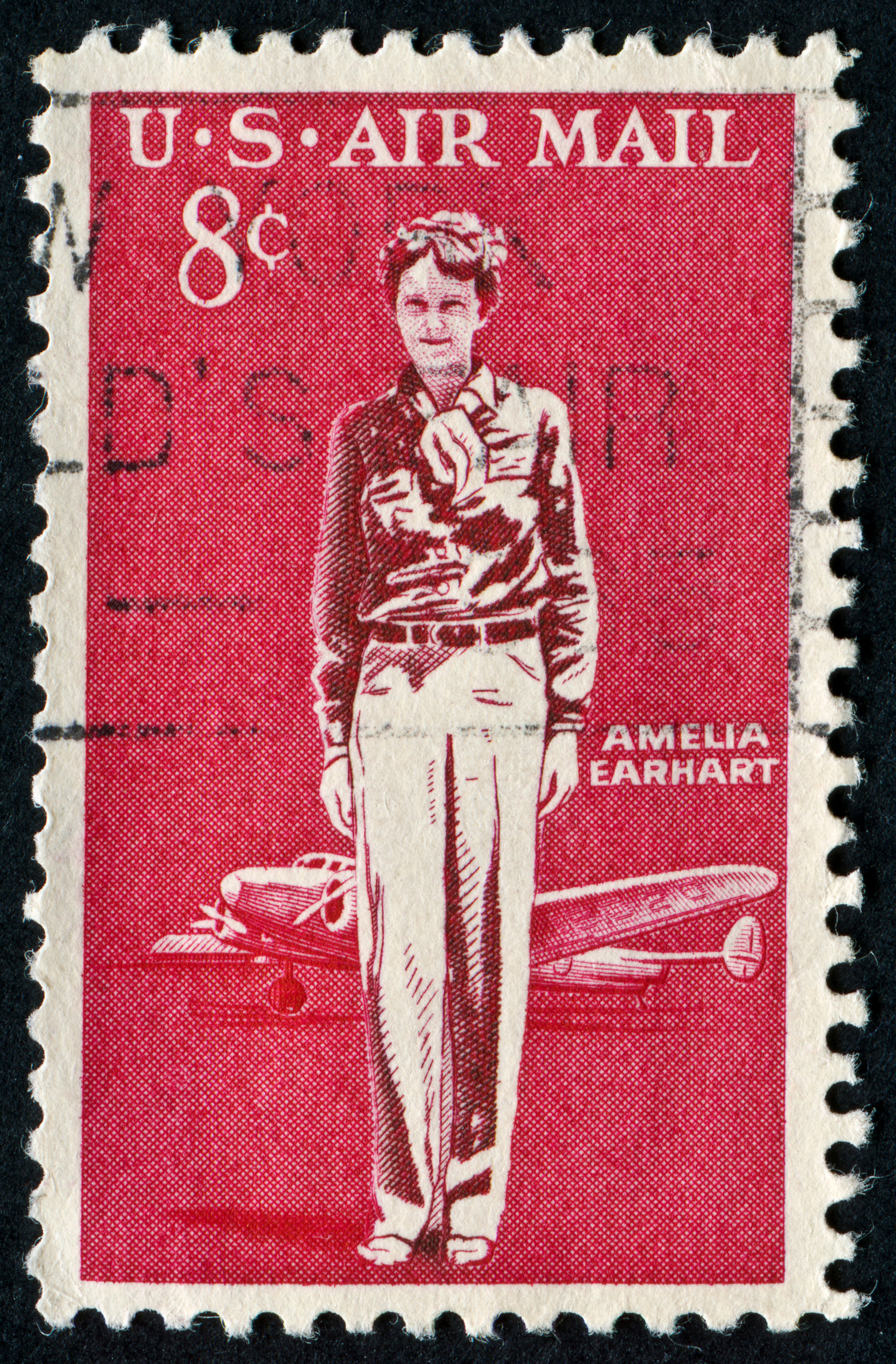
A US eight cent stamp from 1963 featuring Amelia Earhart.
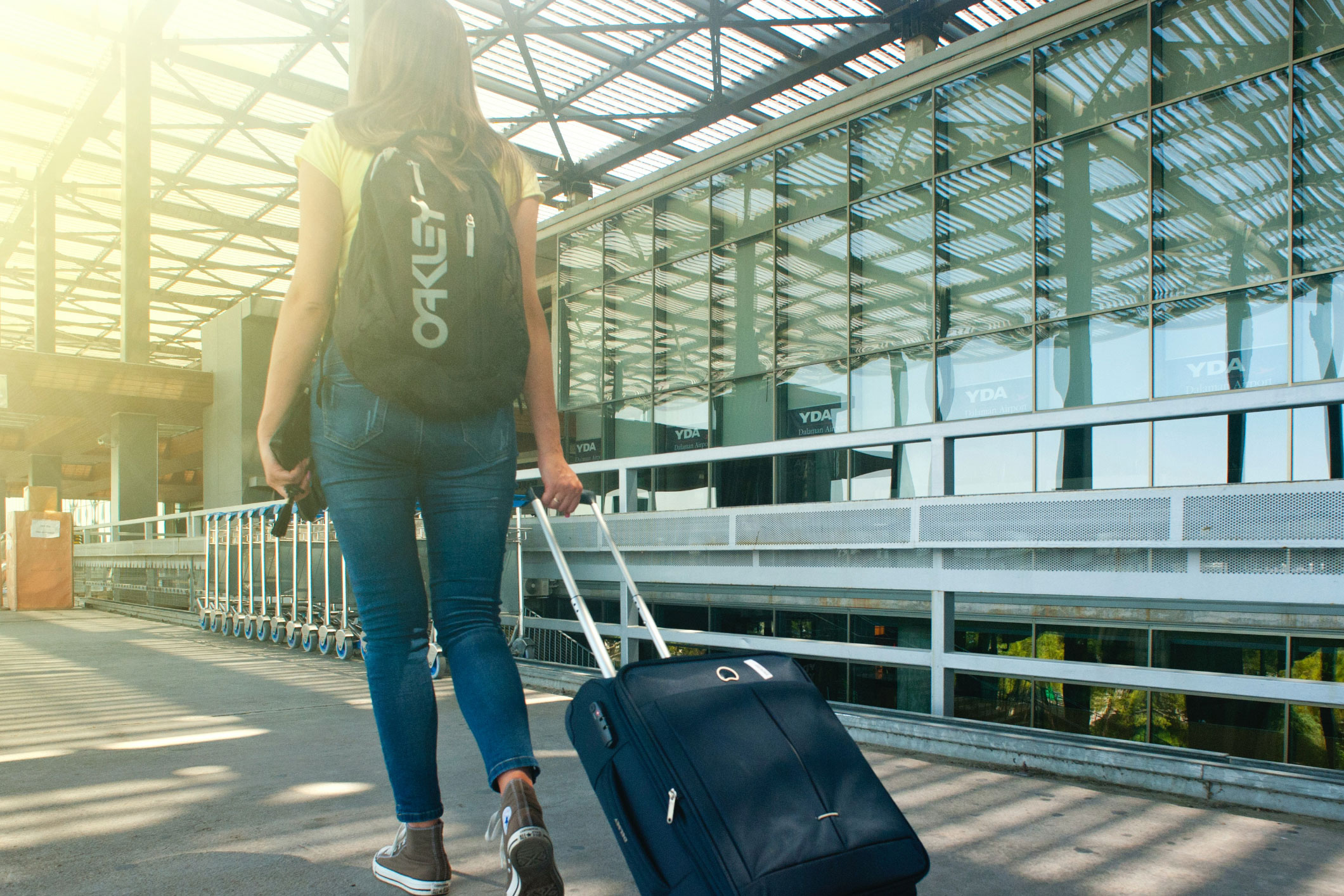
Research Gender Attitudes
Different countries have varying attitudes and perceptions of gender roles, which can affect how female travellers are treated. Research the cultural norms and customs of your destination before you go to understand the local expectations. In some places, women may need to dress modestly or act more cautiously when interacting with certain locals This diligence is not just a matter of curiosity; it’s a crucial aspect of staying safe.
But carrying out research isn’t just about avoiding cultural mishaps. It can also guide your trip towards success. By understanding local etiquette, or knowing how to greet someone properly, you can go a long way in fostering positive relationships, both personally and in business. It is also a good idea to look into local laws and check whether any travel warnings have been issued by your government, for example via Gov.uk or the Australian Department of Foreign Affairs and Trade.
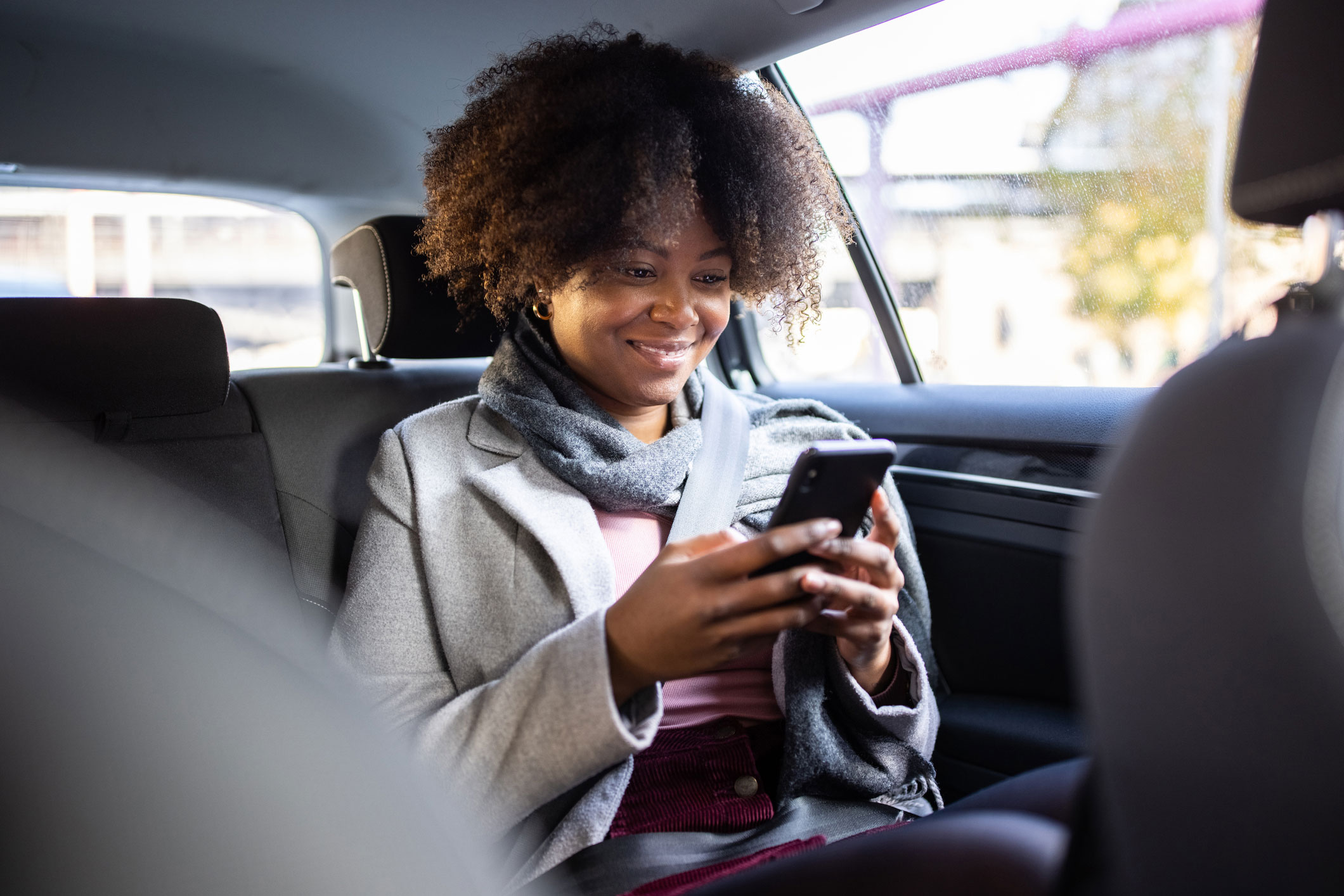
Be Proactive Towards Safety
Safety is a top priority for all travellers, but women may encounter specific welfare concerns. According to a survey from Today’s Hotelier , 2 in 5 women have experienced harassment or unwelcome interactions when travelling. This is particularly true in bars at night – 21% of women who received harassment while on a trip did so while visiting a bar.
It’s important to trust your instincts when out and about. Don’t take any unnecessary risks – that shortcut down the enclosed alleyway might not be worth the 10 minutes it saves – and if using a local taxi service, take precautions such as sitting in the backseat and noting the driver’s details. If you still feel anxious about travelling somewhere unfamiliar, consider packing personal safety items such as a whistle, a personal alarm device, or even a hotel door stopper as an extra layer of security.
the rise in women aged 65 or over travelling solo between 2019-2022
Percentage of us women who have taken a trip without their partner, of women travelled solo because of the freedom and independence it provides.
The above statistics have been taken from research and sources provided by Condor Ferries.
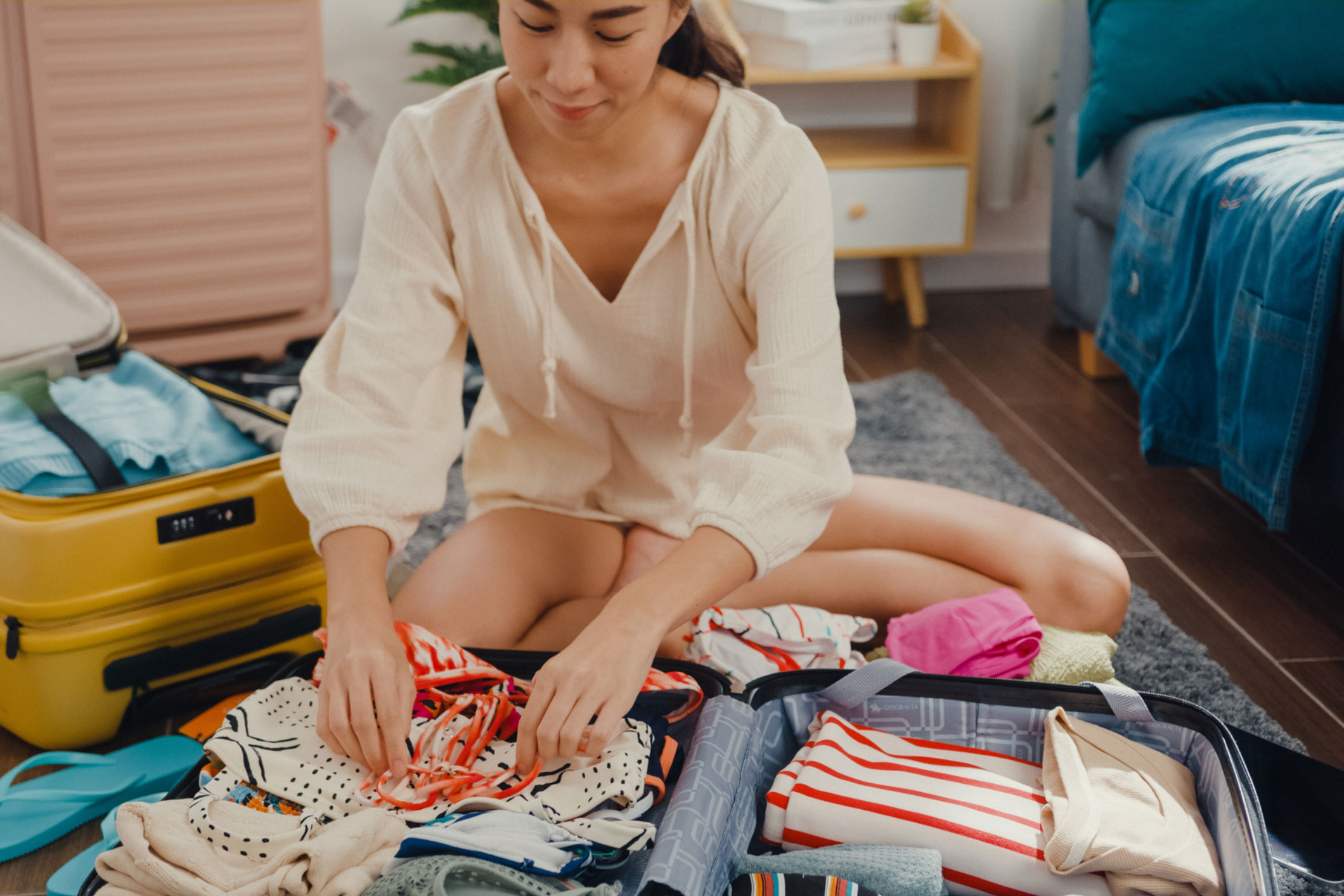
Pack the Essentials
Pack for the situation. No two countries are the same, and your travel case should reflect that. Think about what items you might need to navigate cultural norms (like a headscarf for modesty) or to maximise your safety in areas that might not be particularly accommodating to visitors. Here are a few items solo female travellers can consider packing to ensure a safer journey:
- Travel document copies. P hotocopies of your visa, travel insurance, and important contact information. Consider making digital versions to upload to a Cloud service.
- Travel locks. Bring locks for securing your luggage and lockers in hostels or hotels. A cable lock can also be useful for securing bags to stationary objects.
- Travel appropriate clothing. Scarves or shawls are versatile accessories that can cover your shoulders or head when required. If entering an area of high street crime, consider packing a cross-shoulder chest bag.
- Map tools. Download offline maps and navigation apps to your smartphone. Consider carrying a paper map as a backup and a portable charger for your devices.
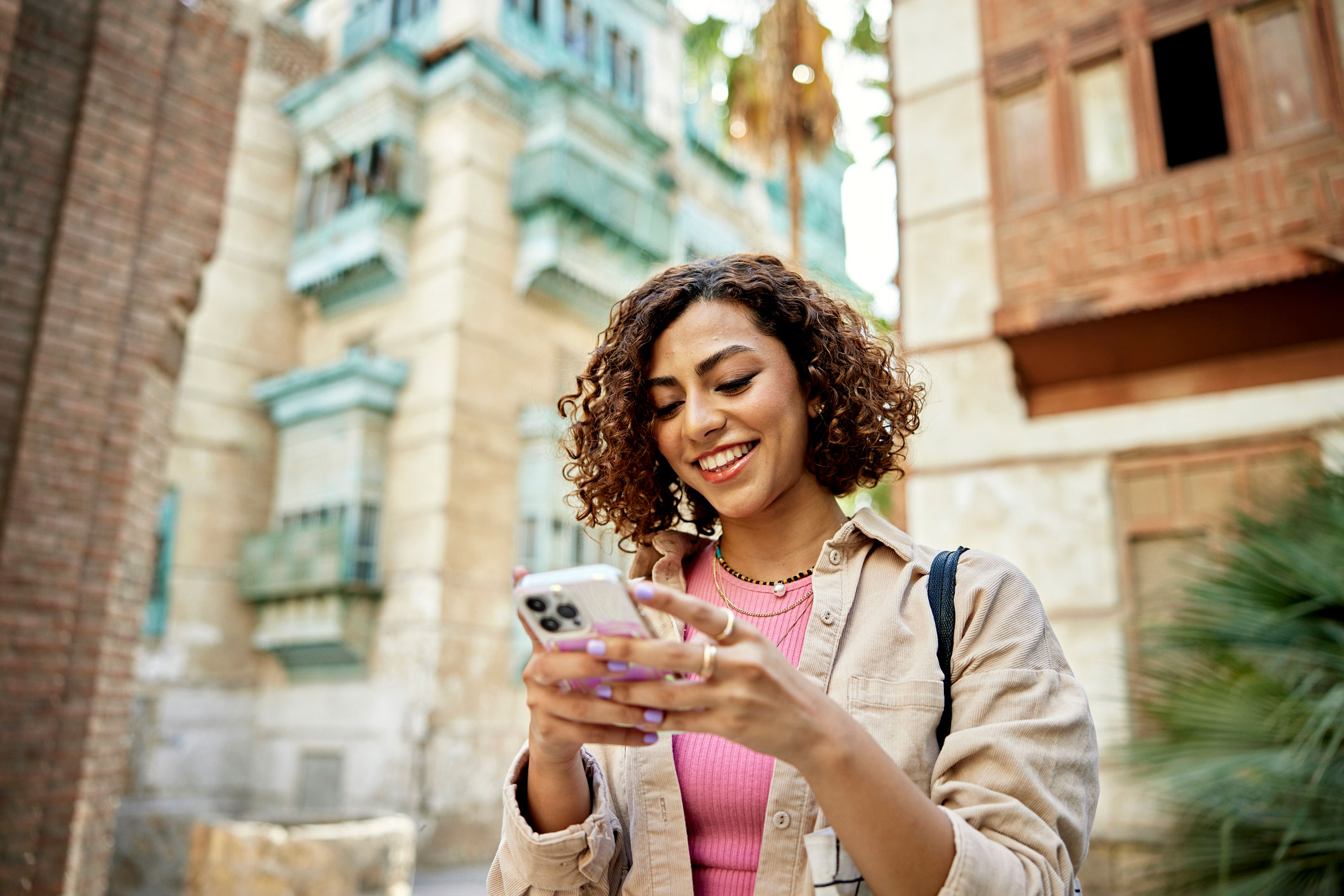
Stay in Touch
Never travel solo without letting people know where you are. Make sure to share your travel plans with your colleagues or travel booker – at Gray Dawes, we are always open to calls from clients who might need help, no matter when or where they are in the world. You never know when that information might come in handy.
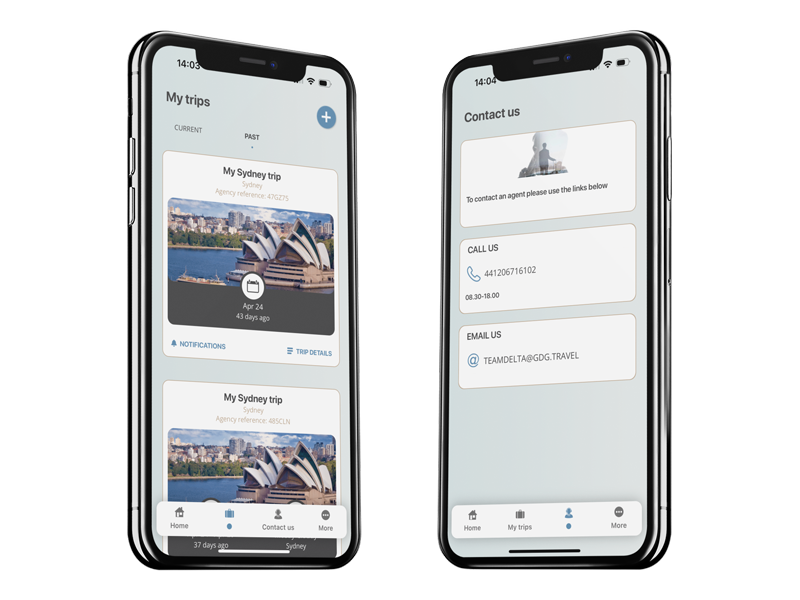
Stay Safe with TripSure
Our Tripsure app offers travellers on-the go access to information about every element of their trip for peace of mind. With a fully interactive dashboard, TripSure provides Travel Managers with current traveller locations, risk alert overviews, flight status and country security advisory ratings. And, if the worst should happen and you need to find and contact your travellers in the case on an emergency, TripSure has a message control centre that allows for SMS, email and push notifications at the touch of a button.
6 Great Cities for Solo Female Travellers to Visit
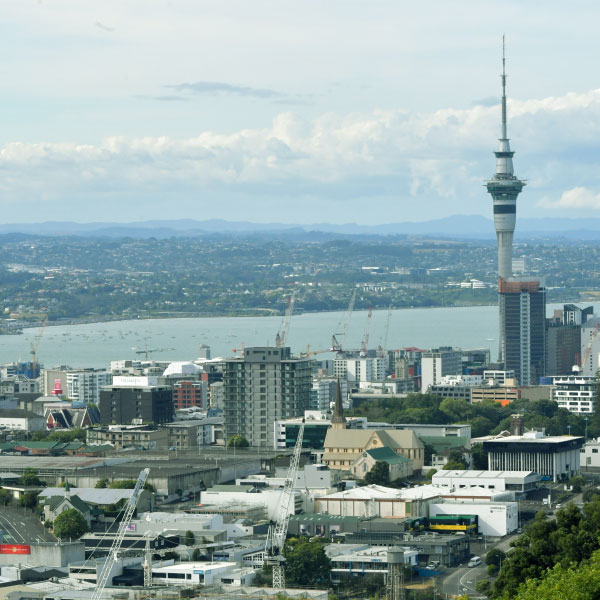
Auckland combines cosmopolitan flair with the breath-taking landscapes for which New Zealand is famed. The vibrant waterfront at Viaduct Harbour is a hub for nightlife, while black sand beaches and volcanic craters lie just a short drive away. It was ranked the 4th most peaceful country in the world, and the safest country in the Asia-Pacific region, in the Global Peace Index (GPI) from the Institute of Economics and Peace.
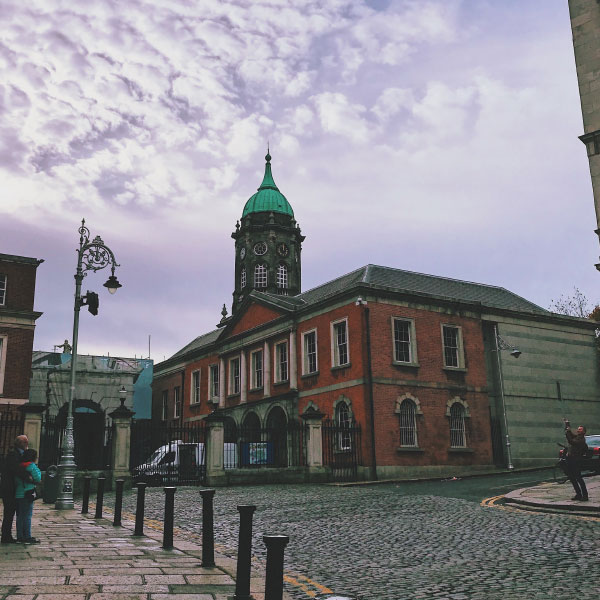
The historic city of the Emerald Isle effortlessly blends tradition with modernity. Wander through the cobbled streets of Temple Bar, home of traditional pubs and music, or cross the iconic Ha’penny Bridge. Dublin is renowned for its warm and welcoming atmosphere, along with its lively culture and friendly locals. In fact, it ranked 2nd in iVista’s list of 20 safest countries in the world for solo female travellers.
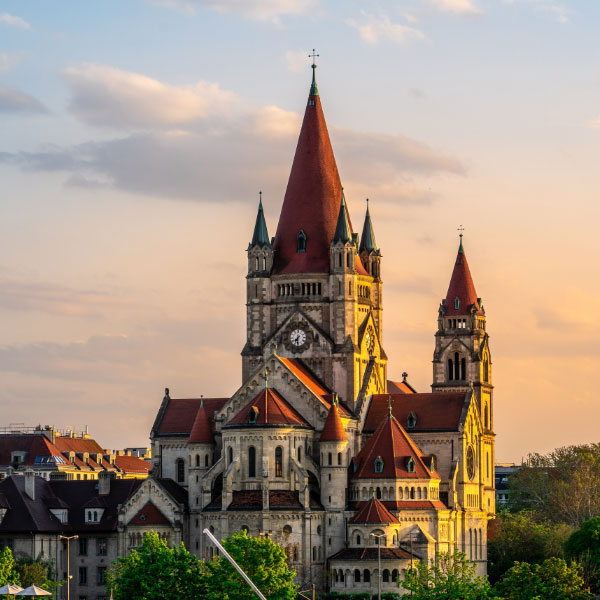
An urban symphony of art and music, Austria’s capital is the perfect destination for those seeking cultural enlightenment. Admire the ornate architecture along the Ringstrasse and the iconic St. Stephen’s Cathedral, or visit the State Opera for a classical concert. It is also recieved an 88% rating from Travel Safe Abroad making it one of the safest capitals for solo female travellers to visit.
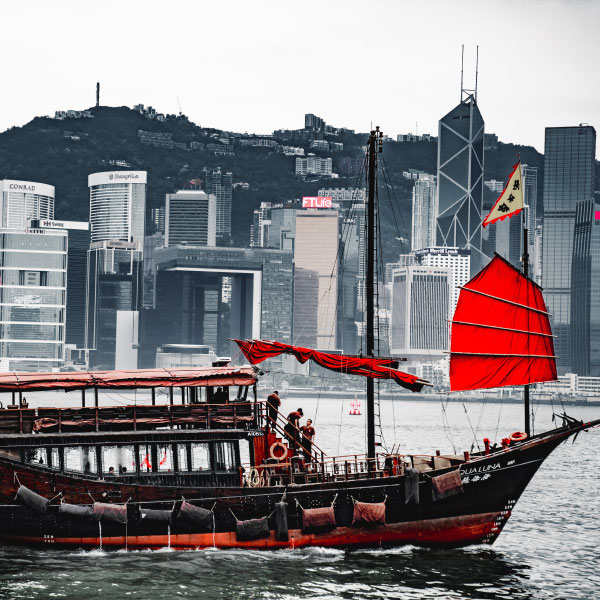
Hong Kong is a city of contradictions. A soaring cityscape nestles between verdant mountains, while bustling streets give way to hiking trails and beaches just a short taxi ride away. As a thriving business hub, Hong Kong is a hive of activity 24 hours a day, and it is extremely safe for women to traverse the streets day and night. However, as one of the most densely populated cities in the world, it is important to be wary of pickpockets in crowded streets.
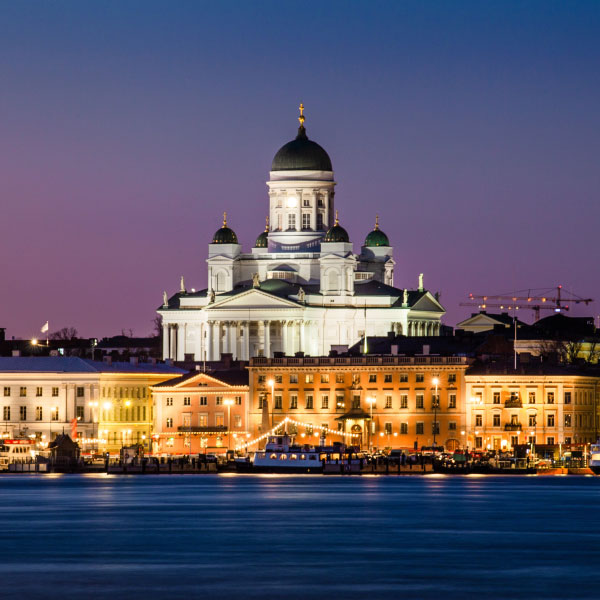
Nestled on the shores of the Baltic Sea, Helsinki is a cultural treasure of the Nordic north. Immerse yourself in Finnish sauna culture, take a stroll along the scenic waterfront promenades, or taste local Karelian pastries. Finland is often ranked one of the safest cities in the world, holding a 95/100 safety index rating from Travel Safe Abroad. Crimes towards female travellers is extremely low, with muggings, assault, and harassment rarely reported, even at night.
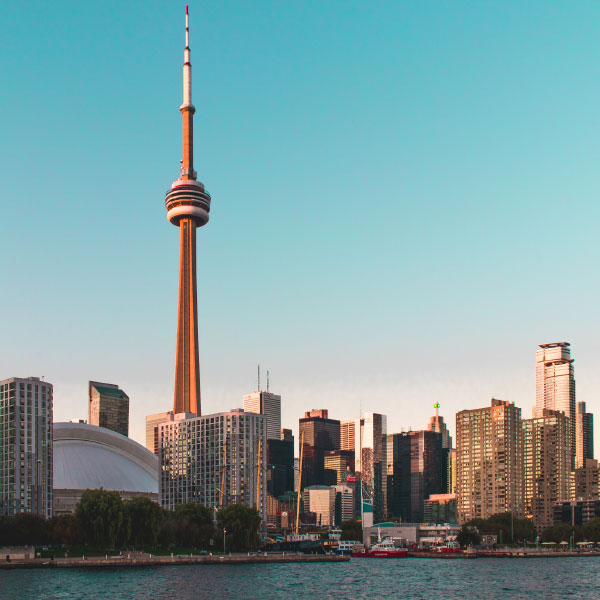
Built on the shores of Lake Ontario, Toronto is a city of breathtaking skylines and welcoming locals. Climb the iconic CN Tower or explore the historic Distillery District’s charming cobblestone streets and Victorian-era architecture. Then top it all off with some savoury poutine – a Canadian delicacy. Toronto is incredibly safe for solo female travellers too; according to the 2021 safe cities index from the Economist, the city was ranked as 2nd safest in the entire world.
In Conclusion
Female solo travel can be an incredibly enriching and transformative experience. By understanding and preparing for the unique challenges that women may face, packing wisely, staying informed, and utilising resources such as our TripSure app , you can embark on your journey with confidence and make the most of your trip while staying safe.
It is also important to remember that travelling solo is not just a series of potential dangers, but a great opportunity to learn and grow as an individual. It allows you to experience new cultures and understand how people around the world interact and do business. So next time you’re offered the opportunity to hop on a plane and take a trip abroad, why not say yes?
Related Articles

A Day In The Life of a Senior Sales Manager
Sep 10, 2024
With a sales career that started in finance and blossomed in business travel, Phil Gardener is an experienced industry veteran with plenty of stories to tell. In this article, we chat with Phil about his day-to-day responsibilities as a Senior Sales Manager at Gray Dawes, his ultimate career highlights, and a random appearance on a British TV dating show…

San Francisco: A Business Traveller’s Guide
Sep 9, 2024
Are you planning on travelling to San Francisco for work? In this comprehensive guide to San Francisco for business travellers, we delve into navigating the city’s unique corporate landscape, offer our top tips for getting around, and pick out our top 3 things to see or do to make your trip unforgettable.

The Power of Equality, Diversity & Inclusion in Business Travel
Sep 6, 2024
Is DEI the Cornerstone of Success in Business Travel?At Gray Dawes, we believe that an inclusive workforce in which everyone feels valued is not only a vital cog in the running of a thriving organisation but a good blueprint for providing our clients with better...
JOURNEY NOW …
We are always available, head office, privacy overview.
Female Business Travellers

Podcast – A Global View of Female Business Traveler Safety – Episode 2
On episode two of The Business of Travel, GBTA talks female business traveller safety following International Women’s Day last week.
Podcast: How Can Managed Travel Programs Address the Safety of Female Business Travelers?
For this week’s episode, The Business of Travel revisits an important topic – the safety of women business travelers. In the opening segment, GBTA President Christle Johnson talks GBTA priorities and highlights from a recent GBTA research study on female business travel safety conducted in partnership with WWStay. Next up, WWStay’s Dawn McGowan dives deeper into…
- GBTA Convention 2024
- GBTA On Demand
- Member Dashboard
- Member Directory
- GBTA Leadership
- US Chapters
- Sustainability
- Industry Job Openings
- Sponsor & Exhibit
- Past Events
- Global Equity Program
- GBTA Committees
- GBTA Chapters
- GBTA Ladders
- Member & Networking

What do Female Business Travelers do Differently from their Male Counterparts
While not everyone fits into a stereotype, and no one practice is better than another, it is important for travel managers to know that female business travelers do things somewhat differently than their male counterparts. Here are some of the differences in travel habits that tour operators and researchers have uncovered:
Women Pack Sooner and Bring More Stuff
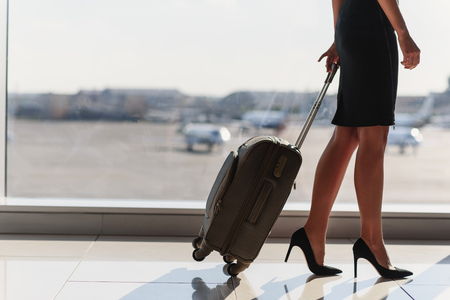
Typically, a female business traveler will care a lot more about what they bring on their trips than men in the same office. Statistics from hotel research show women:
- Care more about what they pack.
- Plan their outfits ahead of time.
- Pack twice as much as men.
- Get their suitcases packed more than 24 hours ahead.
What this means for a company travel manager is that they can eliminate stress from their female business travelers by making sure they know their travel arrangements as far ahead as possible so they can pack accordingly and feel prepared.
Female Business Travelers Care More About Safety
When traveling alone on a business trip, women are much more concerned about the hotel that they are staying at and other travel arrangements. Since a business is responsible for the safety of their business travelers, using a travel management company to arrange travel can be an additional level of security for female travelers because:
- Someone is available to call 24/7 in emergencies.
- The management company will handle re-routing travel in case of interruptions and delays so the traveler or company doesn’t have to worry.
- Hotels, flights, and other transportation will be arranged with highly-rated services that have been vetted by in-country travel agents.
- Secure transportation arrangements can be made for in-city travel to business meetings.
Female Business Travelers May Spend More
A survey by International Currency Exchange (ICE) found that women tend to spend more money while traveling. While some of this spending may be personal money used for shopping, a company might want to make sure that business travel expense policies are clear so that all travelers know what is expected of them. Travel management by GTI can help a company manage business expenses and track ways to make more effective use of business expense money.
Female Business Travelers Feel Under-Prepared
According to the Women in Business Travel Report, one third of women encounter sexual harassment while traveling and over two-thirds of women feel unprepared to deal with what they encounter. Corporate travel management can help address these needs by:
- Making sure travel policies prepare all travelers for the possibility of crime while traveling.
- Ensuring suppliers for travel pay particular attention to the needs of female travelers.
- Providing live, personal assistance to travelers worldwide day and night by phone or email.
Assisting Female Business Travelers is Important
Business travel by women is increasing. According to a survey by Maiden-Voyage, 47% of female travelers are traveling on business and 80% of travel is managed by women. In a risk-filled world, corporations need to be mindful of caring for the needs of all their employees. Choosing GTI Corporate Travel agency to manage your corporate travel is a wise choice to make sure that female business travelers get safely to their destinations and safely home.
You might also like
News categories.
- Airlines and Airfare News (5)
- Business Cost Cutting News (1)
- Business Travel (55)
- Corporate Travel News (2)
- Event Travel (2)
- Small Business (1)
- Sports Travel (3)
- Travel Issues & Tips (11)
- Travel Policy (4)
- Travel Risk Management (1)
- Travel Tips (12)
Recent Posts
- Tripleseat: Business travel and event bookings to increase
- New COVID-19 test rules for travellers take effect late Wednesday | Watch News Videos Online
- Airlines and Airfare News
- Business Cost Cutting News
- Business Travel
- Corporate Travel News
- Event Travel
- Small Business
- Sports Travel
- Travel Issues & Tips
- Travel Policy
- Travel Risk Management
- Travel Tips
ANNOUNCING NEW BOOK ON THE ROAD - INSPIRE & TRANSFORM YOUR LIFE
Road warrioress - simplify. be curious. seek joy
720.520.9854
- On the Road Description
- Inspiration
- Travel Products
Moraine Byrne "Road Warrioress"
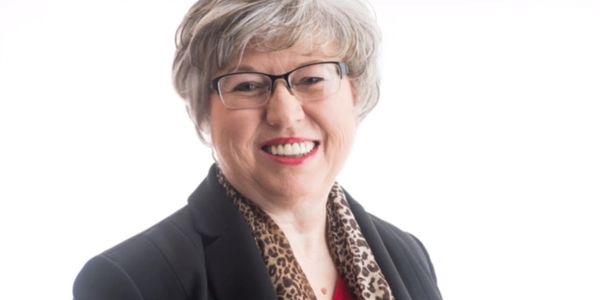
My Background
Started my career in broadcast journalism with a natural sense of curiosity. Took opportunities to explore careers and found my passion in senior living and aging services. Established my consulting company in 1993, traveling coast to coast every week for 20+ years. (Carry-on luggage only.) Have worked in all 50 states. All while being a daughter, wife and mother. A true Road Warrioress.

Work hard. Cherish life.
I come by my work ethic and persistence naturally. My grandparents, extended family and parents all demonstrated the importance of working hard and smart to build a good life. They also instilled in me a healthy respect for work and life balance, and the importance of family and friends.

Be adventurous.
To be a successful woman business traveler, it helps to have a sense of adventure. Every trip and each day on the road are adventures. And if you can squeeze in some free time for yourself, do it. Like my dog sled ride in Colorado. Make some memories!
Business travel can feel all-consuming. A Road Warrioress makes time for fun and positive experiences beyond work.
Moraine's first book-- Road Warrioress
Packing tips, nutrition and meals.
There are different theories on packing and I've likely tried them all UNTIL I found the perfect solution.
The secret to air travel is to "go with the flow" and to learn the best tips to make your time on the plane comfortable.
Health and Precautions: Covid 19 Aware
Learn how to avoid the temptation to eat the sweet treats from the hotel and how to skip the second glass of wine offered. Gain tips on how to eat at regular hours in the midst of heavy travel days.
Take precautions when traveling at all times.
The Road Warrioress shares relevant tips for how to remain safe & healthy while traveling by plane, train and in hotels.
Travel and technology
Safety and meeting people.
Technology changes fast and it's tempting to want the latest gadget, software or app. Use the checklist to make your buying decisions.
Women business travelers understand the need to be safe on the road. Tips and life stories from Moraine give you confidence to be safe and still enjoy meeting people.
RELEVANT DURING COVID 19
life on the road.
Road warrioress book - for women business travelers.
As women business travelers, we know that life on the road can be exhausting, exhilarating, exciting, frustrating, fulfilling and lonely... all in the same day.
Moraine Byrne "Road Warrioress" writes from experience and shares her tips and life stories to help all women become even more successful in their travel.
Road Warrioress Book Available Now
Order your personal copy now. Amazon or at your local bookseller.
Snapshots along the way.
Speaking & virtual presentations. contact moraine., get in touch.
This site is protected by reCAPTCHA and the Google Privacy Policy and Terms of Service apply.
Book Moraine Byrne "Road Warrioress" as a speaker.
The principles of being a Road Warrioress are relevant today following the pandemic. Learn to simply. Be curious about other people and the world around you. Seek joy in all things.
I also provide mentoring and coachiing for woman at all stages of life.
Contact me today to speak at your next networking event, business meeting, or for a private consultation. Affordable rates and fees. Nonprofit discounts.
I am happy to meet virtually or in person.. Contact me directly.
Road Warrioress
Denver, Colorado, United States,
Privacy Policy
Privacy Notice
This privacy notice discloses the privacy practices for roadwarrioress.com. This privacy notice applies solely to information collected by this website.
Information Collection, Use, and Sharing We are the sole owners of the information collected on this site. We only have access to/collect information that you voluntarily give us via email or other direct contact from you. We will not sell or rent this information to anyone.
We will use your information to respond to you, regarding the reason you contacted us. We will not share your information with any third party outside of our organization, other than as necessary to fulfill your request, e.g. to ship an order.
Unless you ask us not to, we may contact you via email in the future to tell you about specials, new products or services, or changes to this privacy policy.
Your Access to and Control Over Information You may opt out of any future contacts from us at any time. You can do the following at any time by contacting us via the email address or phone number given on our website:
- See what data we have about you, if any.
- Change/correct any data we have about you.
- Have us delete any data we have about you.
- Express any concern you have about our use of your data.
If you feel that we are not abiding by this privacy policy, you should contact us immediately via email .
Copyright © 2018 Road Warrioress - tips and life stories from a woman business traveler - All Rights Reserved.
Powered by GoDaddy
- Español (AR)
- Português do Brasil
- Bahasa Indonesia

Understanding female business travellers
CEO & Founder, Maiden Voyage
As more women take up senior positions, the female traveller is one of the fastest growing segments of the business travel market. With an overwhelming number of all travel decisions made by women , it makes great business sense for hotel and accommodation providers to listen to and address the needs of this influential customer segment.
In fact in 2011, the Cornell School of Hotel Administration published a significant report, ‘Creating Value for Female Guests’ . It concluded that those hotels that catered to the specific needs of women travellers had a positive impact on the bottom line.

'The wants and needs of female travellers fall predominantly into two categories: comfort and safety'
Female business travellers are loyal to a good hotel or property, it’s one less thing to think about in the midst of our busy lives and it can become a welcome ‘home-from-home.’ With the combination of business and leisure no longer a novelty, there’s a really positive upside for accommodations who get it right with the potential for business travellers to extend their trip or even come back with the family.
So what do women really want from their accommodation providers? The wants and needs of female travellers fall predominantly into two categories: comfort and safety.
From a comfort perspective, we are looking for amenities that we are used to in the comforts of our own homes. A good night’s sleep, fluffy towels and a decent shower are of course the basic minimum requirements for any guest, but based on my own personal experience, these are also appreciated:
- Good quality toiletries - no combined hair and body wash please!
- Hangers that come out of the closet so that they can steam an outfit in the bathroom
- For those that use them, good quality hairdryers so we don’t carry the additional weight of bringing our own
- Plug sockets close to the mirror so we don’t have to be a contortionist
- Healthy room service options and discreet dining areas so we don’t feel uncomfortable
Feeling vulnerable
In research conducted in 2015 by Maiden Voyage into issues concerning female business travellers, we found that 51% of women said they had at some point felt vulnerable when staying in a hotel, many admitting to having put a chair behind the door to give them peace of mind.
Interestingly, TripAdvisor has taken a stance against sexual harassment and assault in hotels by badging hotels for three months where an incident has occurred. This comes after the recent explosion to hit the press, shining a spotlight on the years of unreported sexual harassment. Millions of women came out in force on social media as the #MeToo campaign went viral.
Of course we know that the majority of hotel managers would be mortified and appalled if any of such incidents were to happen on their watch, but the majority of incidents are with a few key considerations.
Thinking of security
Guests, and in fact many hoteliers and properties, don’t realise that the comforting clunk of the door lock doesn’t automatically mean that the room is fully secure. A number of staff may have access to a master key and it's not uncommon for hotels to inadvertently double-book a room, so a door with two independent locks is going to prevent embarrassment to both guests and mitigate the risk of a potentially more serious incident.
A simple failure to discreetly communicate the room number to a guest is a major irritator to lone female travellers.
Room allocation
We know from feedback from our travellers that they prefer not to take an adjoining room, it’s an extra door lock for them to think about but also sometimes uncomfortable to be able to hear the occupant next door.
The hotel and accommodation sector is teeming with passionate individuals keen to make a living in the business of being hospitable but we can easily take our businesses for granted. I invite you to revisit your own property and really view the experience from both a safety and comfort perspective. It could save your reputation and skyrocket your bottom line.
If you like this, you might also want to read:
- LGBTQ+ friendly travel: the things you should know
- The Student Hotel Founder on ‘hybridisation’ in hospitality
- Spotlight on: the rise of solo travel
What do you think of this page?
Carolyn Pearson
Thinking of security and being discreet with room allocation are just a couple of simple tips that could make for a better experience for female business travellers A report conducted by the Cornell School of Hotel Administration concluded that catering to the specific needs of women travellers had a positive impact on the bottom line
Related content

How short-term rentals can appeal to business travelers

Understanding the nature-driven traveler

Spotlight on: business traveler wellbeing
Female business travelers face special challenges

In an increasingly global marketplace, crossing borders for business has become routine.
Navigating an unfamiliar country or culture can be difficult. Particularly for the roughly 40% of business trekkers who are female, it may take extra steps to stay safe.
Joe Bates of the Global Business Travel Association observes that women have a greater focus on safety and security. "It would be things like, 'Is the hotel located in a safe part of town? How do I know the taxi company I'm using is a reputable one?' ... Things of that nature tend to resonate much more with women," than with male travelers, Bates says.
To make sure a meeting or presentation goes well, it pays to know the differing codes of behavior sometimes expected of women, says Joni Morgan, director of analytic personnel for iJET, a risk management company that helps companies protect their employees traveling overseas.
"We suggest that they do research on the country,'' Morgan says. In some cultures, for instance, it's not appropriate for a woman to initiate a handshake. "In Afghanistan, it's considered an insult to show the bottom of your shoe, so when crossing your legs, you want to be aware of that. ... You don't have to be an expert on the country where you're traveling, but certainly know some of the common pitfalls that might make your meeting less than effective.''
Beyond business protocol, female travelers should be well-versed in what safety risks they might face on the road, whether it's a high incidence of reported rapes in an area or a rash of kidnappings, Morgan says.
Some precautions can be taken even before heading to the airport, Morgan says, such as inputting contact information for the U.S. consulate or embassy in your mobile phone and possibly switching out your laptop for one that is "clean'' to minimize an outsider accessing critical corporate information.
"Many ... travel with a clean laptop and clean cellphone and just carry a thumb drive with important information,'' she says.
Don't travel with your most luxurious luggage, and it's best to carry a purse equipped with a heavy strap that can be worn across the body. When eating at a restaurant, instead of casually dangling the purse on your chair, keep it on your lap or at your feet, strap wrapped around your ankle, Morgan advises.
The smallest things matter. "Some people don't think about (their) luggage tag,'' she says. "Make sure it's a covered tag, so you're not advertising your address at the airport.''
Although you may be racing on the plane to find the first available bin to stuff your carry-on, try to locate one in your line of sight, and place the bag with the zipper down to prevent someone from rifling through its contents.
In more turbulent locales, it's advisable to set up transportation ahead of time with a designated driver. Once you arrive at your hotel, precautions should include not having your room number said out loud and making sure you stay on the second to seventh floors. The first floor may be less secure, and fire emergency vehicle ladders don't always reach to the eighth floor.
Once you're out and about, heading to a meeting or just trying to do a little sightseeing, remain vigilant.
"We think of worst-case scenarios (such as) sexual assault, kidnapping, but probably the more common things that women will encounter is theft and scams and sexual harassment,'' Morgan says. Chart your route beforehand, so you're not conspicuously perusing a map on the street, and wear clothes that allow you to fit in.
"If a majority have their hair covered, cover your hair,'' she says. "You may not agree with it, but in terms of your own safety and not standing out as a foreigner, it's best to mimic what the other women are wearing.''
Many safety tips are useful for men as well, Morgan notes. "A lot of them are common sense. But it's especially important for women who are traveling alone.''
Kelli Stephenson, a vice president of global sales operations who is a member of USA TODAY'S Road Warriors panel, says, "For the most part, I do not take extra precautions. Part of the joy of traveling is experiencing local culture, and I largely feel safe as I wander and interact with a city''
Still, she says, "for many places I go, the most important thing is to know how you're going to get from one place to another and be comfortable with that. Pre-booking cars in places like South Africa, Brazil (and) China is a must for me.''
Kristine Lacoste of Madisonville, La., another member of USA TODAY'S panel of frequent travelers, has several tips for staying safe.
"Being aware of my surroundings and not standing around for long periods of time are key steps for safety,'' says Lacoste, managing editor of Pets Adviser, who uses every lock on her hotel room door. She makes sure her key card and cash are not exposed and prefers a large messenger bag to a purse while on the road.
Vickie Salter, a Road Warrior who lives in Phoenix and is a clinical specialist in the medical device industry, won't accept a hotel room on the first floor. "I never get off elevators at the hotel with a man walking behind me," she says. "I'll find a reason to stop in my tracks until he goes by me, so he doesn't know where my room is.''
In many cases, a business trip may be completely uneventful. But "a woman should trust her instincts,'' Morgan says. "If she feels uncomfortable, there's likely a reason.''

With the increase in the number of women in businesses, so are the risks associated with them during business travel. Statistics reveal a stark reality: while striving to maintain a work-life balance during business trips, 31% of women refrain from venturing out alone at night, and a significant 46% consistently update family and friends about their location, emphasising the extra precautions women often take compared to their male counterparts.
With that in mind, our focus is on ways to improve and enhance the business travel experience for women, specifically around the safety of this select group of travellers. Following the safety tips below will help you travel confidently and keep you safe.
Key Findings from the Global Survey
According to a survey of business travellers commissioned by World Travel Protection, more than one in 10 female business travellers (12 percent) said they had experienced a negative incident, ranging from minor theft to assault when travelling. Almost one in five (19 percent) feel their organisation should “act with women’s safety in mind,” like ensuring flights don’t arrive late at night.
One in five female business travellers (21 percent) said they opt to stay in hotels that provide accommodation for solo women travellers, and a similar proportion (19 percent) resort to outward signalling like wearing a wedding ring (whether married or not) to avoid unwanted attention.
Close to one in three (31 percent) said they don’t venture out alone at night, compared to 18 percent of men. And up to 46 percent always stay in close touch with family and friends so that their whereabouts are known, versus 36 percent of men.
The fact that almost one in five women feels that their organisations should prioritise their safety indicates a significant gap in the current travel services landscape.
Practical travel safety tips
- Keep Your Plans Private: With the rise of social media and the impulse to share, it’s tempting to post about upcoming trips or check into glamorous hotels. However, avoid broadcasting your travel plans, including accommodation details. This ensures your whereabouts remain private, minimising any risks.
- Digital Privacy: Disable location services on apps that don’t require it and avoid using public Wi-Fi for sensitive tasks, such as online banking.
- Choose hotels that offer extra security: Choose your hotel’s location in a safe area, and make sure extra security measures like deadbolt locks, finger scanning and dedicated women’s floors are available
- A hotel with security measures like a deadbolt lock, fingerprint scanning, peephole, and surveillance cameras can help you feel safer.
- Steer Clear of Risky Areas: Every city has its less reputable spots. Make it a point to avoid ‘seedier’ areas, especially during nighttime.
- Lean on Local Expertise: Your hotel’s staff will likely be well-versed in the locale. Don’t hesitate to ask your hotel manager or concierge for advice on ‘safe’ versus ‘unsafe’ local areas. They can also recommend reputable transport options or local tours that cater to solo women travellers.
- Limit the Luxe: Displaying expensive jewellery, gadgets, or designer goods can make you an attractive target. It’s best to leave the “bling” at home to reduce risk.
Rennies BCD Travel’s Commitment
At Rennies BCD Travel, we pay attention to this information because it underscores our promise to exceed expectations. We recognise that women’s experiences differ across cultures, identities, and regions, and we’re committed to addressing these unique challenges.
We provide the following solutions to take care of the safety of the ladies:
- The TripSource® Mobile app is the ultimate travel companion, and a standout feature is that not only are travellers notified of risks, but they can also check in using the ‘I’m Safe’ button within the app to notify their travel managers immediately. The app enables us to locate travellers, an imperative particularly in countries that have fewer legal rights or less equality socially, which poses an increased risk to women travellers.
- The APP also allows travellers to share their trips with others to keep them updated on any changes to their itinerary, providing another layer of security.
- Our consultants advise women travellers to select accommodation in hotels that provide separate floors reserved exclusively for ladies.
- We take precautions to book female travellers on flights that arrive during the day so they are not left in deserted carparks or airports where they are in danger.
In a world where travel promises new experiences and opportunities, safety should never be a secondary concern. As we commemorate Women’s Month, Rennies BCD Travel reaffirms its unwavering commitment to championing the cause of women travellers. We encourage everyone, from organisations to individuals, to prioritise safety and actively make the world more hospitable for all travellers, regardless of gender. Together, we can pave the way for more inclusive, safer travel experiences for everyone.
Get to know us Our point of view Press releases Awards & recognition
Travel management Stay by BCD Travel Intelligence & analytics
Knowledge center Case studies Infographics Videos
Stay tuned Connect on LinkedIn Follow us on Twitter Subscribe our Newsletter
Customer Service Contact us
Legal Privacy Policy
Useful links ASATA International SOS Iatatravelcentre.com Dha.gov.za Tripsguard.com
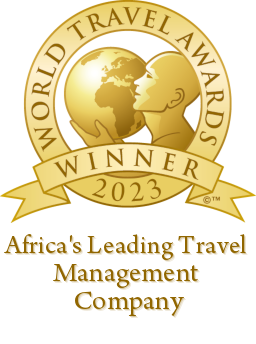

What are you looking for?
45+ female travel statistics (2024).
Female travel is not only increasing in popularity, but it is also becoming the driving force for growth in the travel and tourism sector worldwide.
As more women join in the phenomenon of seeing the entire world, the number of female clientele and solo travellers have only risen.
Did you know that more than 60 thousand women travelled alone between 2018 and 2019 ?
Or that the number of pins for ‘solo female travel’ on Pinterest have seen a dramatic increase of 350%?
Research also says that females make 80% of all travel-related decisions when planning and booking trips.
And with over $15 trillion of spending power , women are known to spend more than men when they are travelling.
Today, we have compiled some of the most interesting and essential statistics related to female travel.
From the popularity of solo travel and general demographics, to what inspires women to travel and the top travel destinations .
Sources: I have written the source after each stat, but you can scroll down to the bottom of this post for a full list of the sources and articles that have been used in this roundup.
Travellerspoint
Common questions about female travel
What gender travels the most.
64% of travellers worldwide are female, while only 36% are male.

How common is solo travel?
73% of travel agents agree that women are more likely to travel solo than men. Over 60,000 women have travelled alone between 2018 and 2019.
What is the average income of female travellers?
Women has a spending power of $15 trillion. Plus, 54% of well-to-do travellers who make more than $250,000 are female.
How much do women spend on travel?
The average women spend more when travelling than men, with 15% spending over £200 per day.

Female travel statistics key stats
- Between 2011 and 2024, Google searches for ‘solo female travel’ have grown by more than 11x
- Female travellers make four-fifths of all travel decisions
- More than half of well-to-do travellers (54%) who make more than $250,000 are female
- The majority of women travellers are in the 25 to 39 age bracket. This makes up 46% of all women travellers
- Female shoppers spend an average $295 per year on outdoor equipment
- Women usually spend more when travelling than men, with 15% spending over £200 per day. Only 5% of men agreed with this statement
- Pinterest has seen a massive growth of 350% in women users pinning articles related to ‘solo female travel’
- Three in four travellers taking cultural, natural, and adventure trips are women
- The top 5 safest countries in the world are Iceland , New Zealand, Denmark, Portugal , and Slovenia
- The best destination for solo women travellers would be Japan
Solo female travellers
How popular is solo female travel these days?
1. Solo traveller bookings rose by 42% between 2015 and 2017.
[HostelWorldGroup]
In the past few years, the interest in solo travel has only risen. Online bookings increased by 42% in 2017 compared to the two previous years.
2. This consisted of a 45% increase among solo female bookings, in comparison to just 40% in male bookings.
More portion of this increase came from solo female travellers than men.
3. Women are generally more likely to travel solo than men, as 73% of travel agents have reported.
[Gutsy Traveler]
According to almost three-fourth of travel agents, women are more likely to go on a solo trip than men.
In fact, 26% of millennial women have travelled alone .
4. Over 60,000 women have travelled alone between 2018 and 2019.
In fact, more than 60 thousand women went on a solo trip between 2018 and 2019 alone. A solo trip comes in many forms, including travelling in an RV and backpacking .
5. 47% of travellers at O.A.T. are signed up as solo. Plus, 85% of this figure are women.
6. between 2011 and 2024, google searches for ‘solo female travel’ have grown by more than 11x..
[Google Trends]
The interest in solo female travel had dramatically increased over the last 13 years, with searches for ‘solo female travel’ multiplying by more than 11x .

7. In 2016 alone, 68% of female travellers had taken a trip alone.
[CNTraveler]

8. The demographics of SoloTraveler, an online community for solo travellers, are 55% women and 45% men.
[SoloTraveler]
Female solo travel is becoming so popular that more than half of the readership of an online solo travel community are women.

Female travel demographic
What is the average female traveller like?
9. Experts conclude that female travellers are causing the explosive growth in the industry as they make four-fifths of all decisions.
Women have been a major driver of growth in the travel and tourism industry as they make 80% of all travel decisions, whether for solo female travellers or those travelling with partners, friends, and family .
10. Only about 11% of female business travellers own a business, while 15% of male business travellers are business owners.
[TravelDailyNews]
This shows that there is still a gender discrepancy in the professional or business world.
11. More than half of well-to-do travellers (54%) who make more than $250,000 are female.
[Condor Ferries]
Women with an income of over $250,000 are more likely to go travelling than men who make the same amount.
12. The average age for a female traveller in the UK is 57 years old.
The average UK female traveller is 57 years old .
13. The majority of women travellers are in the 25 to 39 age bracket. This makes up 46% of all women travellers.
The most popular age for a female to be travelling is between 25 and 39 years old.
Female travel spending statistics
How much do female travellers spend?
14. Women have an astounding spending power of $15 trillion.
This means that women collectively have $15 trillion in their pocket to spend, which can be a significant driver in the travel sector.
15. Outdoor Industry Association finds that female shoppers spend an average $295 per year on outdoor equipment.
16. from the 67 million women who would have made travel decisions in 2018, they had a potential of spending $19 trillion..
[GirlPowerMarketing]
17. The International Currency Exchange (ICE) said that women usually spend more when travelling than men. 15% of the female respondents claimed they spend over £200 per day. Meanwhile, only 5% of men agreed with this statement.
The trend is that women usually spend more than men when travelling.
Social media & technology among female travellers
How do female travellers use social media?
18. It’s more common for women to share about their travels on social media than men. In the UK, the statistics is 69.3% for women and just 62% for men.
More women turn to social media when travelling to share their experience, while fewer men do so. The action often includes taking travel photos .

19. Pinterest has seen a massive growth of 350% in women users pinning articles related to ‘solo female travel’.
A huge inspiration source for travellers everywhere, Pinterest saw a surge of 350% in the number of pins for ‘solo female travel’ articles, especially by women users.
20. Meanwhile, the search for ‘solo travel’ on Pinterest in general had increased by 600% in 2018.
21. 70.3% of millennial travellers use mobile apps to book their transport, while only 57.9% of generation x does so..
This shows that millennials tend to incorporate technology more into their lives, including when travelling.
22. At 43%, an ICE research found that women are more likely to research more before their trip. Only 38% of men plan ahead during their travels.
5% more women plan their trip through extensive and detailed research than men.
23. For 58% of women, using social media helps them feel safe when travelling.
Social media can be a massive help in making women feel safer and more secure when they are on a trip alone.
24. 3 in 4 women refer to social media for food and activity recommendations.
Nowadays, getting top-notch recommendations for food and activity ideas is as easy as opening social media. In fact, 3 in 4 women do exactly just this.
25. 62% of women stay in touch with friends and family at home through social media.
More than 3 in 5 women also use social media to keep in touch with loved ones back home when they are travelling.
Female travel inspiration
What inspires female travellers?
26. In general, 87% of female respondents in a survey claim that they go to destinations for the beautiful scenery, while only 72% of men do so.
87% of women are more likely to visit a travel destination for the scenery compared to only 72% of men.
27. Three in four travellers taking cultural, natural, and adventure trips are women.
75% of people going on cultural, adventure, and nature trips are female.
28. 15% of women go on a trip for adventure.
29. 13% of women enjoy going on cruises., 30. the main concern among solo female travellers is safety..
[TrekkSoft]
As a woman who is travelling alone, safety can be a crucial factor to plan and prepare for.
31. From 6,000 Europeans in a travel survey, just 38.1% of people who travel for business were female.
Only 38.1% of European business travelers are female.
Again, this statistic shows that there is still a disparity between male and female in business travel.
32. In 2015, quitting day jobs and travelling the world became a trend among women.
[MappingMegan]
2015 was when the trend to travel and quit jobs became popular for women.
Travel destinations for women
What are the most popular destinations for female travellers?
33. According to the Global Peace Index 2023, Iceland remains the most peaceful country in the world as it maintains this reputation since 2008.
[Global Peace Index]
The most peaceful country in the world according to the Global Peace Index is Iceland, which has managed to retain this top spot for 13 years. This makes it a very safe place to travel to.

34. The top 5 safest countries in the world also include Denmark, Ireland, New Zealand, and Austria.
In 2023, Ireland sits as the world’s third most peaceful country.
35. In 2023, 7 of the top 10 most peaceful countries on this list are located in Europe.
Meanwhile, an overwhelming majority of the countries on the top 10 of the GPI ranking are located in Europe.
36. On the other side of this index, Afghanistan is 2023’s least peaceful country, with Yemen, Syria, South Sudan, Democratic Republic of the Congo, and Russia following behind.
In terms of the least peaceful countries in the world, there are Afghanistan, Yemen, Syria, South Sudan, Democratic Republic of the Congo, and Russia in this order.
37. When talking about the best destination for solo women travellers, the number one country would be Japan.
[AmpersandTravel]
Not only is Japan an incredibly diverse paradise when it comes to culture and natural vistas, it also flaunts an incredibly low crime rate.
38. The next most recommended destinations are France, Spain, the United States, Indonesia, Italy, Australia.
The second best country for solo female travel is France . The ranking had been made by considering factors such as safety, culture and natural scenery.
39. The most popular destinations for solo female American travellers are Cuba, Macedonia and Guatemala.
Favorite destinations for solo female travellers from the U.S. include Cuba, Macedonia and Guatemala, all thanks to their rich cultures. Meanwhile the, UAE and Luxembourg round up the top 5 list.
Female vs male travellers
Which gender travels more?
40. 64% of worldwide travellers are female, while the other 36% are male.
[RV and Playa]
41. 63% of US travellers are female, whereas only 37% of US travellers are male.
63% of travellers from the United States are female.
42. The percentage of male and female travelleres in Las Vegas has been roughly equal since 2016.
[GLS Research]
50% of visitors in Las Vegas in 2021 were female.
43. In 2023, the most common South African travellers booking with Flight Centre were women traveling solo.
The percentage for women travelling solo with Flight Centre in South Africa was even higher than for men. The average age was 52.
44. Out of all the bookings with Flight Centre in 2023, women made 81% of them, as opposed to just 19% of men.
45. interestingly, according to a road scholar report, 60% of their 19 thousand solo travel customers in 2022 were married women who were not travelling with their spouses..
This shows a growing trend in married woman going on vacations alone.
46. The primary reasons for traveling alone without their spouses included their spouse’s lack of interest in travel (42%) and different travel interests (40%).
As time goes on, it is guaranteed that there will only be more women than ever on the road. Female travel will continue to grow in terms of its popularity and normality.
Even recently, there has been a surge in solo female travel and travel among women in general. We’ve seen how women are more likely to use social media, whether to share their experiences, stay in touch with home, or feel safer.
It used to be rare and extremely dangerous for female travellers to roam new places alone, but now solo female travelling has become widespread. Soon, it will not only become very common, but also a normalized trend.
We have tried to cover many different aspects of female travel in this post. So, we hope this roundup could help you understand more about female travel!
Check out our other statistic guides!
- Airbnb Statistics
- Pet Travel Statistics
- SoloTraveler
- GutsyTraveler
- Global Peace Index
- AmpersandTravel
- HostelWorldGroup
- TravelDailyNews
- CondorFerries
- MappingMegan
- RV and Playa
- GLS Research
- Google Trend

Leave a comment
Let us know what you think.

5 million people can't be wrong

BUSINESS TRAVEL
Want the best business travel tips for women? From business clothes to packing for carryon and travel essentials, we have articles featuring the best business travel tips for women. Plan the perfect travel wardrobe with our packing tips! And don’t forget to download your free printable packing checklist!
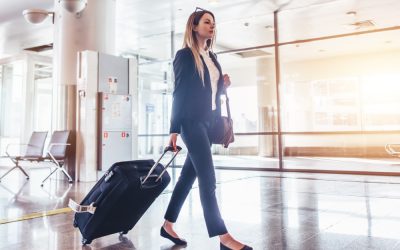
Business Trip Packing List for Minimalist Fashionistas
Whether heading on a business trip or living the digital nomad lifestyle, you’ll want to figure out the right clothing options that are sophisticated yet not overly corporate, stylish, and multipurpose — and we’re here to help! Sleek and professional with...

What Is the Best Travel Steamer? See Our Top Picks!
Wondering what’s the best travel steamer to take with you on your next journey? We’ve rounded up the most popular options available. These are the top 10!
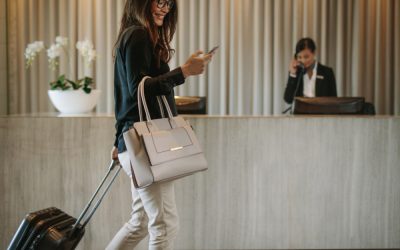
Business Travel Europe: What to Pack for Work and Leisure Time
Business travel has evolved into “blended travel”, which means more than ever, remote workers are combining work and leisure time into one trip. And one continent that continually attracts this new brand of traveler is Europe! This involves packing items that...

Female Travelers Love Ponte Pants. Find Out Why!
When it comes to travel, women’s ponte pants are some of TFG readers’ favorites. We’ve grabbed their most recommended ones, so you can try them out!
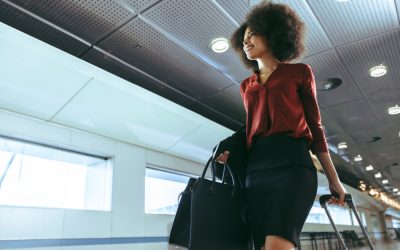
Business Travel Essentials: 15 Products to Simplify Your Life
Traveling for business has its perks, but packing for it is another story. While many business travel essentials are great for leisure travels as well, there are a few things you should definitely have on your work trip! Business Travel Essentials ...

What’s the Best Travel Power Strip? Readers Share 8 Picks
Too many electronics and not enough plugs? TFG readers recommend the best travel power strip for your next trip to support all your devices!
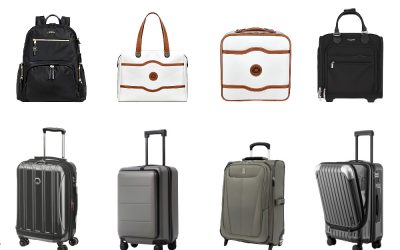
Best Business Suitcases and Luggage That’s Efficient and Easy to Use
If you travel for business, you have different packing strategies than for vacation. The best luggage for business travel will keep you organized!
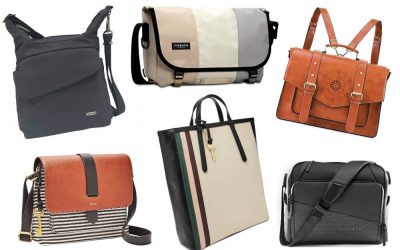
14 Best Messenger Bags for Women: Functional and Adorable Options
Looking for a bag that’s big enough but is more sophisticated than a backpack? Try a cute messenger bag! Check out these top TFG picks!
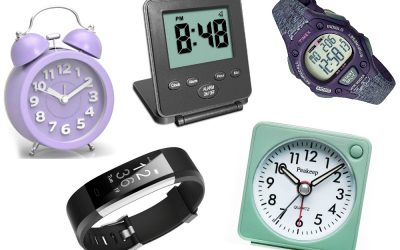
Best Travel Alarm Clock Recommendations to Help You Wake-Up
Are you looking for a travel clock that you can cart along on your next trip? Readers share their top picks for the best travel alarm clock.
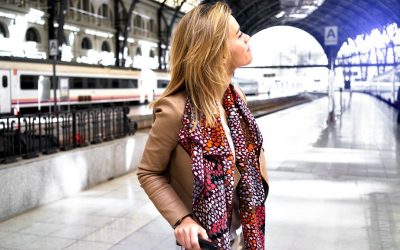
Women’s Business Clothes for Travel and Sightseeing
Business travel can be exhausting, but sometimes you can sneak in a bit of sightseeing. While a large portion of your time may be spent in meetings or conference rooms, try to take some time to explore. Check out our roundup of the best women's business clothes...
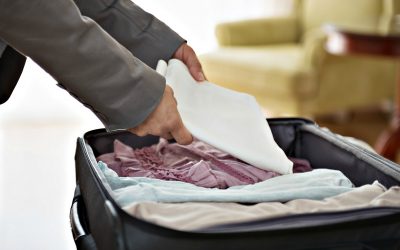
Packing for a Business Trip in a Carryon
Here at TFG we focus a lot on traveling for pleasure, anticipating the needs of travelers and providing tips and guides for packing–but not every trip is a vacation. Wondering what to wear on a business trip? Follow this packing list for a five-day work trip!
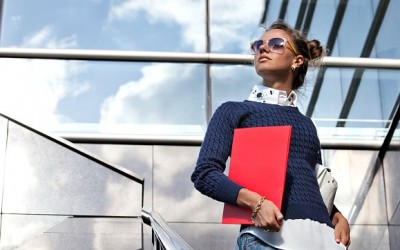
How to Pack for a Business Trip when You’re a Powerhouse Female Entrepreneur (or want to look like one)
Are you a powerhouse female entrepreneur or want to look the part? A top notch image consultant shares her best tips on how to pack for a business trip stylishly! How to Pack for a Business Trip (for Female Entrepreneurs) Written by: Sharice Styles...
Want the best travel clothing for women? Read these top picks: best travel pants for women , best leggings , and convertible travel dresses . Struggling with the perfect travel wardrobe? Download our free ebook: Travel Wardrobe Essentials !
PRINTABLE TRAVEL CHECKLIST
TTC family of brands
My Trafalgar
Destinations
Get Inspired
866 513 1995
Womens Only Travel Tours

with our premium sister brand
Experiences created with women in mind
See the icons with our Insightful Encounters and meet inspiring women through MAKE TRAVEL MATTER® Experiences.
Small group of like-minded travelers
Express yourself with confidence, with just 20 other female travelers.
The 'Business Class' tour experience you deserve
Stylish, hand-picked hotels, top-rated dining and stress-free travel with your female Travel Director taking care of the details.
Why choose Women-Only tours with Insight Vacations?
Explore women-only tours.
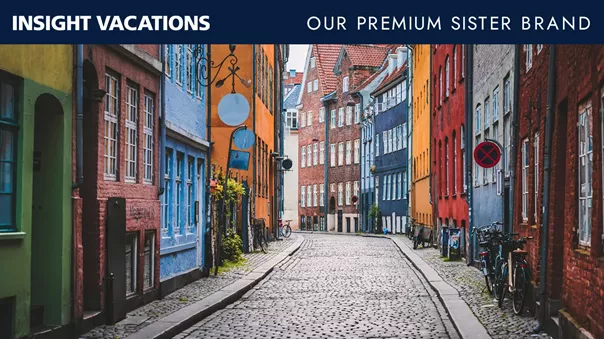
Northern Capitals, a Women-Only Tour
10 days From the food markets of Helsinki to a private cruise along the waterways of Copenhagen, embrace the spirit of the northern capitals on this 10-day Women-Only tour.
View Tour >
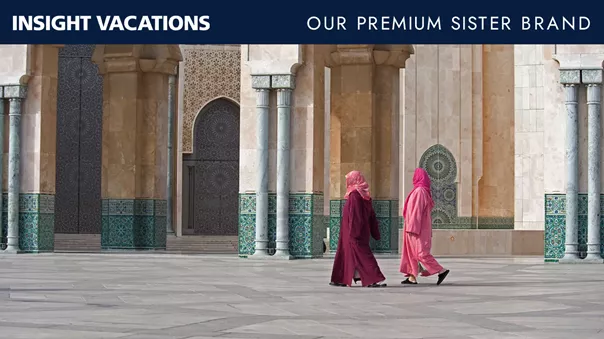
Best of Morocco, a Women-Only Tour
11 days Lands so diverse they will leave you spellbound; Morocco is a sight to see. Discover its highlights, from Casablanca to the Dades Valley, on this 11-day small group Women-Only tour.
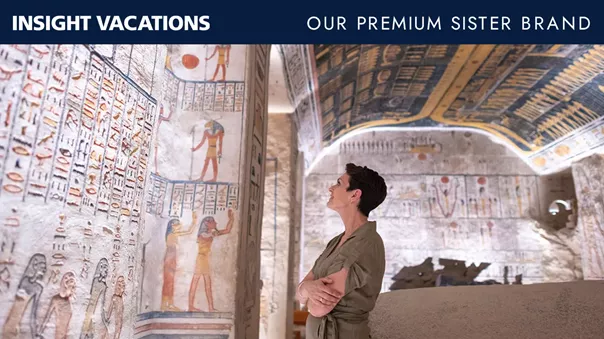
Splendours of Egypt, a Women-Only Tour
12 days Cruise the Nile, gain insights into the art of belly dancing, and explore the splendors of Egypt on this 12-day Women-Only tour.

Country Roads of Italy, a Women-Only Tour
16 days Journey across the Italian peninsula on this 16-day Women-Only tour that stretches from the Amalfi Coast to the canals of Venice.
View All Tours
All you need to know about Women-Only tours
What are the benefits of traveling on a women's only tour.
There are dozens of benefits from connecting with other women and forming friendships, to traveling with greater ease, confidence, and support. Many women feel free to be themselves and simply have more fun when traveling on women only vacations. And forget about being the third wheel! Many solo women travelers prefer trips for women only, as it’s easier to meet like-minded women, share rooms, and avoid single supplements.
How do I plan a solo trip as a woman?
The easiest way to plan a solo trip as a woman is to first pick out your dream destinations and travel goals. Check out the women-only tours offered by our sister brand Insight Vacations. Then, all you have to do is book your favorite women-only trip, pick your flights, pack a bag, and you’re on your way to exploring the world with a bunch of incredible women.
What are the best solo travel destinations for women?
There are dozens of destinations around the world that make for great solo trips for women. Scandinavian countries like Denmark, Norway and Sweden consistently rank as some of the world’s safest countries for solo women travelers, while our women-only trips take you to more amazing destinations like the UK, Spain, Portugal, France, Italy, Greece, Egypt… The hardest part is choosing just one trip.
What to pack for a women's only travel adventure?
Every woman’s packing list will be different, but the essentials remain the same. Always bring versatile, comfortable clothing, including a sarong or scarf for extra warmth or when modest dress is appropriate. Other essentials include a small first aid kit and refillable bottles for toiletries. You should also bring security items like a lock for your luggage and portable chargers, so you’re never stuck with a dead battery on your devices.

Help & Info
WE MAKE TRAVEL MATTER®
Unedited Reviews
Our Destination Management Companies
Frequently Asked Questions
Travel Updates
Do Not Sell or Share My Personal Information
Travel Planning
Get Your Free Brochure
Travel Insurance
Booking Conditions
Trip Deposit Level
Recommendations
Trafalgar Tours Limited is a proud member of The Travel Corporation family of companies.
#SimplyTrafalgar
Travel House, Rue du Manoir St Peter Port, Guernsey, GY1 2JH
Selected Region
United States
United Kingdom
New Zealand
South Africa
Copyright 2024 Trafalgar. All rights reserved.
Terms and Conditions
Privacy Policy
Cookie Policy
Inspiring women who shaped the travel landscape forever
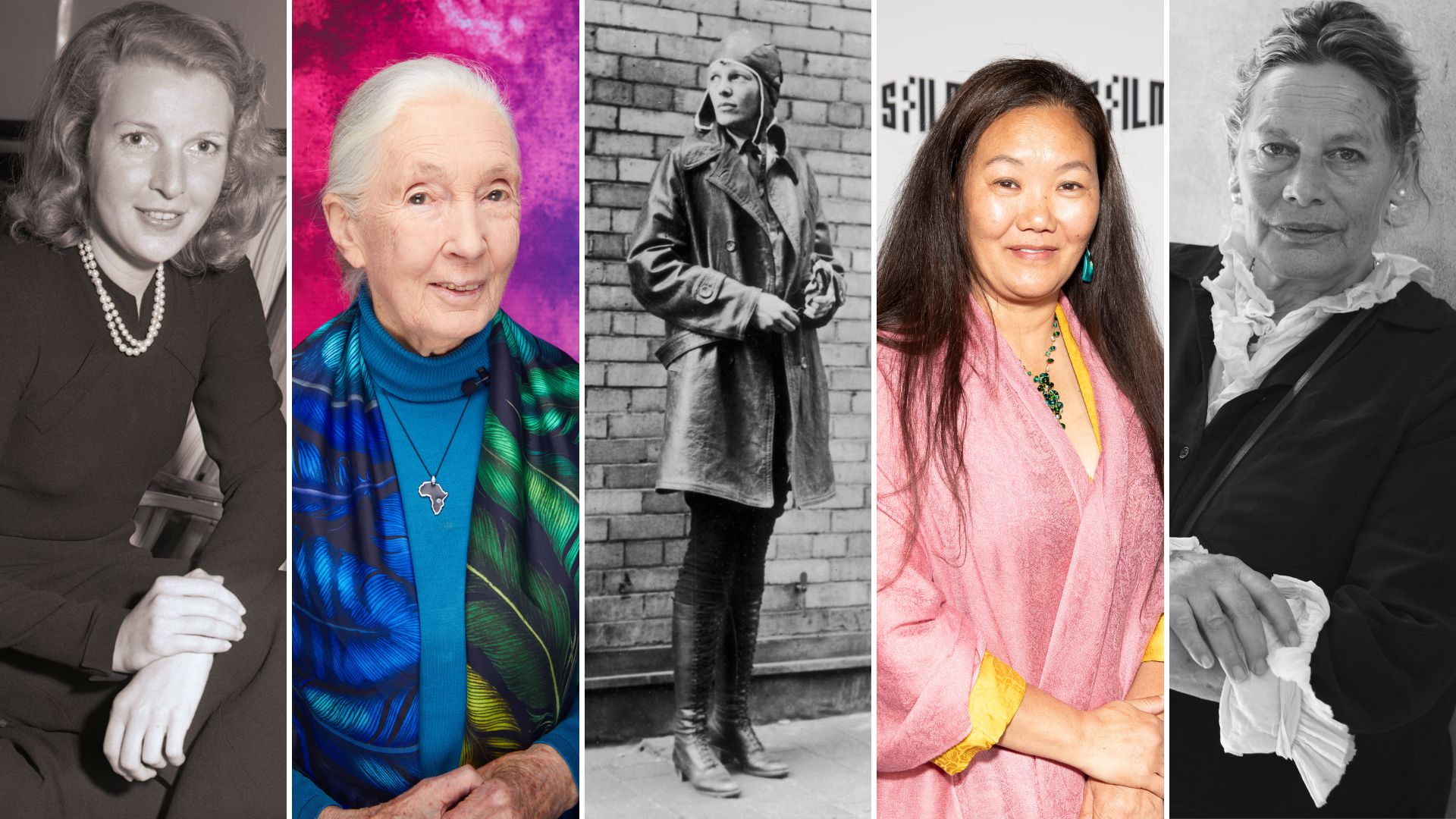
Since the beginning of time, women have traversed the globe looking for adventure, new experiences, and ways to test their resilience, defying patriarchal norms in the process.
These fearless characters, who often shun stereotypes in favour of alternative ways of living are truly inspirational, and while historically only the very wealthy were privileged enough to break free, recent years have seen the emergence of trailblazing adventurers from all walks of life partaking in extreme journeys and expeditions. One only has to look to Nepal’s Lhakpa Sherpa, who summited Mount Everest at the age of 49 for the tenth time. From humble beginnings, her dedication and pure love for hiking the Himalayan mountain range stands out as one of the most remarkable stories of late.
And like Lhakpa Sherpa, many other fearless women have come before her, traversing the globe on arduous often dangerous expeditions in search of stories, adventure, and inner peace. Here, we spotlight some of the most incredible women who have changed the travel landscape, as we know it, forever.
Inspiring women who have shaped the travel landscape forever
Martha gelhorn.
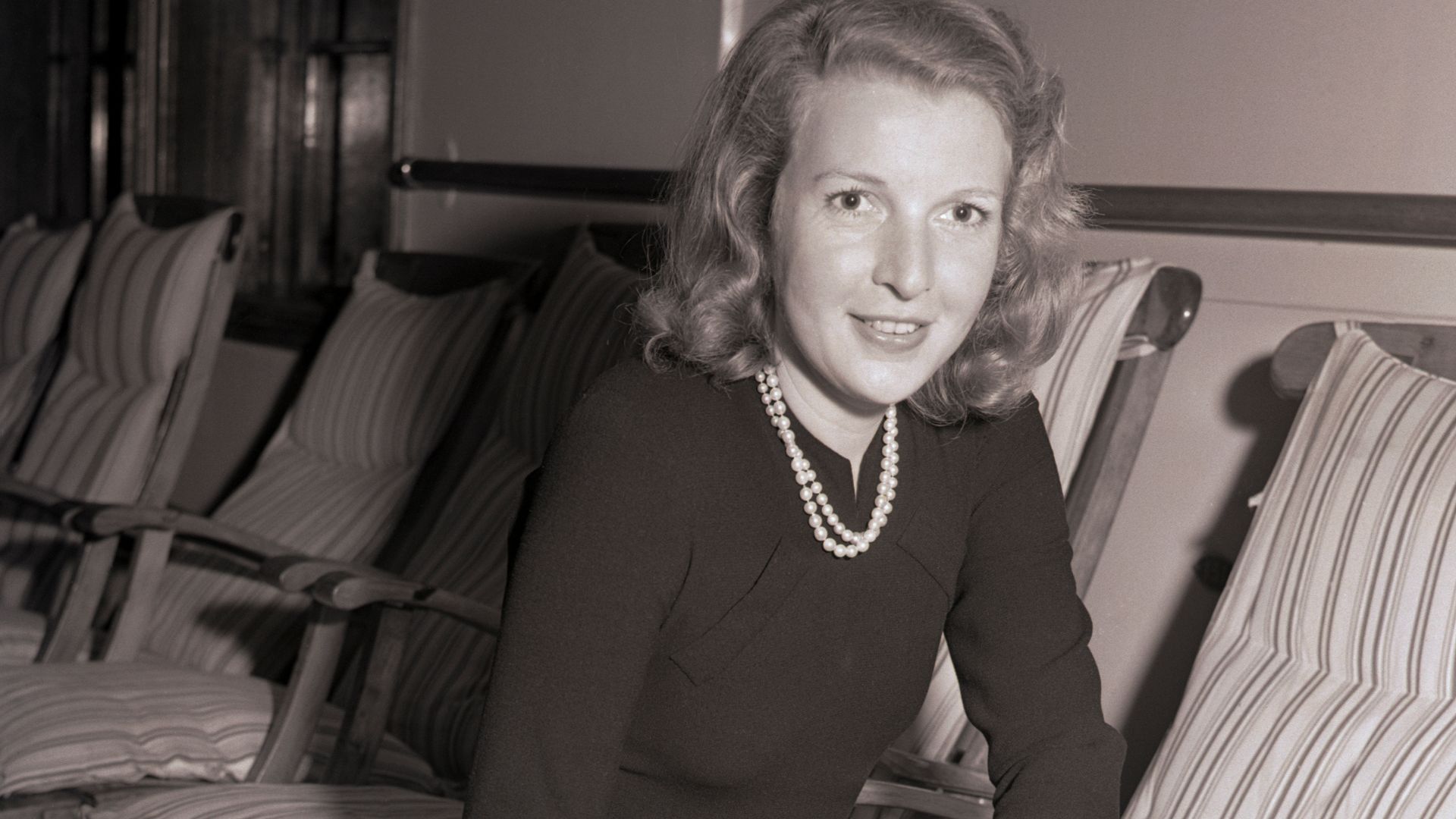
A true enigma, Martha Gelhorn travelled extensively as a war correspondent and novelist, visiting countries such as Myanmar, China, Spain, and Kenya during her esteemed career, oftentimes solo. Undeterred when her Second World War journalist credentials were denied she became the only woman to land on Normandy at D-Day in 1944 after illegally stowing away in the bathroom of a hospital ship, subsequently writing about the events for Collier’s magazine . One of her most fascinating books, Travels With My Self and Another: Five Journeys from Hell details Gelhorn’s most horrific travel experiences, from the rain-soaked wilds of remote China to her time travelling solo through East Africa, although parts are now outdated it’s well worth a read, with Gelhorn’s courage and tenacity shining out of every page.
Jane Goodall

Jane Goodall has spent almost her entire life researching and observing the behaviour of chimpanzees in the Gombe Steam National Park in Tanzania, making her the world’s leading expert on the primates. She moved from England to Tanzania at the age of 26 and continued to dedicate her life and work to revolutionising wildlife conservation and our understanding of these incredible creatures. Today she travels the world speaking about the the environmental crisis and the threats to chimpanzees across equatorial Africa.
Dervla Murphy

As one of the greatest adventure travel writers of our time, Dervla Murphy wrote over 20 books, including Full Tilt , a fascinating account of the author’s solo self-funded travels from Ireland to India , by bicycle. While Murphy was met with dangerous encounters and situations along the way she inspired countless curious women to get out of their comfort zone and see the world solo. In her later life, she spent time volunteering and advocating for anti-globalisation, as well as speaking out about climate change. After she died in 2022, The President of Ireland, Michael D. Higgins, said, "Her contribution to travel writing had a unique commitment to the value of human experience in all its diversity."
Aloha Wanderwell

Canadian explorer Idris Galcia Hall, known now as Aloha Wanderwell was the first woman to circumnavigate the globe in a journey that spanned five years and 75 countries. Beginning when she was just 16, she drove around the world with a Polish adventurer known as Walter Wanderwell, in a 1918 Ford Model T, beginning and ending the journey in Nice, France. Following the epic journey, Wanderwell went on to have an exciting career as an explorer and documentary filmmaker, paving the way for future generations of adventurous women.
Cheryl Strayed
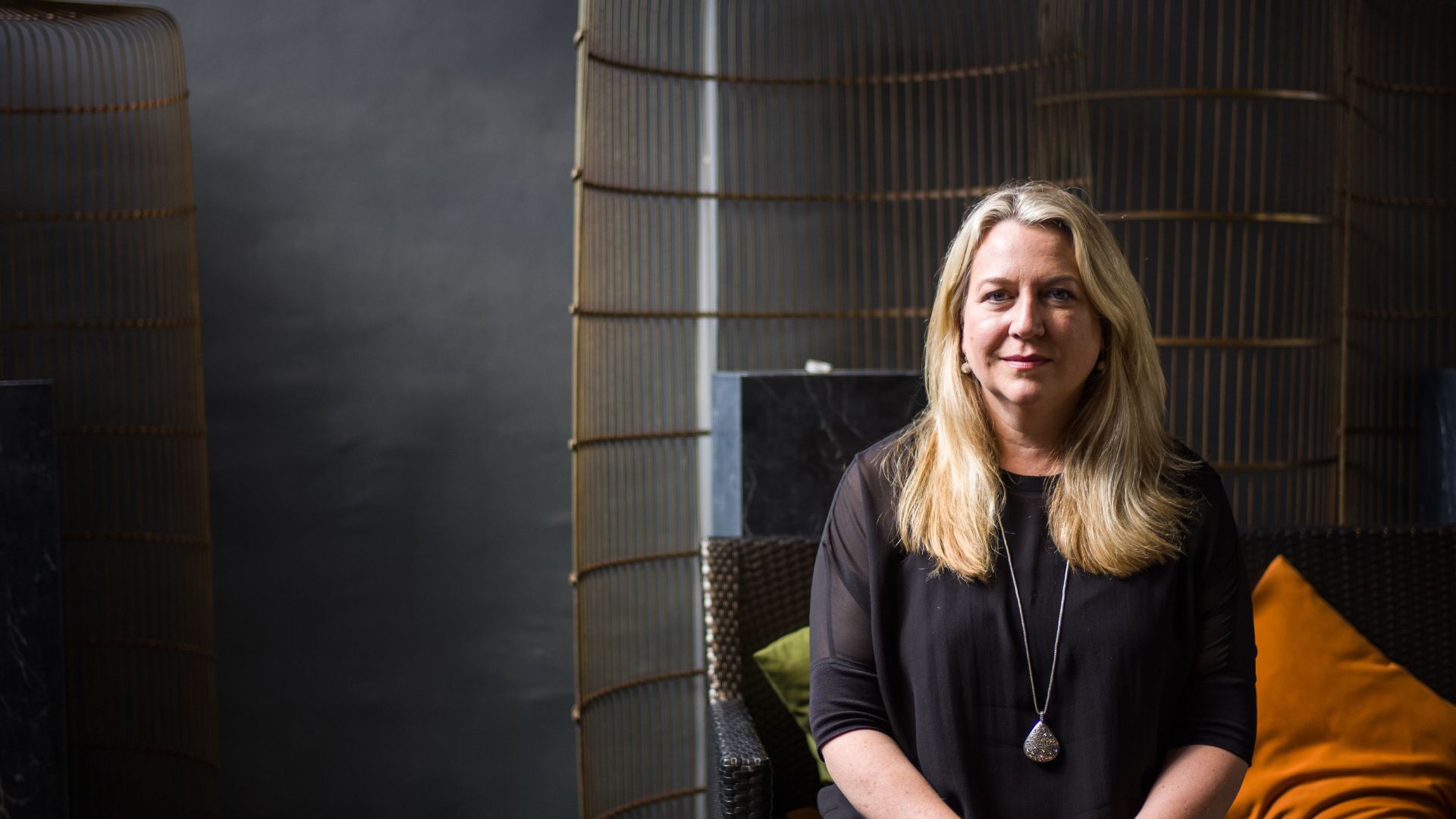
Struggling with grief, a marriage breakdown and addiction, Cheryl Strayed set out on a 1,100 mile solo hike at the age of 26, forming the base of her memoir Wild: From Lost to Found on the Pacific Crest Trail. The journey of self-discovery describes the challenges and spiritual realisations the American author went through when hiking the Pacific Crest Trail beginning in the Mojave Desert, continuing through California and Oregan before arriving in Washington some three months later. While the book did receive some criticism due to Strayed’s lack of hiking experience, it was later made into an Oscar-nominated movie by Reese Witherspoon's film company with Witherspoon playing the lead.
Gertrude Bell
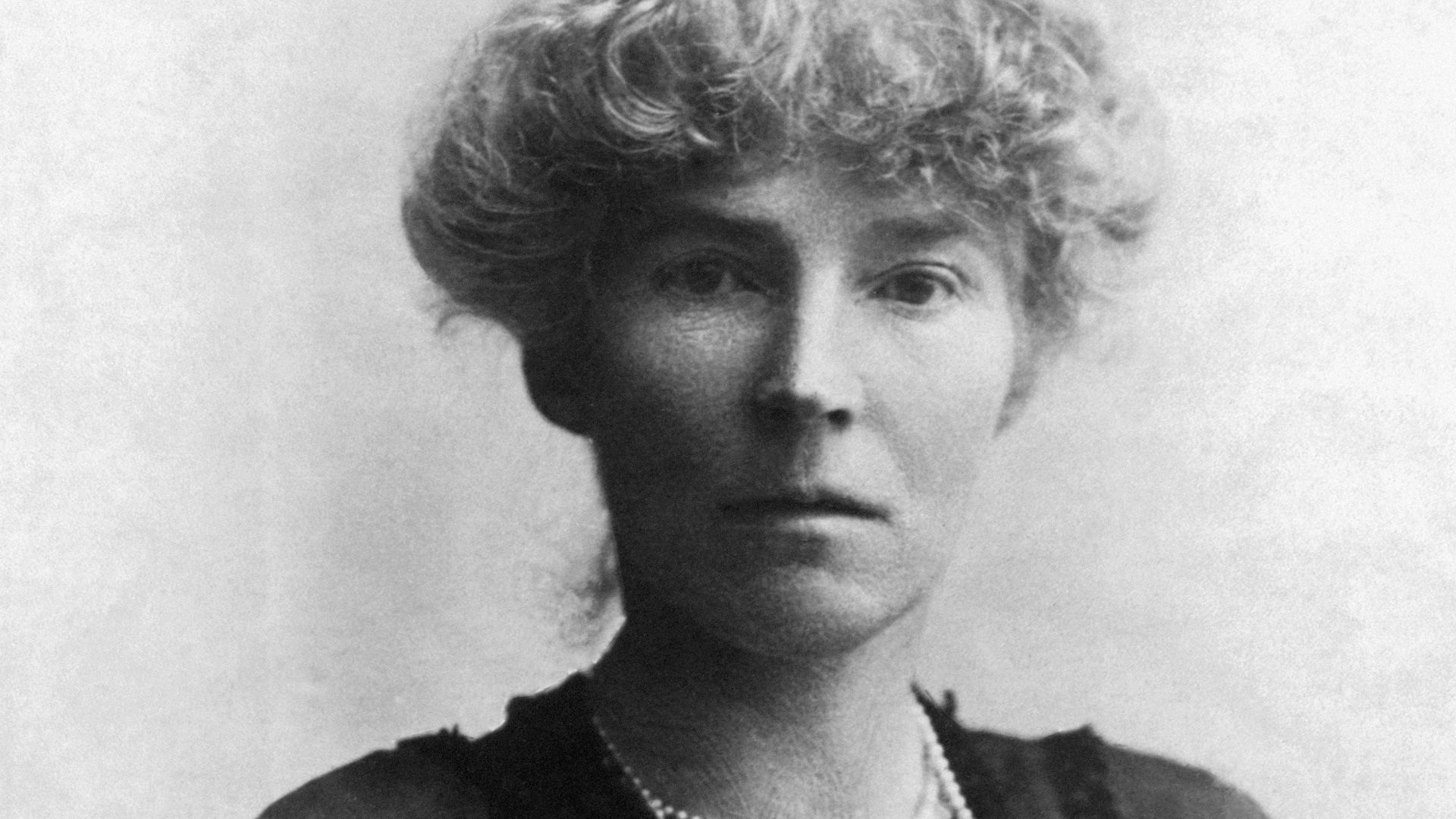
Gertrude Bell’s upper class background meant she was privileged enough to travel extensively, yet many of her journey’s were grueling and dangerous and she was never afraid to get out of her comfort zone. The mountaineer and explorer became an expert on the Middle East, first visiting Persia in 1892, and later publishing a translation of the works of the Sufi poet, Hafez, since she could speak every dialect of Arabic and Persian. Famed for climbing the Matterhorn and Mont Blanc, she later undertook numerous desert expeditions through Syria, Jordan, Iraq and Iran, writing about the experiences in her travel books, before reporting on the Armenian genocide in 1915. She spent the last years of her life in Baghdad having made a significant contribution to the mapping of the Middle East and funding important archeological expeditions.
Kris Tompkins

Passionate about restoring biodiversity and preserving the land and sea in and around Argentina and Chile, Kris Tompkins has been travelling to remote areas of Patagonia for decades. The former chief executive of the outdoor-apparel company Patagonia along with her late husband Douglas Tompkins are some of the most successful conservation philanthropists in history, having protected approximately 15 million acres of parkland in Chile and Argentina.
Inge Morath

Photographer Inge Morath is perhaps most well known for her images of Marilyn Monroe, yet it’s her travel photography in Iran, as well as her work as a translator and journalist that really marks her out from the crowd. At the age of 33, Morath travelled to Iran solo to document the country through photography capturing religion, dress, politics and commerce, noting the difficulty “to photograph there as a woman”. The resulting book filled with captivating imagery was a notable professional achievement in Morath’s career, pathing the way for female photojournalists today.
Robyn Davidson
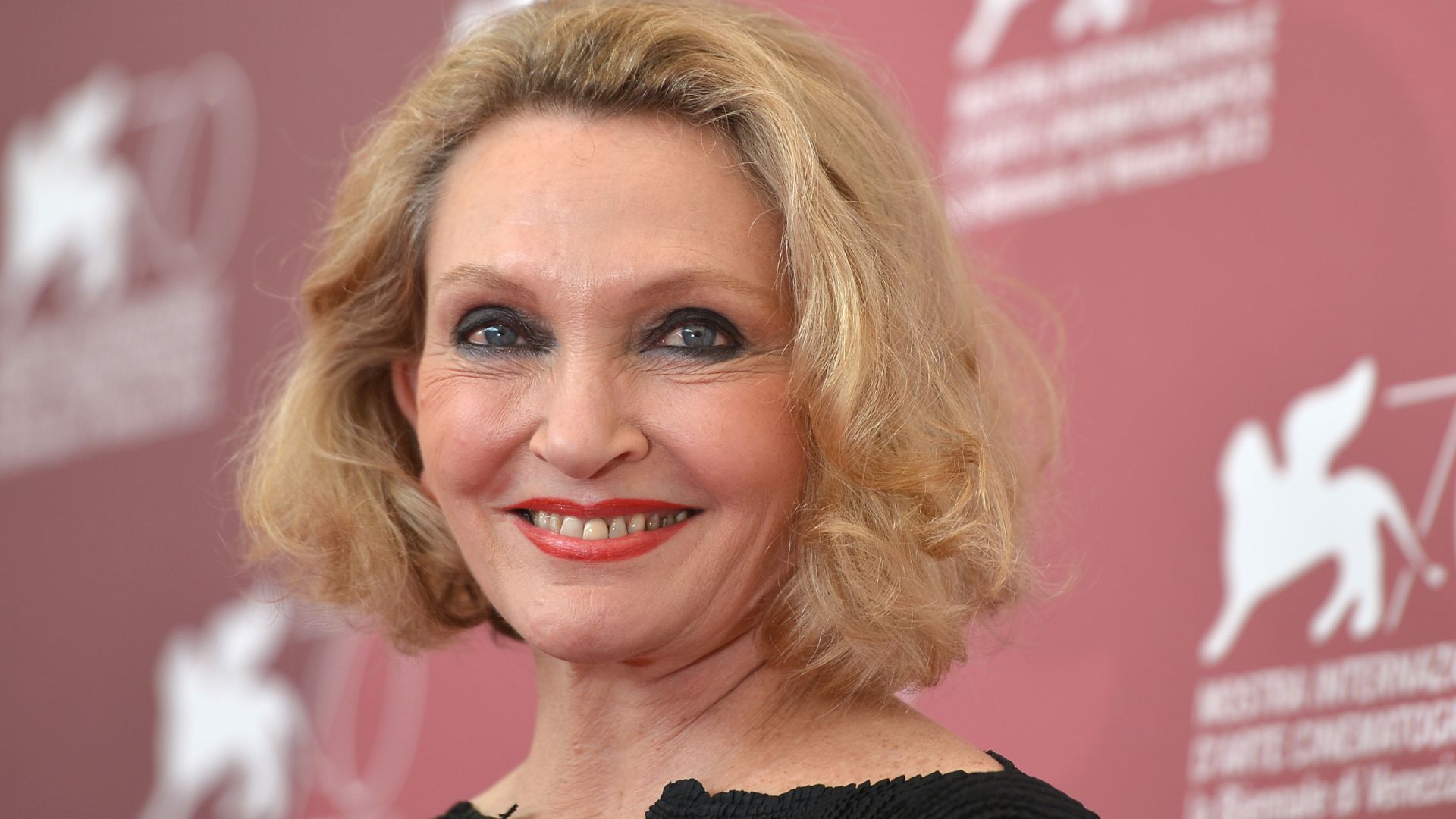
With a 40-year travel writing career, Robyn Davidson is perhaps best known for her book Tracks , detailing her incredible journey crossing the deserts of Western Australia using camels. The 2,700 km trek, beginning in Alice Springs took a total of nine months to complete, going on to form the base of her memoir following her articles about the feat being published in National Geographic. The book went on to become a film and in 2024, Davidson was awarded the Medal of the Order of Australia in the King's Birthday Honours List.
Martine Franck

Documentary photographer Martine Franck worked tirelessly for over 40 years documenting remote or marginalised communities. Her work took her to the Far East, Tibet and Nepal with the resulting images being published across nine photography books. Michael Pritchard, the Director-General of the Royal Photographic Society , observed, "Martine was able to work with her subjects and bring out their emotions and record their expressions on film, helping the viewer understand what she had seen in person. Her images were always empathetic with her subject."
Noo Saro-Wiwa

With two books under her belt, travel writer Noo Saro-Wiwa gained recognition in 2012 when her first book, Looking for Transwonderland: Travels in Nigeria , was named The Sunday Times Travel Book of the Year and The Guardian included it among its 10 Best Contemporary Books on Africa. Saro-Wiwa’s travels through China form the base of her latest book, Black Ghosts , where the author takes a specific look at the African community in the East Asian country. Travel writer Paul Theroux describes her as “a brave and resourceful traveller-interrogator - outstanding in the so-called travel writing genre.”
Lhakpa Sherpa

Inspiring and humbling in equal measure is Lhakpa Sherpa’s story - which has recently hit the streaming platform Netflix and is well worth a watch - showcases the mountaineering enigma in all her utter glory. Having summited Mount Everest a staggering 10 times throughout her life so far (with the last summit taking place when she was 49 years old) Lhakpa Sherpa will go down in history as one of the greatest adventurers of our time. Her latest venture saw the Neaplese-born mountaineer summit K2, the second highest and one of the deadliest mountains on earth.
Maggie Steber
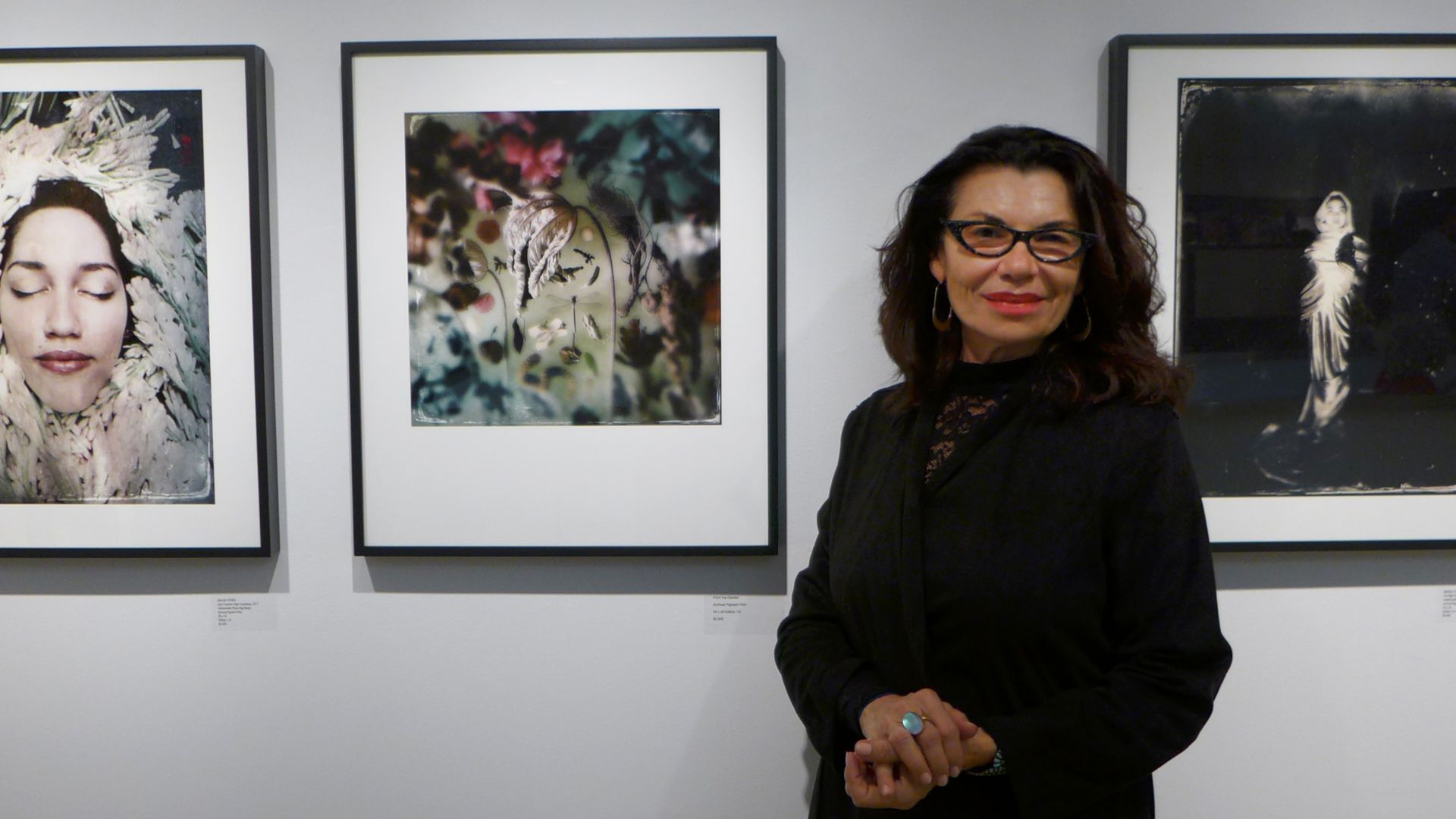
Having documented a wide range of issues through photography, including the African slave trade, Native American issues in the US and many natural disasters, Maggie Steber’s humanitarian stories ensured she was a Pulitzer Prize Finalist back in 2019. The extensively travelled photographer has worked in 64 countries including three decades in Haiti where she captured the images published in Dancing on Fire , a photography book chronicling Haiti’s tumultuous history, and the country’s struggle for freedom.
Freya Stark

“To awaken quite alone in a strange town is one of the most pleasant sensations in the world. You are surrounded by adventure” is one of Freya Stark’s most famous quotes and sums up the solo adventurer’s travel ethos perfectly. As one of the first non-Arabs known to travel through the southern Arabian Desert, she travelled secretly by donkey through Syria and Lebanon, later writing about the repressive French regime she witnessed and the abuse inflicted on the Syrian people.
Deborah Levy
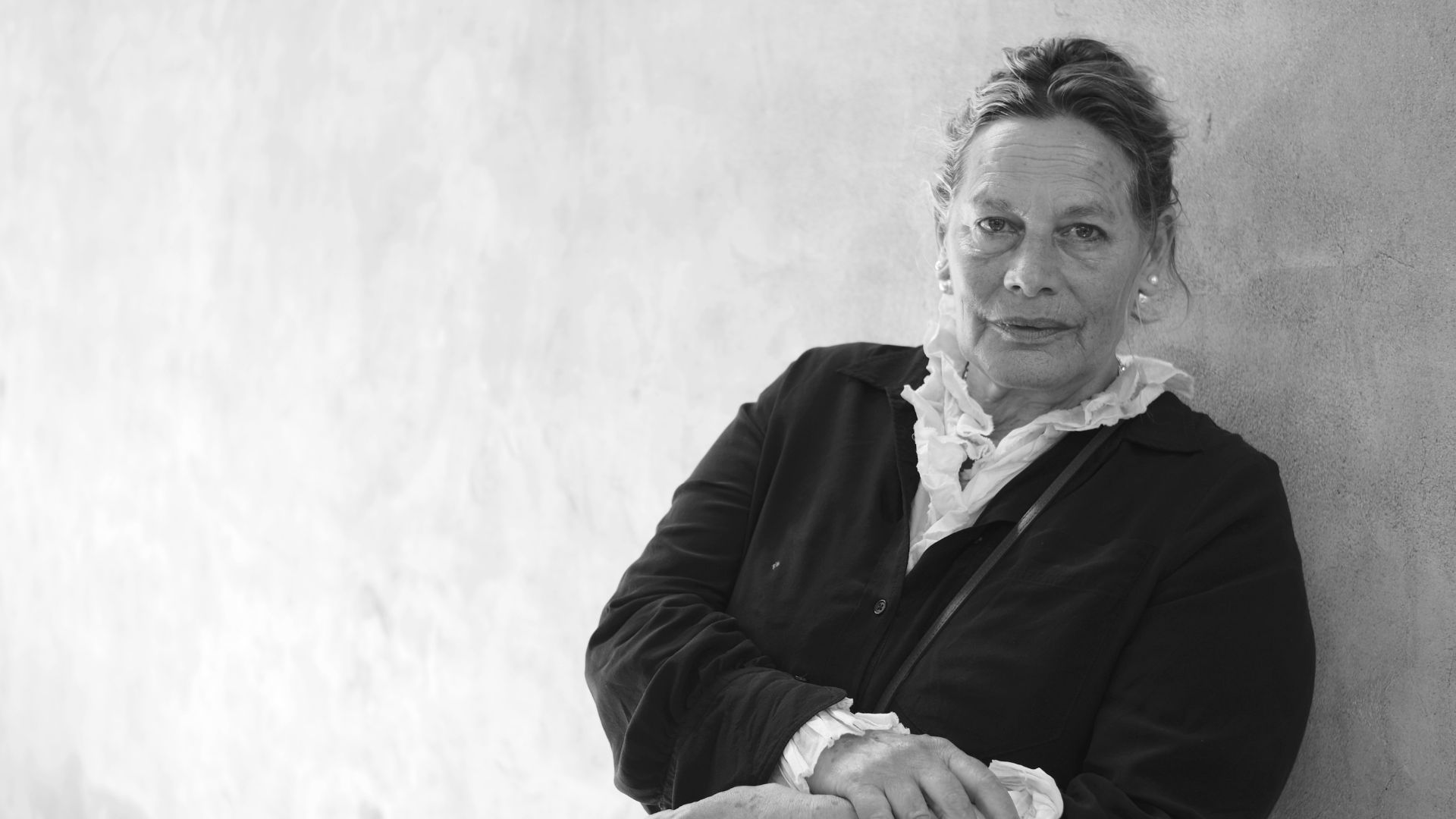
As the author of many beautifully written books, most of which showcase stunning locations across the globe, Deborah Levy has gained a cult following with her captivating writing that is filled with emotion and glorious observance. Her three ‘living autobiographies’ challenge traditional ideas of what it is to be a woman and have helped countless women strike out on their own. Unlike any other author before her, Levy’s writing captures an essence of place so exquisitely it’s impossible not to fall in love with her books.

After struggling to get hired as a journalist in a completely male dominated environment, Nellie Bly took drastic measures to secure a job, including going undercover to report on a mental institution from within in a fascinating expose that helped launch a new kind of investigative journalism. The article ensured world fame for Bly who later went on to travel around the world in 72 days, inspired by the fictional story, Around the World in 80 Days . Documenting her crusade for the New York World , Bly began her 24,898 mile journey in 1889, and indeed succeeded in circumnavigating the globe alone, in turn setting a new world record.

National Geographic photographer Ami Vitale has travelled to more than 100 countries documenting the heartbreaking realities of war. Her foundation, Vital Impacts , is a women-led, non-profit which uses art and storytelling to support people and organisations who are protecting our planet.
Grace Marguerite Hay Drummond-Hay
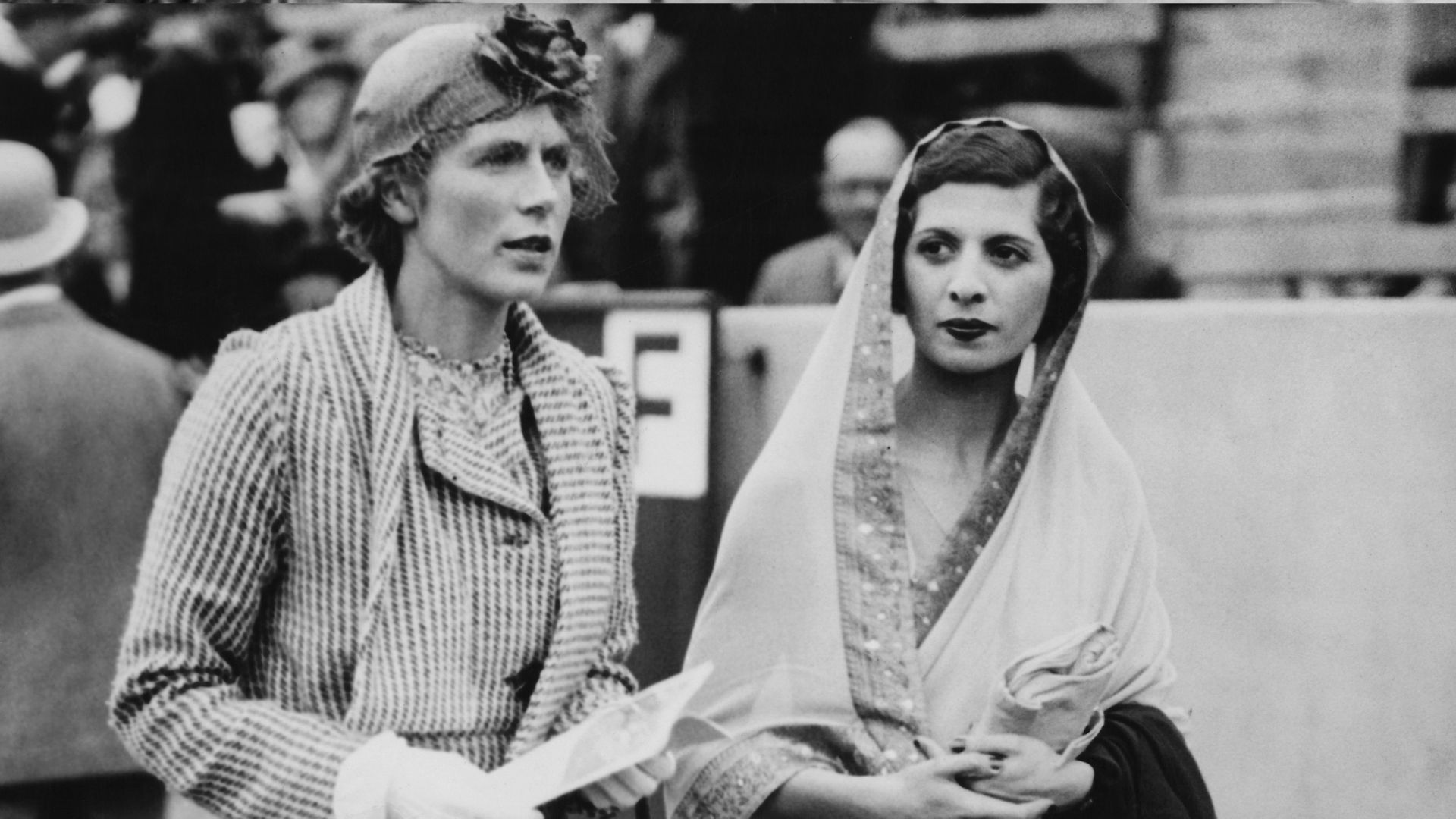
As the first woman to travel around the world by air (in a zeppelin), Grace Marguerite Hay Drummond-Hay went on to have an esteemed career as a foreign correspondent and journalist. Her investigations took her to Ethiopia, China, and the Philippines where she was imprisoned in a Japanese camp.
Amelia Earhart

With a keen interest in aviation, Amelia Earhart became the very first woman to fly solo across the Atlantic Ocean in 1932. Taking close to 15 hours, the journey - which was blighted by several problems, including mechanical issues and treacherous weather - provided the basis of her book, The Fun Of It . Her love for flying prompted her to found an organisation of female pilots (known as the Ninety-Nines) to help encourage women to take up flying and reject societal norms. Later, she became the first woman to fly solo from LA to Mexico City. In 1937 Earhart disappeared over the Pacific Ocean along with Fred Noonan during an expedition to circumnavigate the world.
Junko Tabei
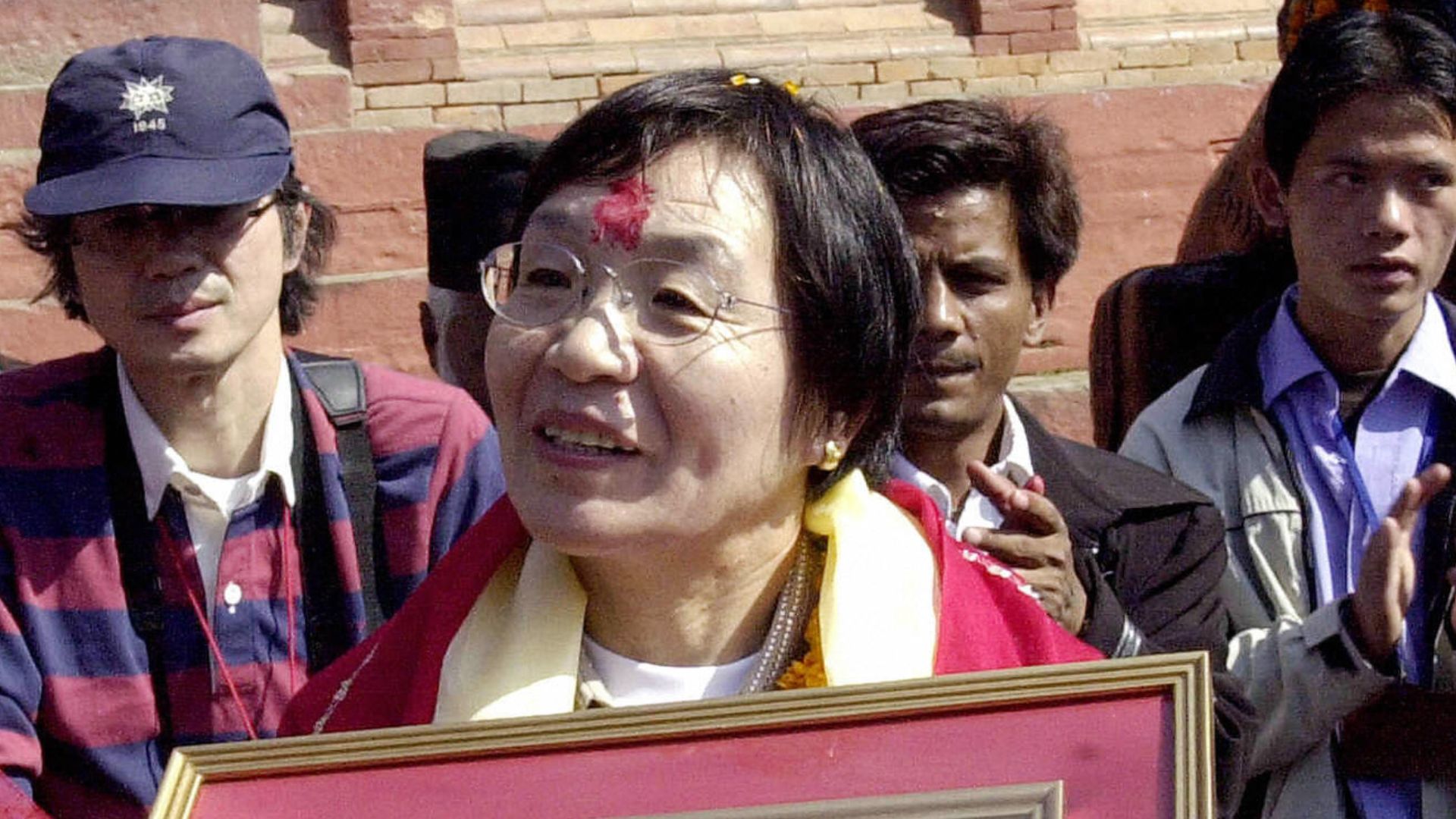
Junko Tabei was the first woman to reach the summit of the world's highest peak, Mount Everest in 1975 and later climbed every highest peak on each continent. The Japanese mountaineer became a sensation in the climbing world, inspiring countless women to follow their dreams. Tabei smashed constructs with her incredible feats, even creating her own Ladies Climbing Club.
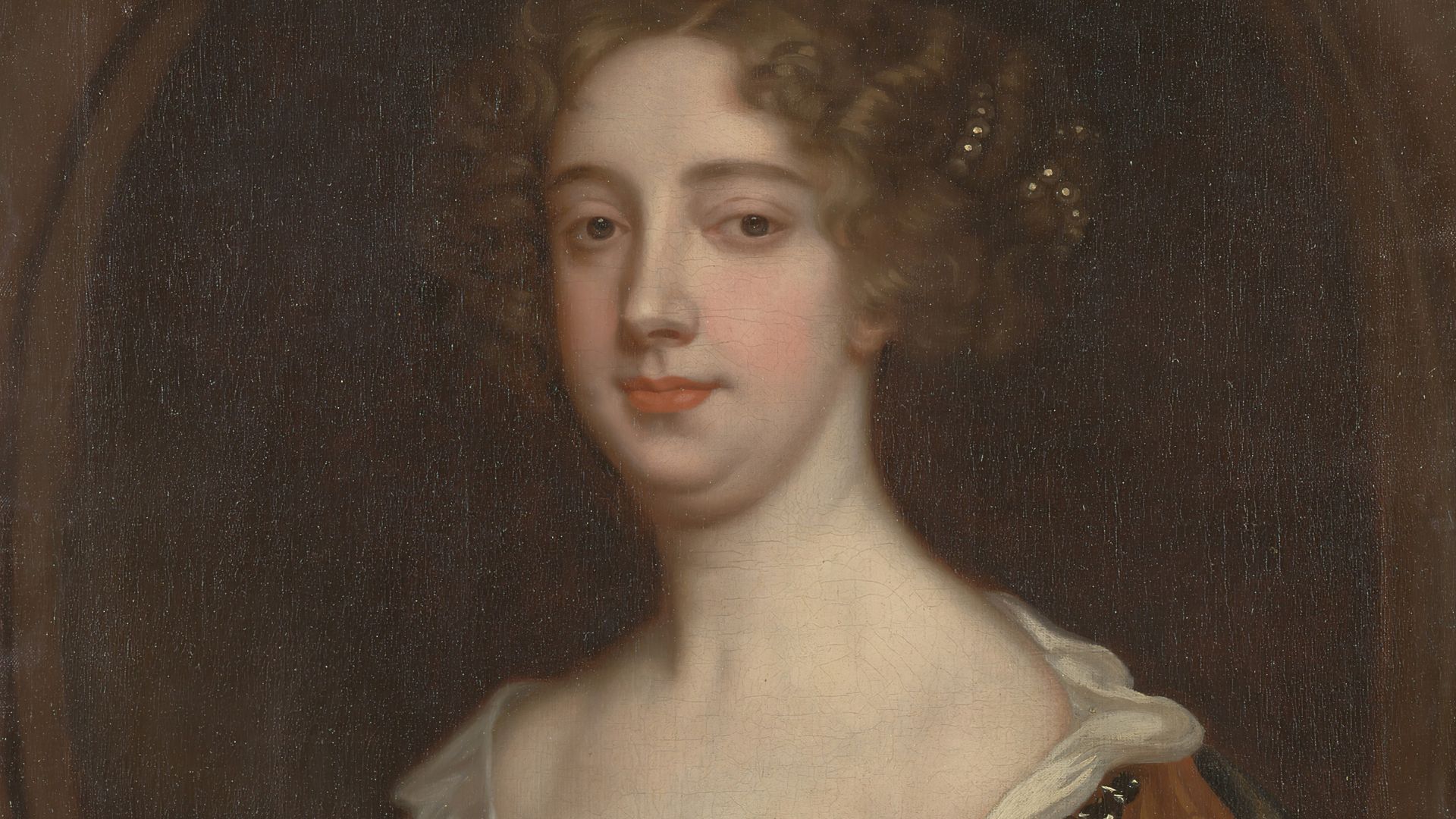
Breaking cultural barriers, Aphra Behn was one of the first English women to earn a living by her writing. A role model for later generations of female authors, Behn travelled to the Netherlands as a spy for King Charles II and often used her travels to inspire her work. Celebrated for her concern for equal rights, Behn became a true literary icon during her relatively short life.
Mary Kingsley
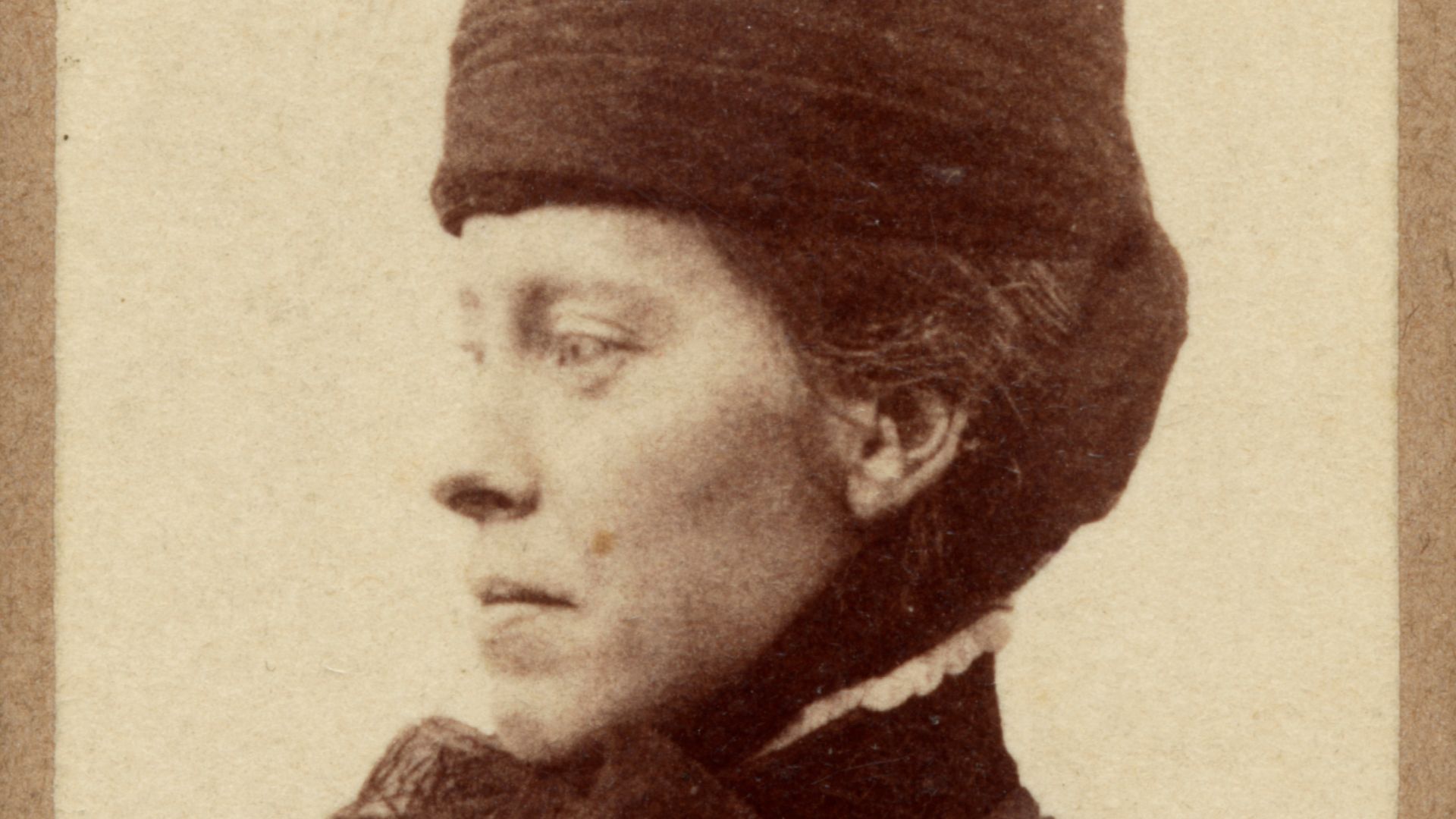
As a writer and explorer Mary Kingsley travelled extensively through West Africa, detailing her experiences and cultural observations in countless books. She was the first European to enter parts of Gabon and subsequently undertook numerous research projects to various West African countries, before working as a nurse in the South African war. At a time when much of Africa was under colonial rule, Kingsley advocated for fair trade in West Africa and for African societies to run themselves by traditional values.
Isabella Bird
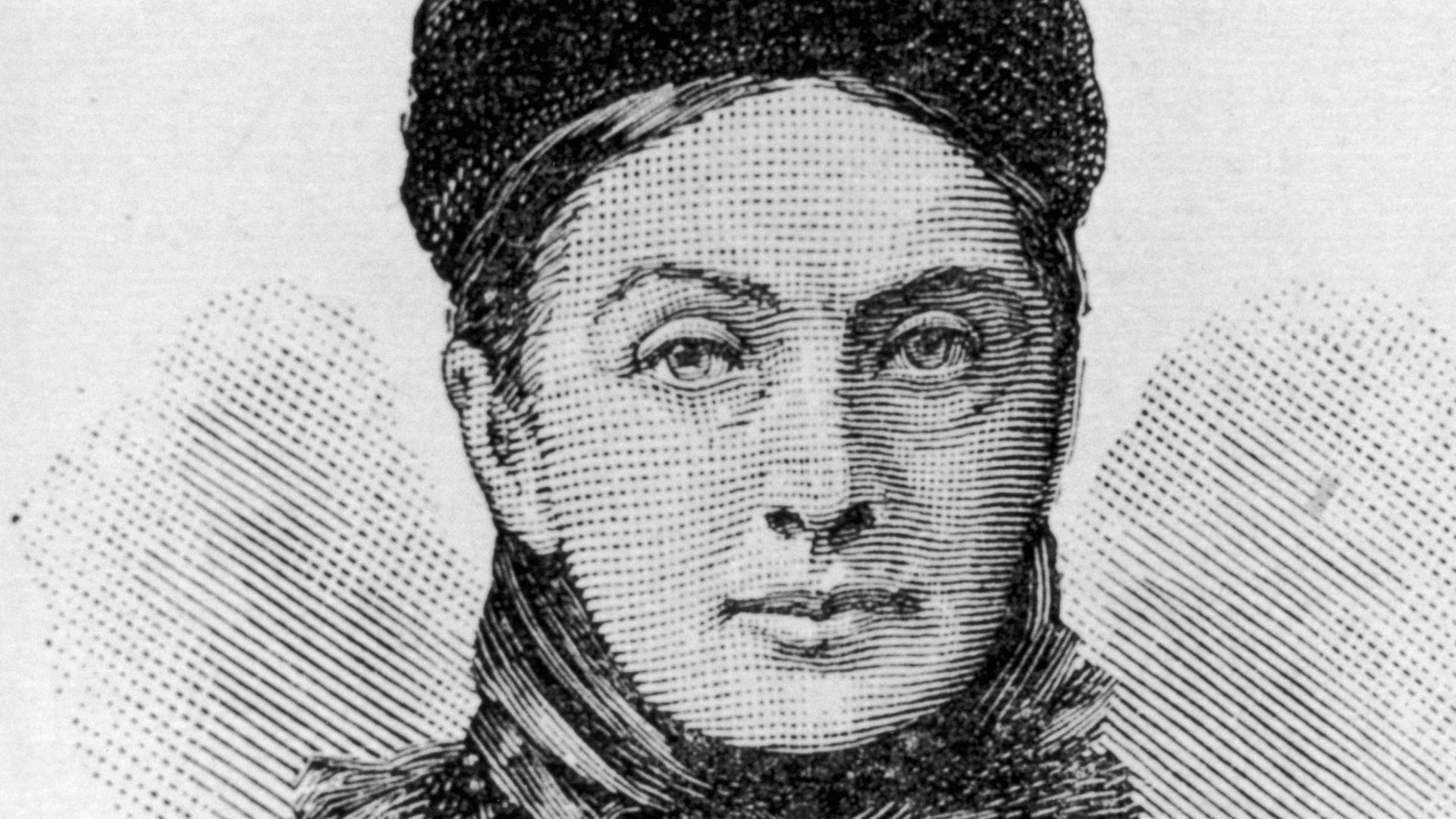
A true pioneer in travel, Isabella Bird wrote best-selling books about her journeys through every continent, aside from Antarctica. In 1892 she became the first woman elected a fellow of the Royal Geographical Society and alongside Fanny Jane Butler, she founded the John Bishop Memorial Hospital in modern-day Kashmir, India.
Fanny Bullock Workman
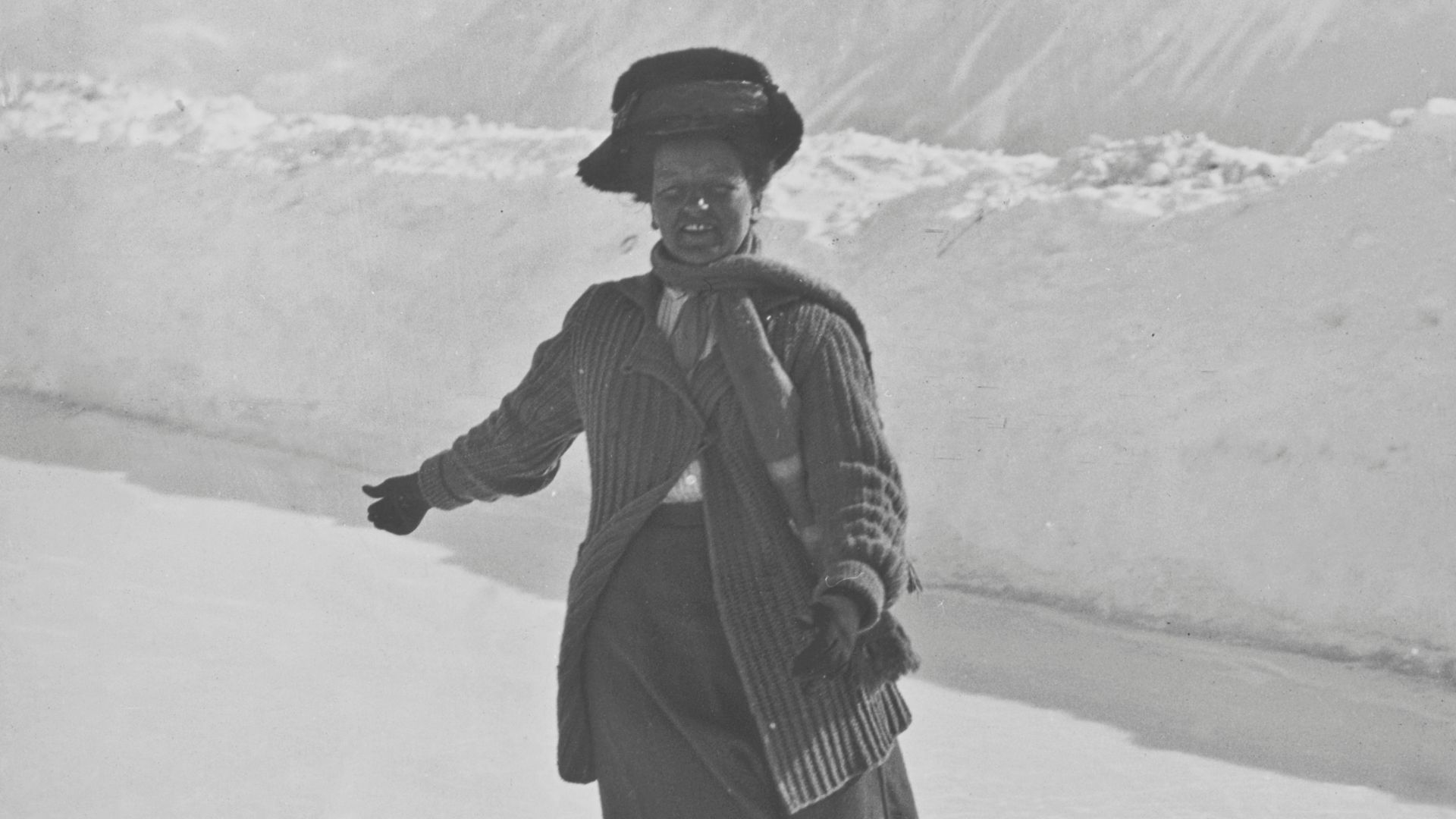
As one of the most revered explorers, Fanny Bullock Workman was one of the first female professional mountaineers, exploring the Himalayan mountain range extensively. She wrote about her travels and set several women’s altitude records, championing women’s rights and suffrage along the way. Following her adventures in India and Nepal, Fanny became the first American woman to lecture at the Sorbonne and the second to speak at the Royal Geographical Society. Demonstrating that women could climb in high altitudes just as well as men, she helped break down the gender barrier in mountaineering, receiving many medals in the process.
Lesley Blanch
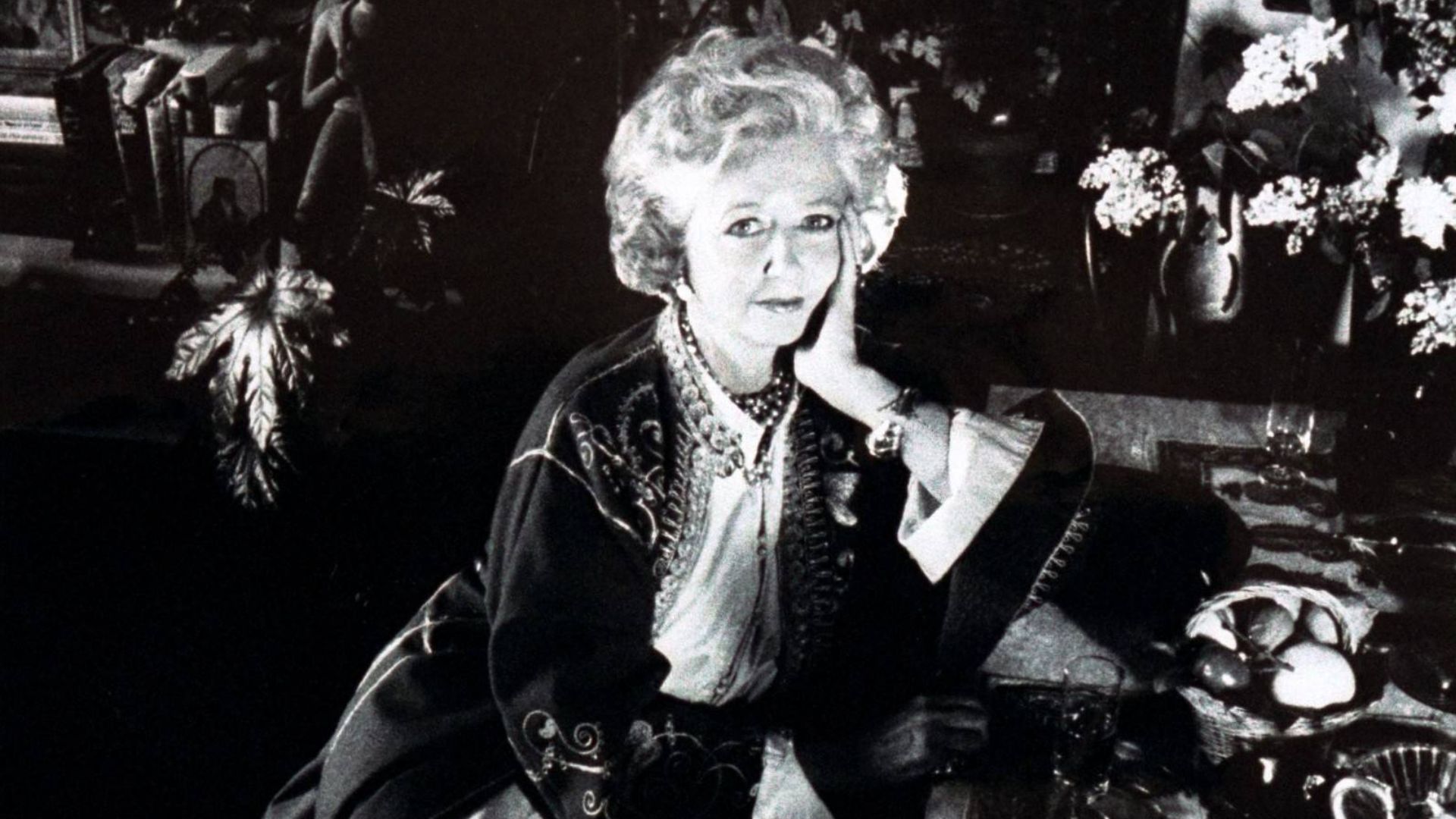
Ahead of her time, travel writer Lesley Blanch lived life on her own terms at a time when women were expected to stay at home, pandering to the needs of a husband and children. Her adventures took her to Russia, The Balkans, The Middle East, Turkey, and Afghanistan. When asked by interviewer, Jim Blackburn, what inspired her to write her bestselling book, The Wilder Shores of Love - a group biography about four strong women who turned East, away from nineteenth-century Europe and conventional living - Blanch replied, “Seeing young Englishwomen spoiling their lives tapping away at typewriters, and then watching them trudge home over Waterloo Bridge. I wondered how different their lives would have been if they’d managed to get away.”
Valentina Vladimirovna Tereshkova

Valentina Vladimirovna Tereshkova became the first woman in space and remains the only woman to have flown into space solo - she was just 26 years old at the time of the mission. A few days after her return from space, around 2,000 women from 119 countries greeted Tereshkova at an International Women's Congress, cementing her place in history as one of the world’s greatest female adventurers.
Annie Smith Peck
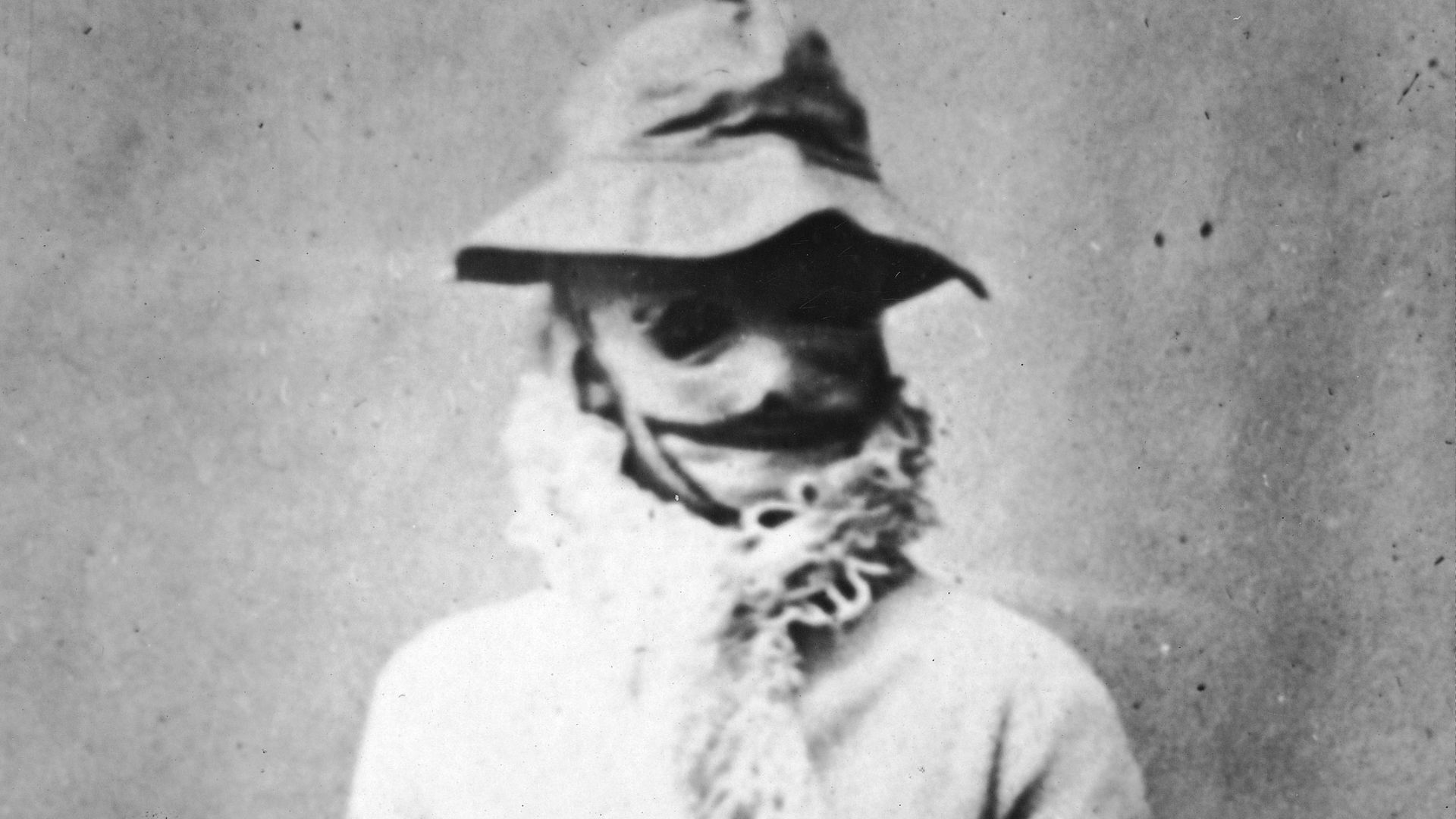
As a staunch suffragist, Annie Smith Peck made headlines across the globe when she hung a “Votes for Women” banner on the summit of Mount Coropuna (a volcano in Peru) in 1909. Famed for summiting the Matterhorn in pants, Peck was the first mountaineer to climb Mount Huascarán in Peru subsequently writing four books encouraging women to travel and explore.
Ida Pfeiffer

Often credited as the world's first solo female travel writer, Ida Pfeiffer traveled extensively across Southeast Asia, the Middle East, and Africa, including two trips around the world from 1846 to 1855. Her travels took her on multi-year jaunts in her late 40s and 50s from which she brought a huge amount of botanical and geographical knowledge back to Europe.
Harriet Chalmers Adams

According to National Geographic , “Harriet Chalmers Adams traversed Latin America on horseback, retraced Columbus’ route, and was the only female journalist allowed on the French frontlines of WWI” making her one of the greatest female explorers of all time. The intrepid adventurer set off to Latin America at the age of 26, covering 40,000 miles by horse, canoe, foot, and train alongside her husband Franklin Pierce Adams. When asked by a newspaper in 1920 about her love of travelling, she replied, “There is no reason why a woman cannot go wherever a man goes. If a woman is fond of travel, if she has love of the strange, the mysterious and the lost, there is nothing that will keep her at home…”
Elizabeth Luard
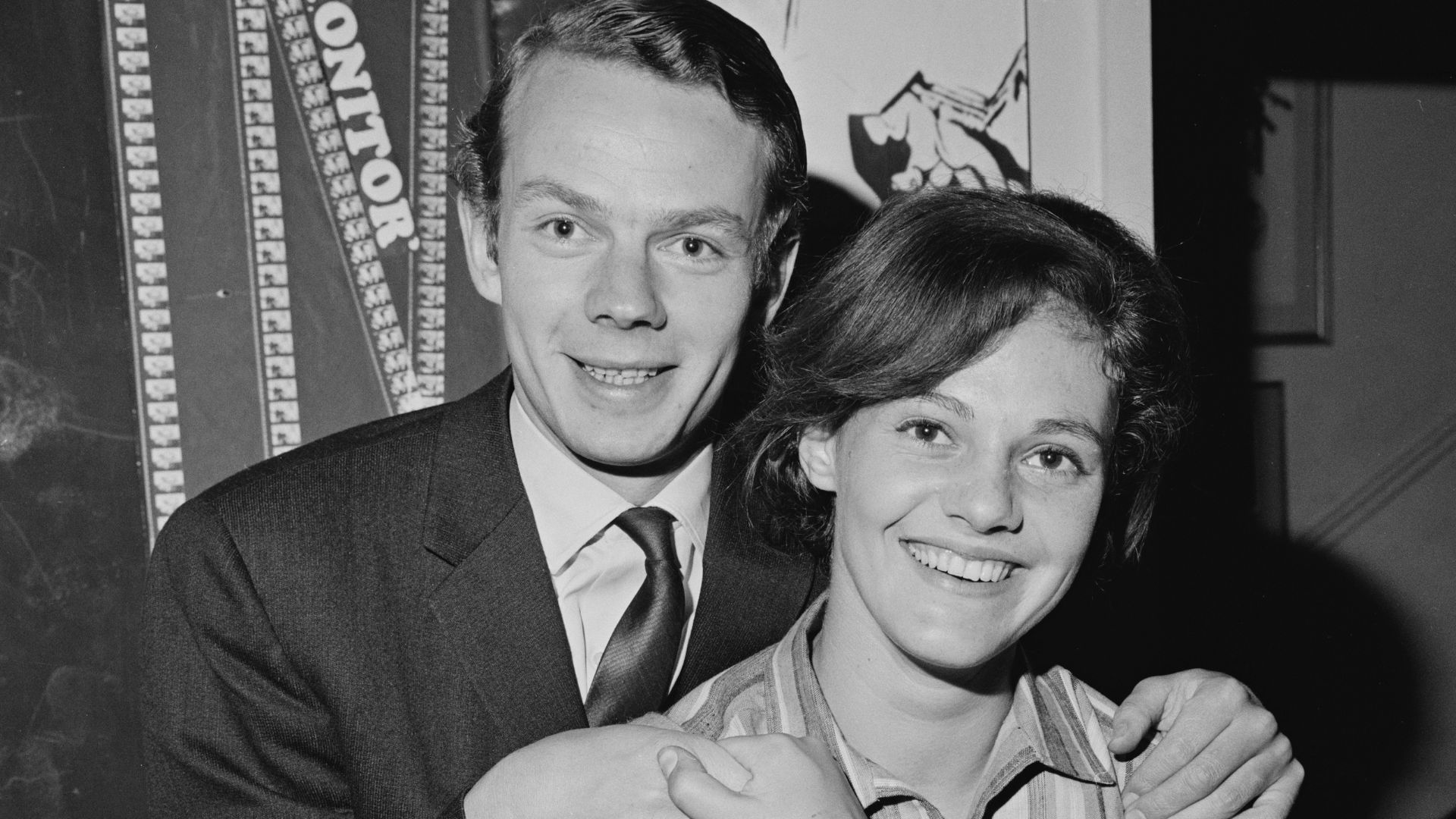
With an appetite for storytelling, Elizabeth Luard has spent much of her life travelling and living in other countries with her work as a journalist and writer allowing her to explore places, people, and culinary traditions with ease. For over 40 years she has contributed to magazines and newspapers, more often than not writing about food and gastronomy.

As a member of the 1953 British Mount Everest expedition, which made the first ever confirmed ascent of the mountain, Jan Morris was the only journalist to accompany the expedition. But perhaps her most famed work is her three history books detailing the British Empire, from the earliest days of the East India Company to the troubled years of independence. In a televised BBC Two interview in 2016, Morris told Michael Palin that she did not like to be described as a travel writer, for her books were not about movement and journeys; they were about "places and people.”
Annie Londonderry

As the first woman to cycle around the world, Annie Londonderry undertook the challenge having never ridden a bicycle until a few days before the trip and as a mother of three young children aged five, three, and two - no mean feat in 1894. The trip took a total of 15 months and when she returned she published an account of her exploits in the New York World becoming a beacon for female independence and adventure.


IMAGES
VIDEO
COMMENTS
Research done by the Global Business Travel Association in cooperation with WWStay reveals a fast-developing irony: Awareness of the risks faced by female travelers in general and female business ...
Here are a few additional statistics regarding women business travelers: It is estimated that women business travelers now constitute nearly fifty percent of all business travel in the United States, holding an annual travel spend of $175B. A survey highlights that 48% of female road warriors are traveling solo.
Female Business Travelers are poised to make up a significant share of the Business Travel Market. They already control 60% of the wealth in the U.S. and influence 85% of all purchasing decisions. Women are high-tech, mobile, connected, and social. They like to book on the move and represent 58% of online sales. Learning how to attract and retain the loyalty of Female Business Travelers is key ...
Key Points. 83 percent of female business travelers reported safety-related incidents in a 2018 survey. Corporate travel policies rarely address the specific safety needs of female travelers.
Women are nearing half of all business travelers, with many more coming from China. Hotels are working overtime to accommodate the needs of one of the fastest growing demographics in the travel ...
ISOS's Sally Llewellyn. More than one in 10 female business travelers (12 percent) said they have experienced a negative incident, ranging from minor theft to assault, when traveling and almost one in five (19 percent) feel their organization should "act with women's safety in mind," such as ensuring flights don't arrive late at night.
Still, research from the Global Business Travel Association found that only 18 percent of corporate travel policies "specifically address matters related to the safety needs of female business travelers." "Women's travel is not a cute little segment of the market—it's almost the entire market," says Beth Santos, founder and CEO of ...
However, they feel more can be done for female business travelers. Over two-thirds (68 percent) of women who travel for work think their company should have polices that specifically address the needs of female business travelers, yet a recent survey of travel buyers revealed only 18 percent report having these gender-specific policies in place.
This report will examine some of the common risks that female travellers face and will also seek to offer recommendations, aimed at travellers and corporate travel managers, to enable them to mitigate risks where possible and ensure a safe environment for their activities. In this report: Overview of Threats to Female Travellers. Sexual violence.
Business travelers play a critical role in supporting the hospitality and tourism industry. Female business travelers now have emerged as a significant and distinctive sector, as they account for nearly half of all business travelers and assume different hospitality needs and preferences (Skift, 2020).Female business travelers are more concerned about their safety during business trips than ...
Women business travellers are on the increase, but remain in the minority, according to research by Mintel: 41 per cent of men had been on a business trip in the past 12 months, compared with 28 ...
A lot has changed since then. According to recent research carried out by Condor Ferries, approximately 84% of all solo travellers are female and 55% of 'Solo travel' Google searches were made by millennial women. But travelling solo as a woman does not come without its challenges. In this comprehensive guide, we give a rundown of our ...
August 1, 2018. For this week's episode, The Business of Travel revisits an important topic - the safety of women business travelers. In the opening segment, GBTA President Christle Johnson talks GBTA priorities and highlights from a recent GBTA research study on female business travel safety conducted in partnership with WWStay.
Assisting Female Business Travelers is Important. Business travel by women is increasing. According to a survey by Maiden-Voyage, 47% of female travelers are traveling on business and 80% of travel is managed by women. In a risk-filled world, corporations need to be mindful of caring for the needs of all their employees.
Here are 12 important safety tips for female business travelers while traveling: 1. Research about the Destination. As a part of the planning process, it is essential to research the place you are visiting. This implies knowing every detail about the area, such as the food, culture, mode of transport, distance from your accommodation to the ...
The best way to start defining a product which will appeal to female business travelers is to say what it should not do: Join the CEOs of Marriott, Wyndham, MGM, and more at the travel industry ...
Women business travelers understand the need to be safe on the road. Tips and life stories from Moraine give you confidence to be safe and still enjoy meeting people. RELEVANT DURING COVID 19. life on the road. Road Warrioress BOOK - For Women Business Travelers. As women business travelers, we know that life on the road can be exhausting ...
As more women take up senior positions, the female traveller is one of the fastest growing segments of the business travel market. With an overwhelming number of all travel decisions made by women, it makes great business sense for hotel and accommodation providers to listen to and address the needs of this influential customer segment.. In fact in 2011, the Cornell School of Hotel ...
Female business travelers face special challenges. In an increasingly global marketplace, crossing borders for business has become routine. Navigating an unfamiliar country or culture can be ...
According to a survey of business travellers commissioned by World Travel Protection, more than one in 10 female business travellers (12 percent) said they had experienced a negative incident, ranging from minor theft to assault when travelling. Almost one in five (19 percent) feel their organisation should "act with women's safety in mind ...
From 6,000 Europeans in a travel survey, just 38.1% of people who travel for business were female. [TravelDailyNews] Only 38.1% of European business travelers are female. Again, this statistic shows that there is still a disparity between male and female in business travel. 32. In 2015, quitting day jobs and travelling the world became a trend ...
BUSINESS TRAVEL . Want the best business travel tips for women? From business clothes to packing for carryon and travel essentials, we have articles featuring the best business travel tips for women. Plan the perfect travel wardrobe with our packing tips! And don't forget to download your free printable packing checklist!
The 'Business Class' tour experience you deserve. Stylish, hand-picked hotels, top-rated dining and stress-free travel with your female Travel Director taking care of the details. ... Norway and Sweden consistently rank as some of the world's safest countries for solo women travelers, while our women-only trips take you to more amazing ...
Business Analysis World Politics Climate Entertainment Sport Technology Science Get all your news in one place. 100's of premium titles. ... Often credited as the world's first solo female travel writer, Ida Pfeiffer traveled extensively across Southeast Asia, the Middle East, and Africa, including two trips around the world from 1846 to 1855
The case against the pair went to trial nine years after federal authorities searched more than a dozen homes across Southern California in a crackdown on so-called birth tourism operators who authorities said encouraged pregnant women to lie on their visa paperwork and hide their pregnancies and helped the women travel to deliver their babies ...